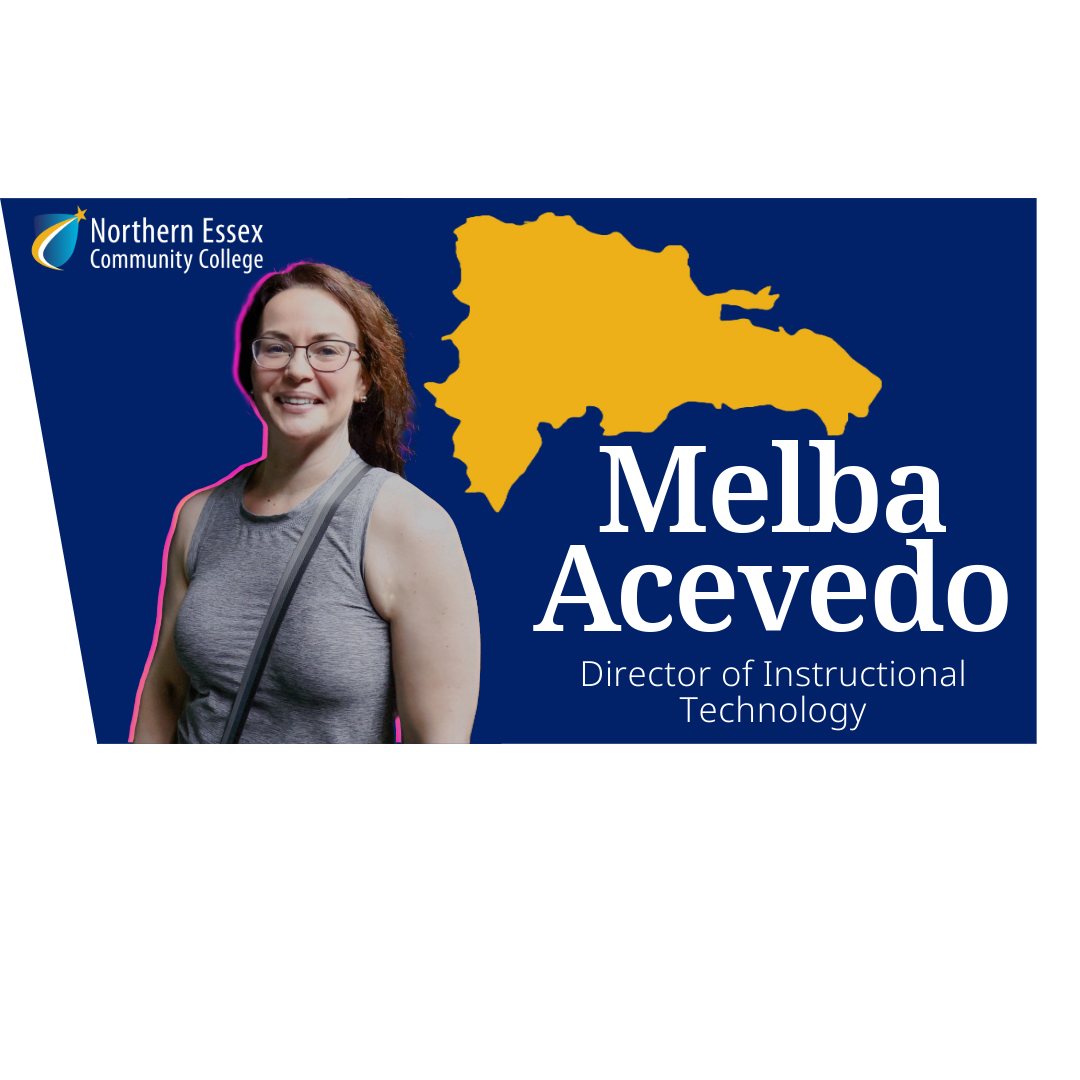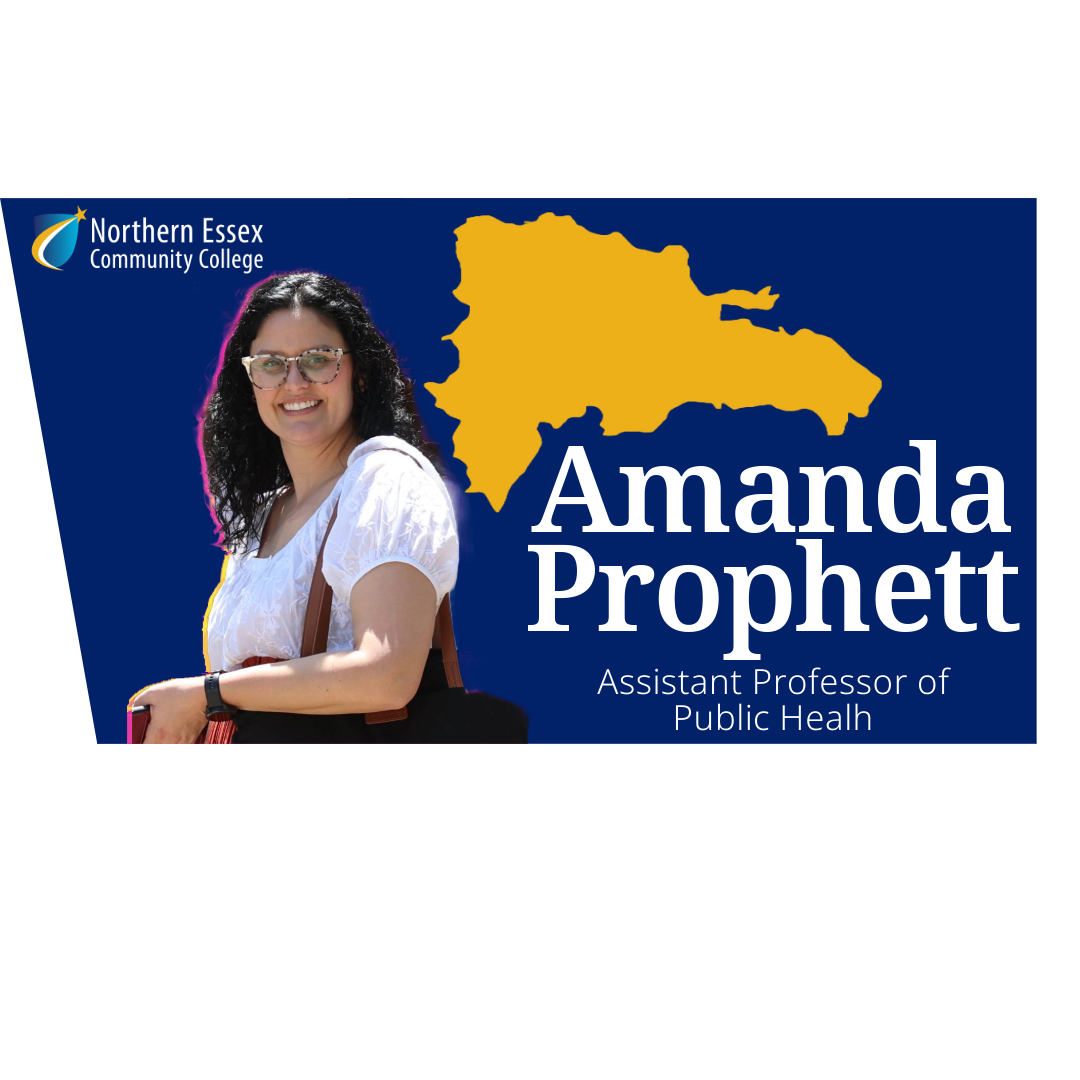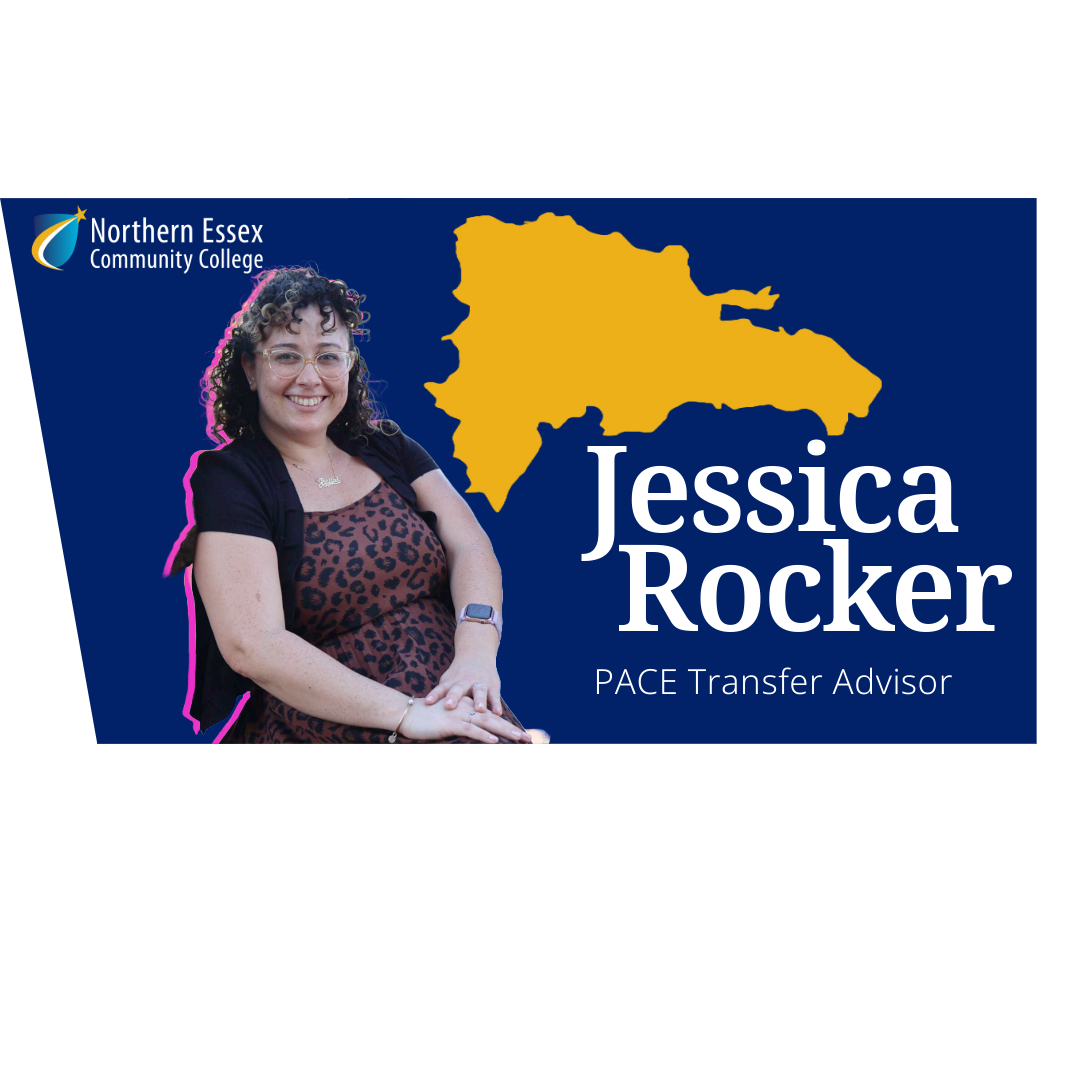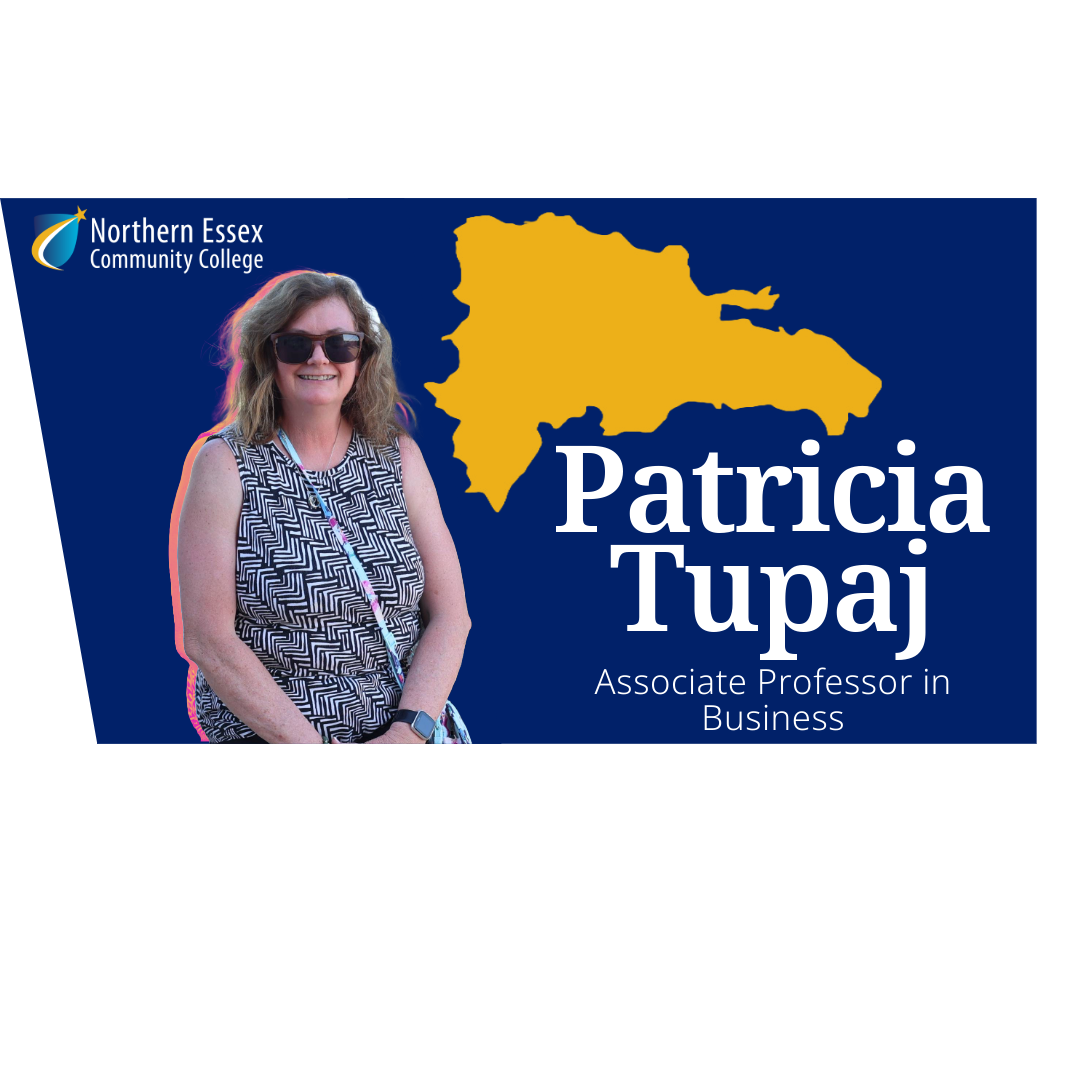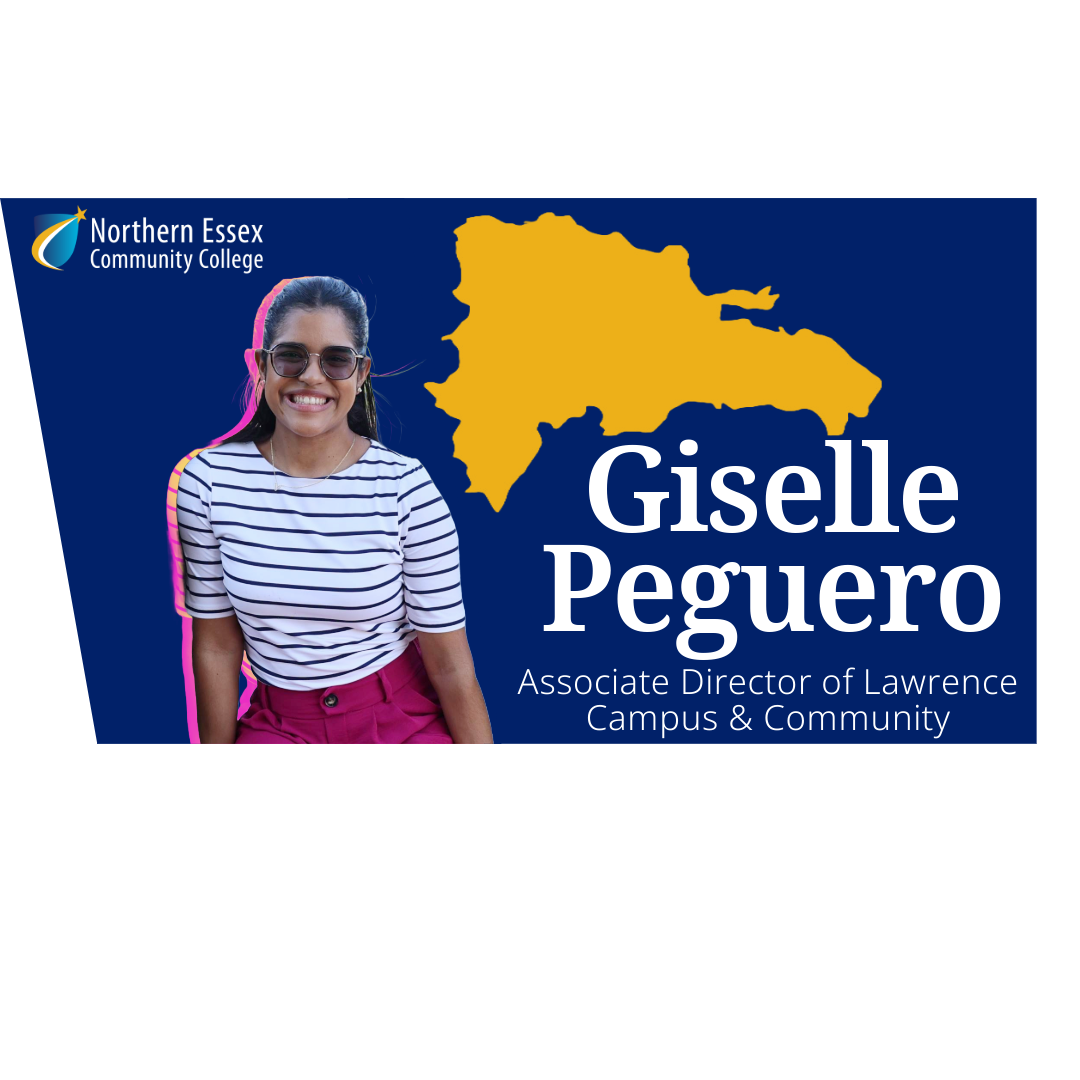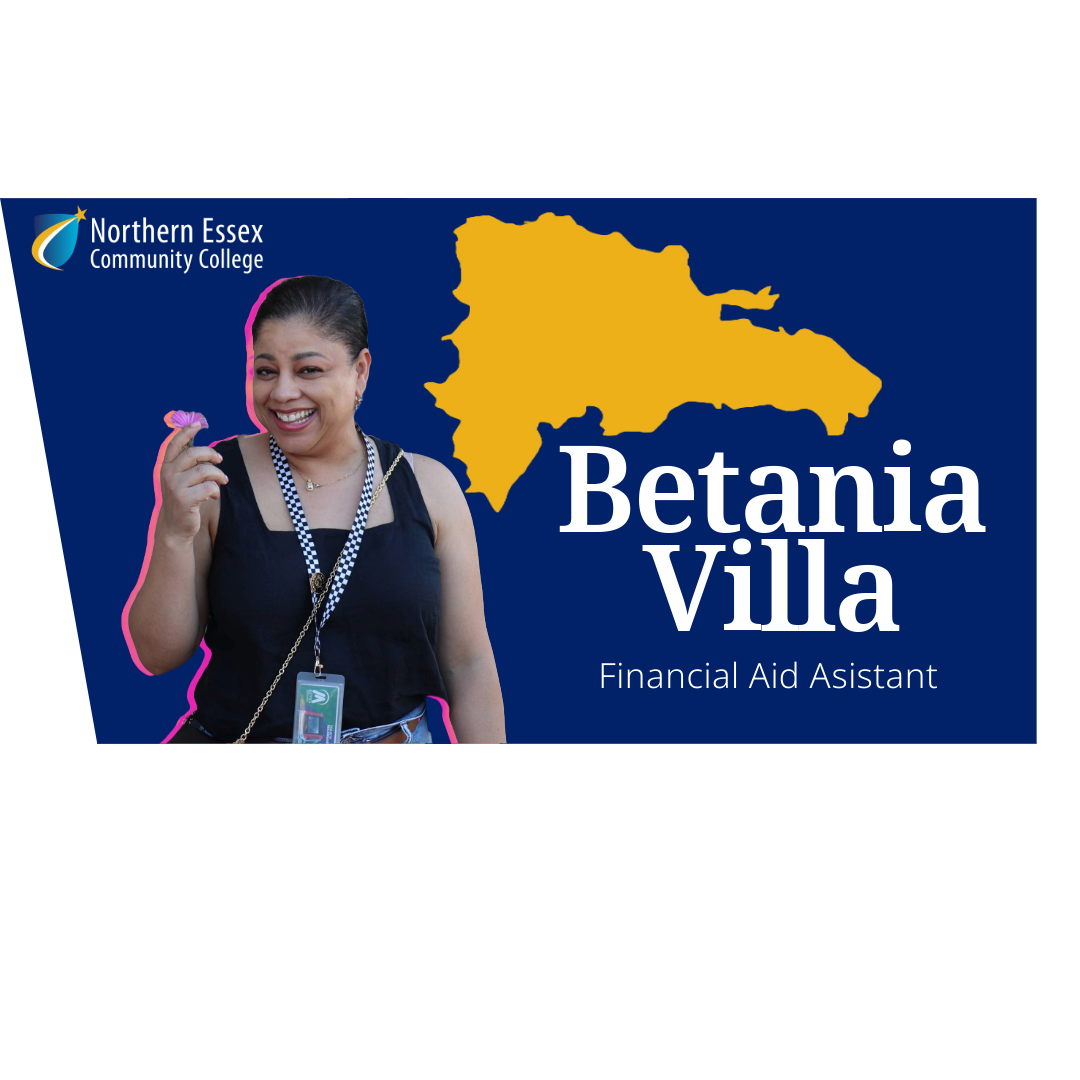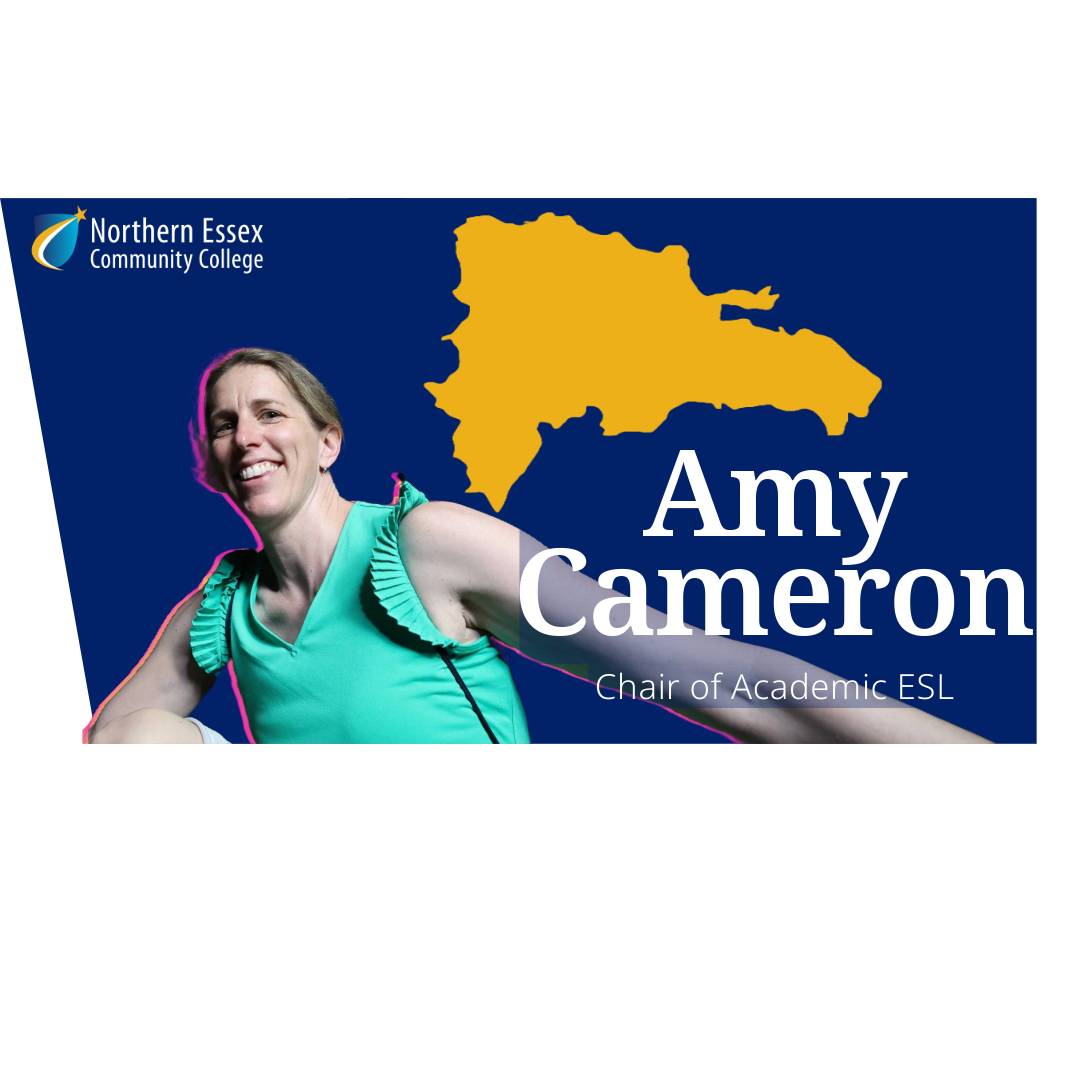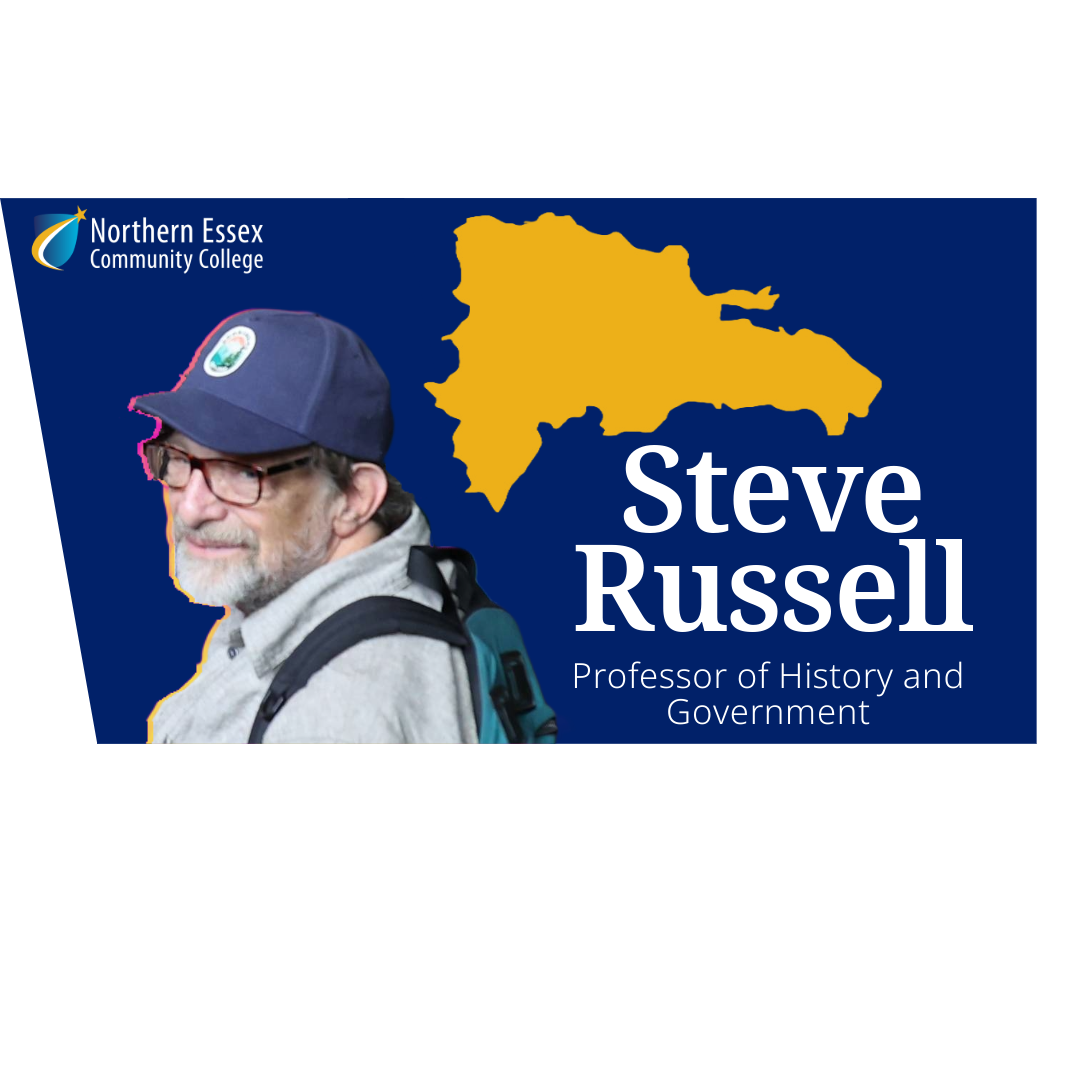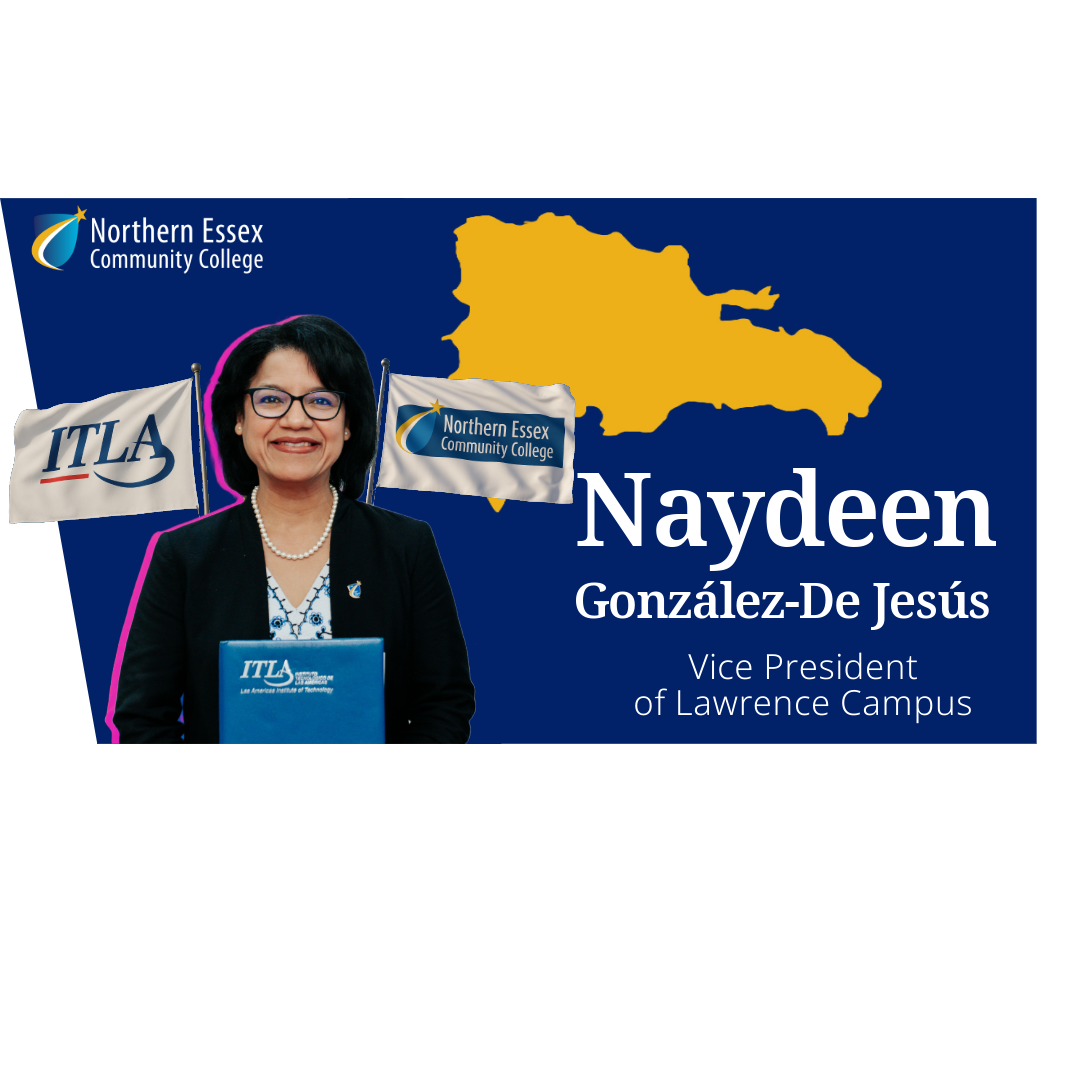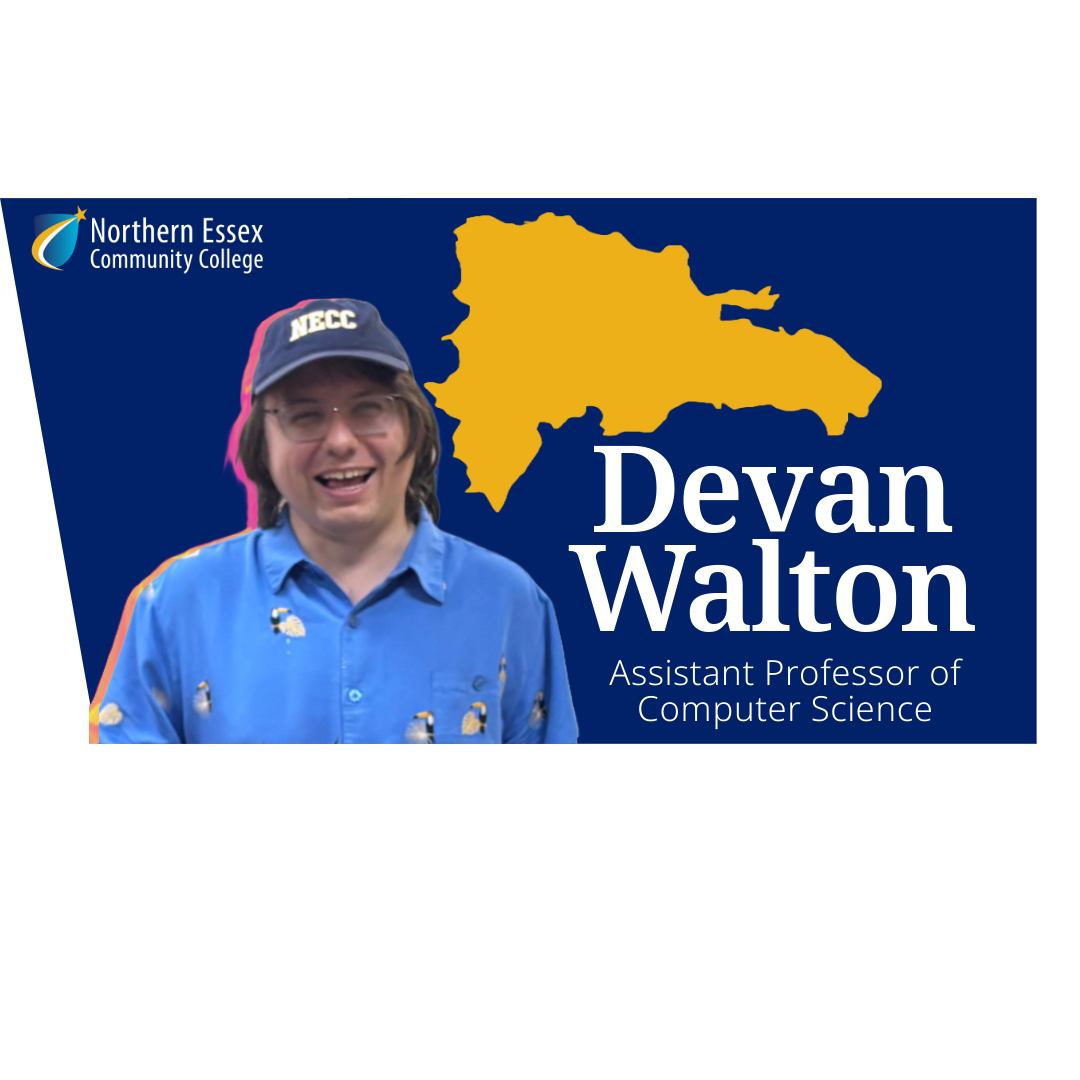International Immersion Team 2025
Our delegation to the Dominican Republic represented a diverse cross-section of Northern Essex Community College faculty, staff, and administrators. Throughout our journey from March 16-23, 2025, this dedicated team engaged with Dominican educational institutions, cultural landmarks, and community partners to establish meaningful connections and explore collaborative opportunities. Each member brought unique expertise and perspective, contributing to the insights gained during our visit. From formal partnership agreements with UCE and ITLA to cultural explorations of historical sites, and from culinary adventures to natural wonders, our team embraced every aspect of this immersive experience. The professional bonds formed within our delegation were strengthened by shared discoveries, challenges, and memorable moments, creating a cohesive unit united in our commitment to expanding NECC's global engagement.
Tuesday, March 16, 2025
Our Travel and Early Exploration Day
Las Américas International Airport
March 16, 2025 (12:58 PM)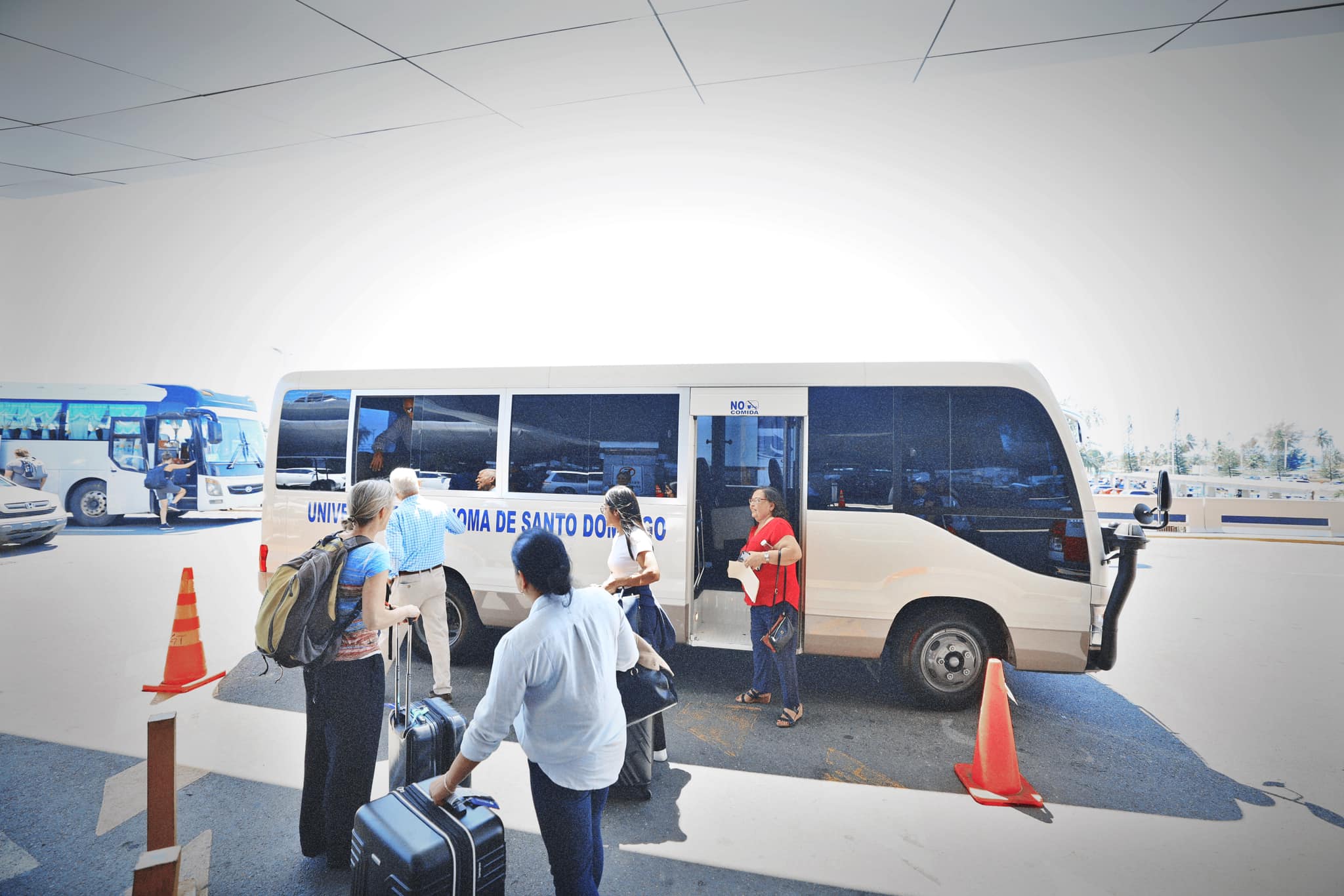
We arrived at the Santo Domingo airport and boarded the bus we would be using for our time in the Dominican Republic. We met Clara, a former professor at UASD and our liaison with the various institutions in the Dominican Republic, who is visible in red. Her son Rafael, our translator and cultural mediator, and Julio, our driver, were also there to welcome us to this beautiful country.
Garden Cafe
March 16, 2025 (1:40 PM)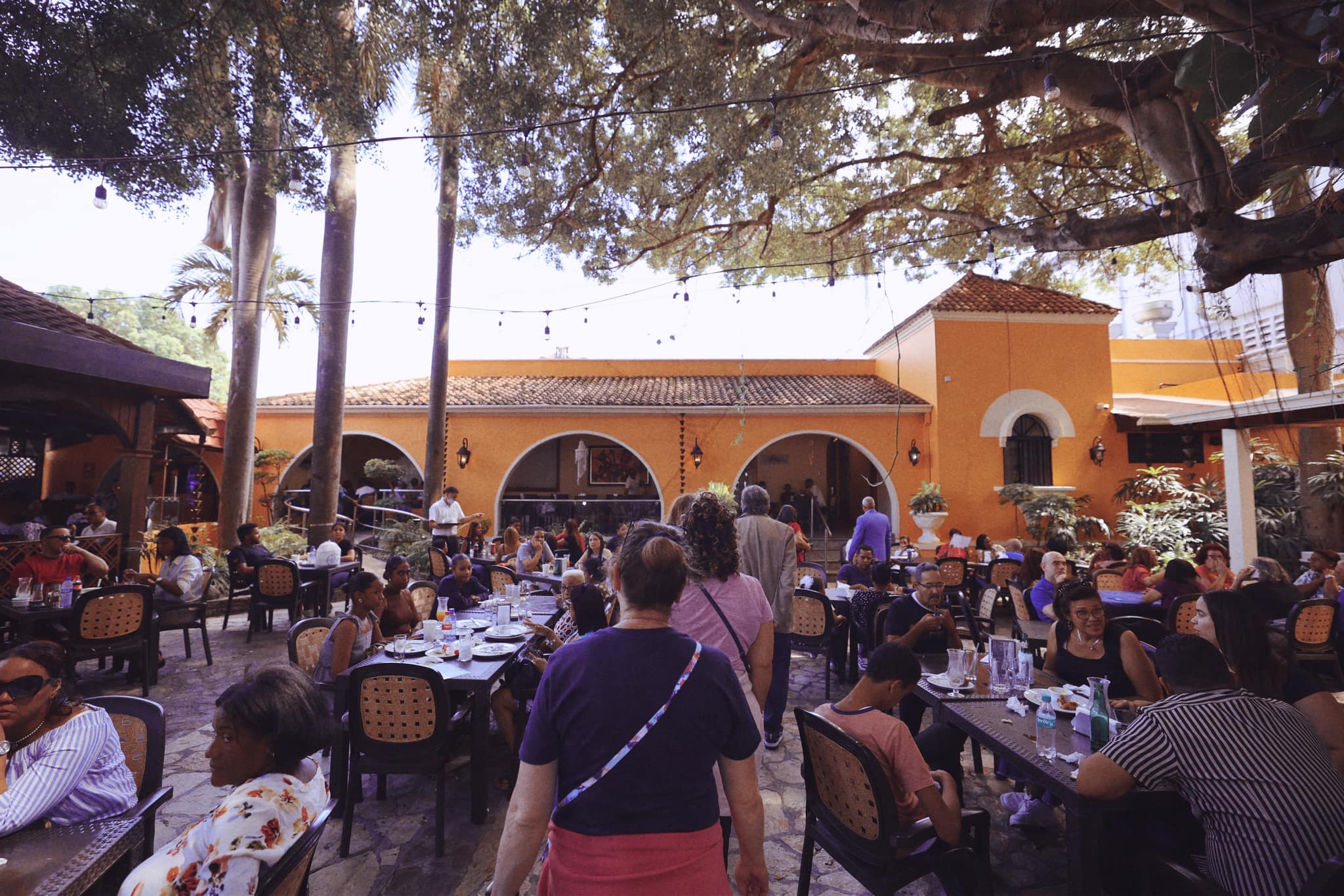
After leaving the airport, our first proper stop in Santo Domingo was the charming Garden Cafe. Nestled in the heart of the capital, this oasis offered a perfect introduction to Dominican culture. The courtyard's lush greenery provided welcome shade from the afternoon sun as we sipped on freshly brewed Dominican coffee. Local artwork adorned the walls, giving us our first taste of the rich cultural heritage that makes Santo Domingo the oldest European-established city in the Americas. This serene setting was the ideal place to gather our thoughts and plan our exploration of this vibrant Caribbean capital.
Novus Plaza Hodelpa
March 16, 2025 (4:13 PM)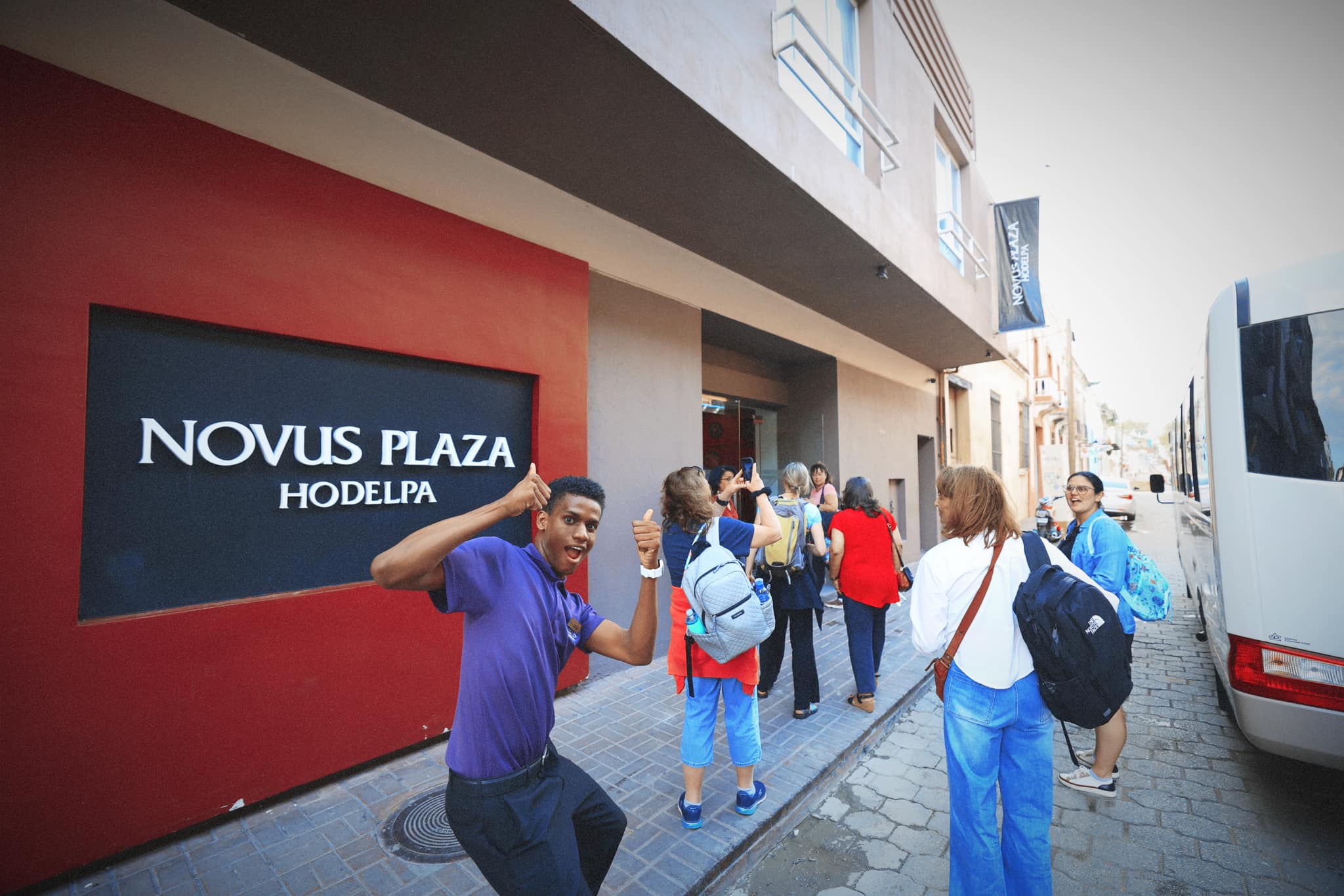
After our refreshing lunch at the Garden Cafe, we made our way to the Novus Plaza Hodelpa, nestled in the heart of Santo Domingo's historic Zona Colonial. The journey there was an adventure in itself, with our skilled driver Julio showcasing impressive maneuvering techniques as he navigated backwards down narrow cobblestone streets to make some of the tight corners characteristic of this UNESCO World Heritage district. Upon arrival, we were greeted enthusiastically by hotel staff outside the distinctive red and black façade of the hotel. The charming colonial architecture of the surrounding area immediately transported us back in time, setting the perfect backdrop for our exploration of the oldest European settlement in the Americas. Despite the afternoon heat, the energy of the Zona Colonial was palpable as we prepared to settle in for our stay.
Parque Colón Evening Exploration
March 16, 2025 (6:30 PM)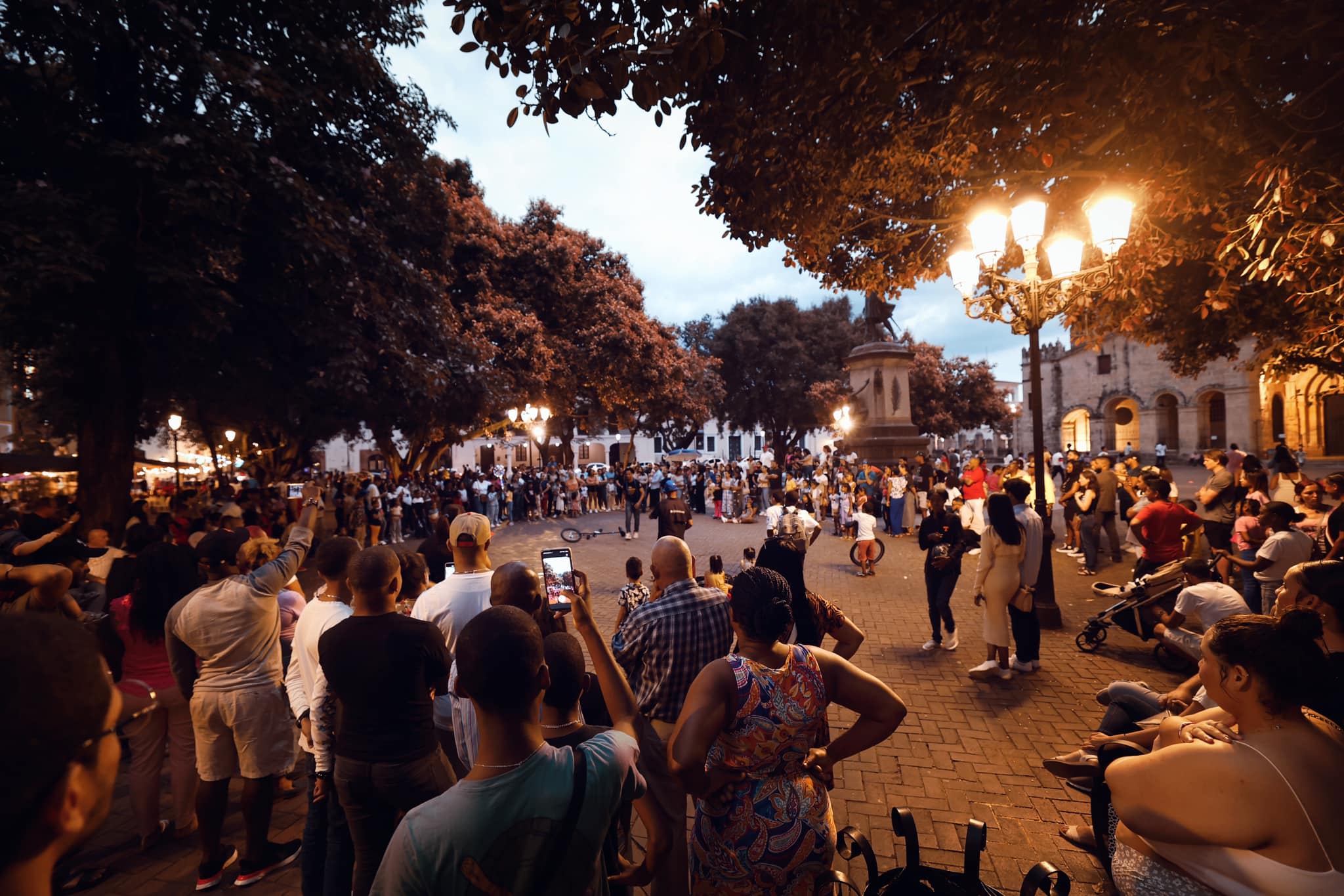
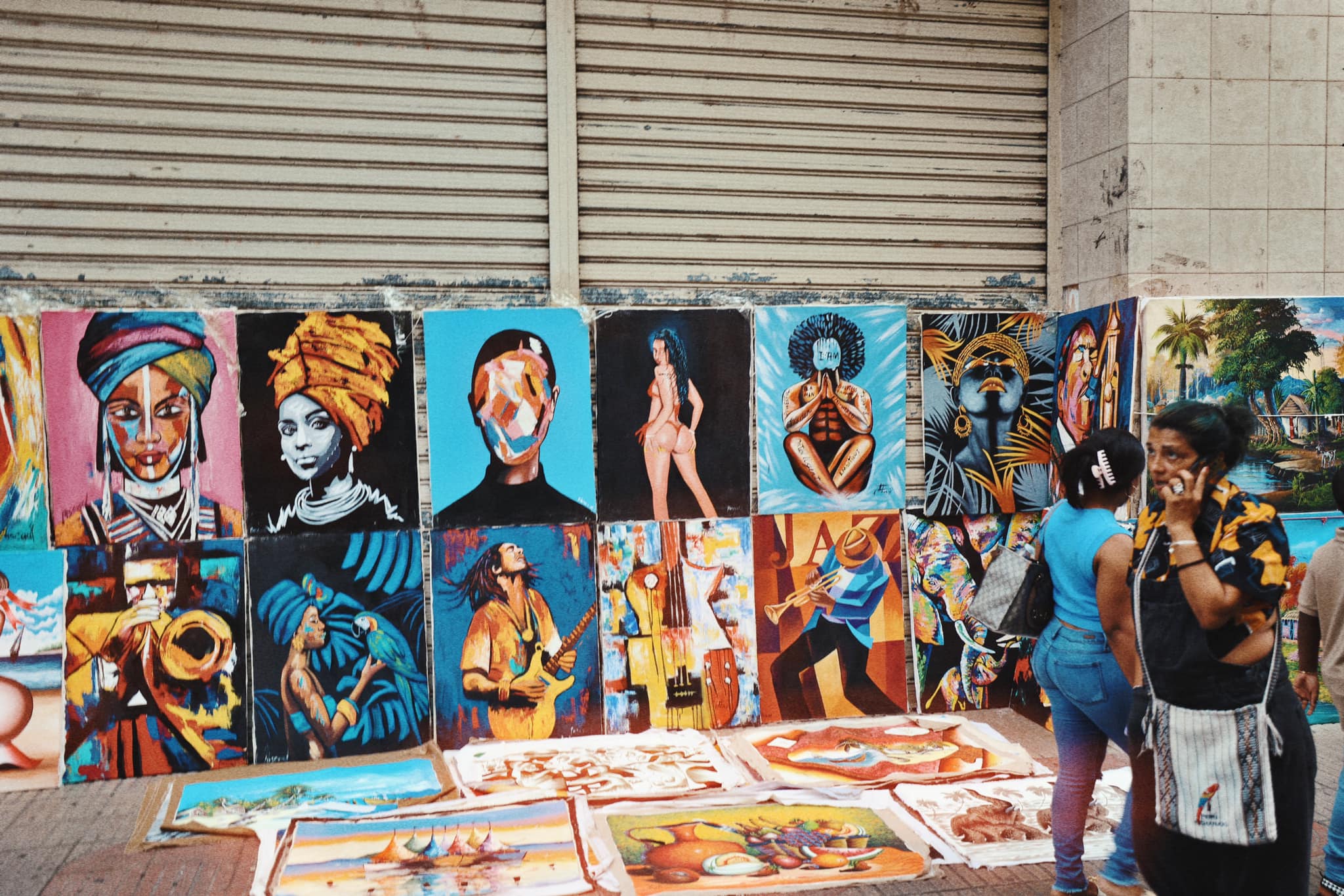
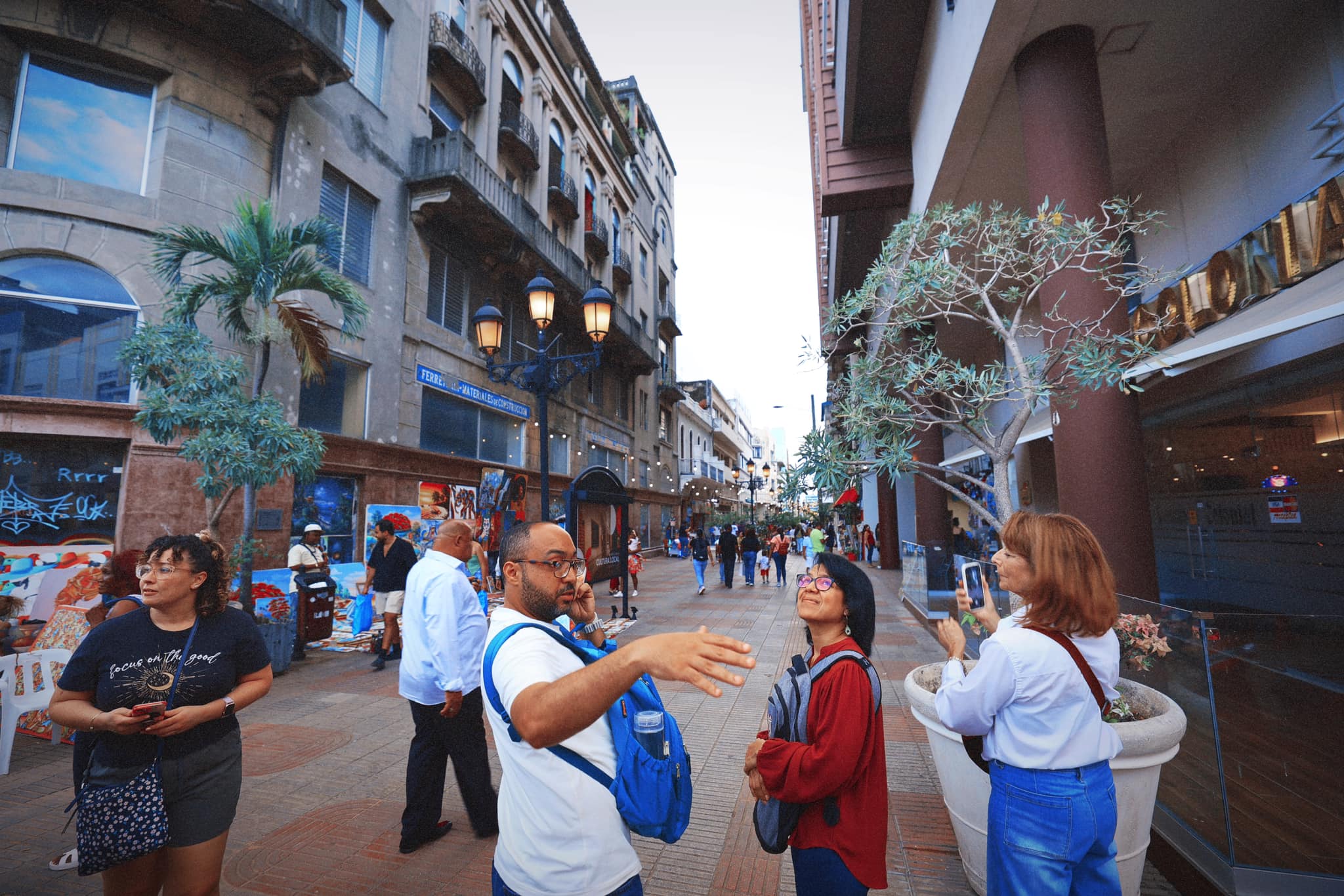
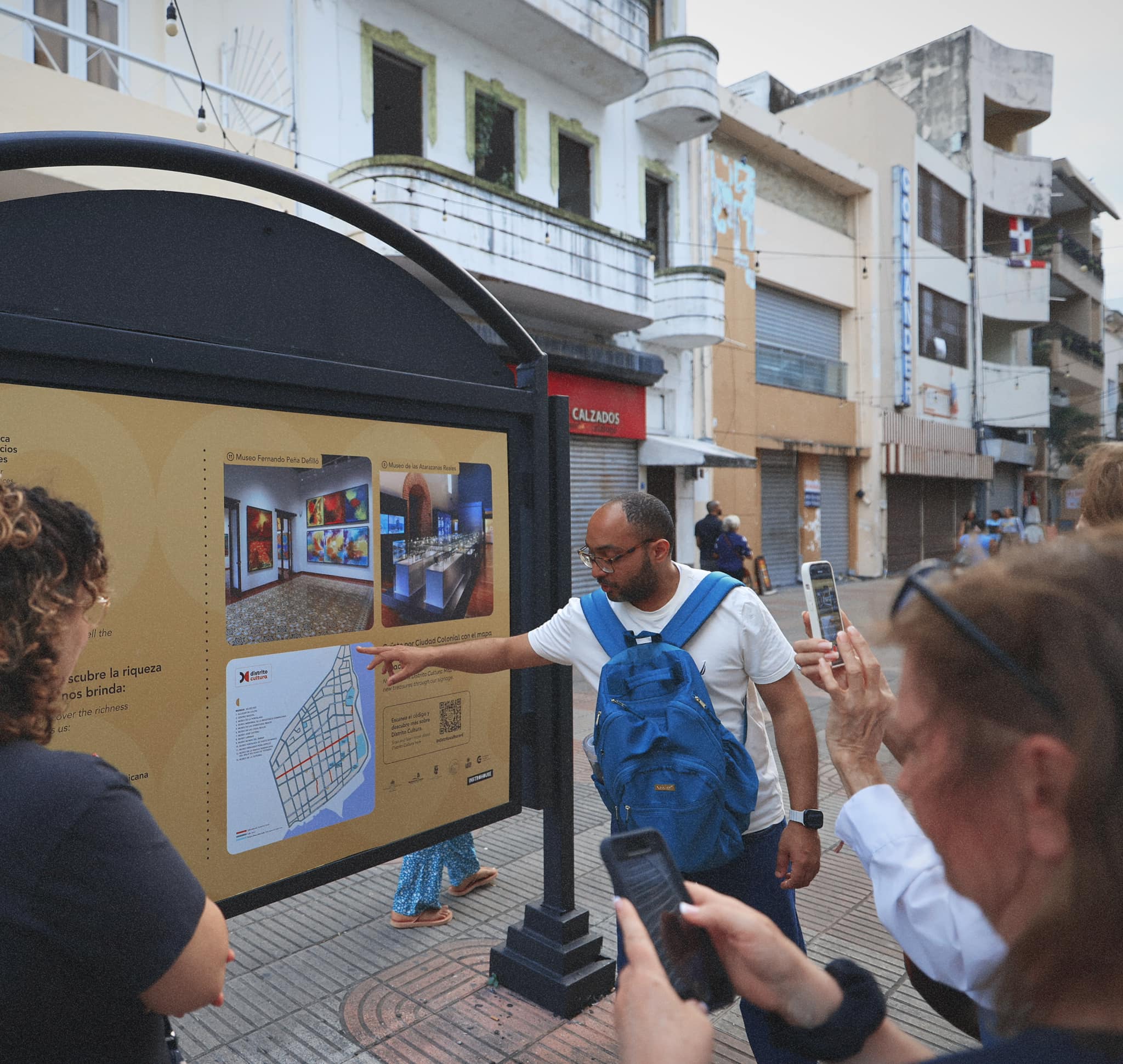
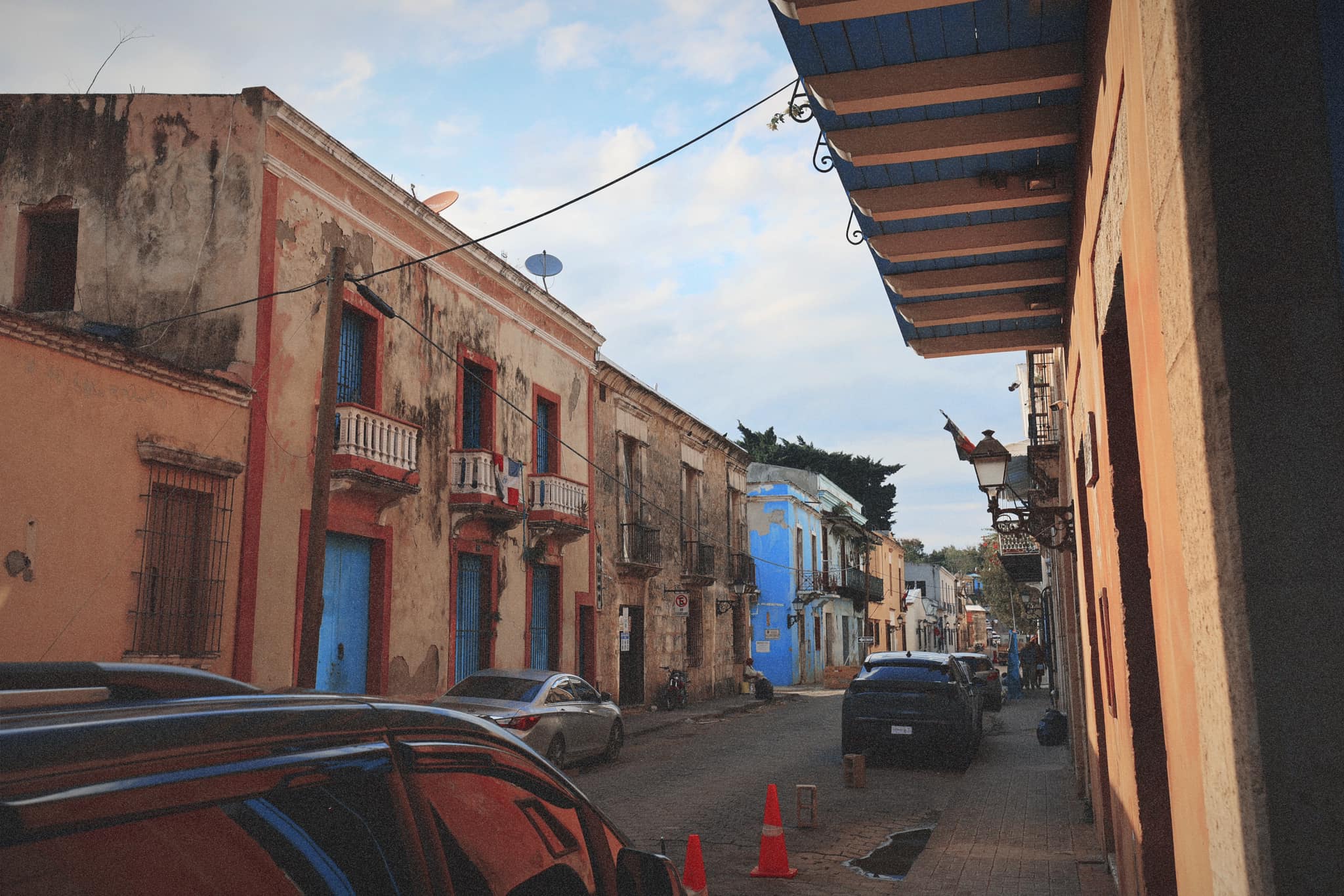
After settling into our rooms at Novus Plaza Hodelpa, Rafael, our enthusiastic local guide, took us out to explore the vibrant heart of Zona Colonial. The evening was just beginning to come alive as we arrived at Parque Colón, the central square named after Christopher Columbus, whose statue stands prominently in the center. The square was buzzing with activity - locals and tourists gathered in a large circle to watch skilled street performers, while the warm glow of colonial-era lampposts created a magical atmosphere against the darkening sky. As we wandered the surrounding areas, we encountered numerous local artists displaying their vibrant works depicting Dominican culture, music, and history along the storefronts. Rafael guided us through El Conde, the famous pedestrian street lined with colonial buildings featuring intricate ironwork balconies and pastel facades. He pointed out historical landmarks, stopping at information signs to explain the rich cultural heritage that makes Santo Domingo's Zona Colonial a UNESCO World Heritage site. The blend of history, art, and lively street life created an unforgettable first evening in the oldest European city in the Americas.
Tuesday, March 17, 2025
Our School Visits Begin
Instituto Técnico Superior Comunitario
March 17, 2025 (8:30 AM)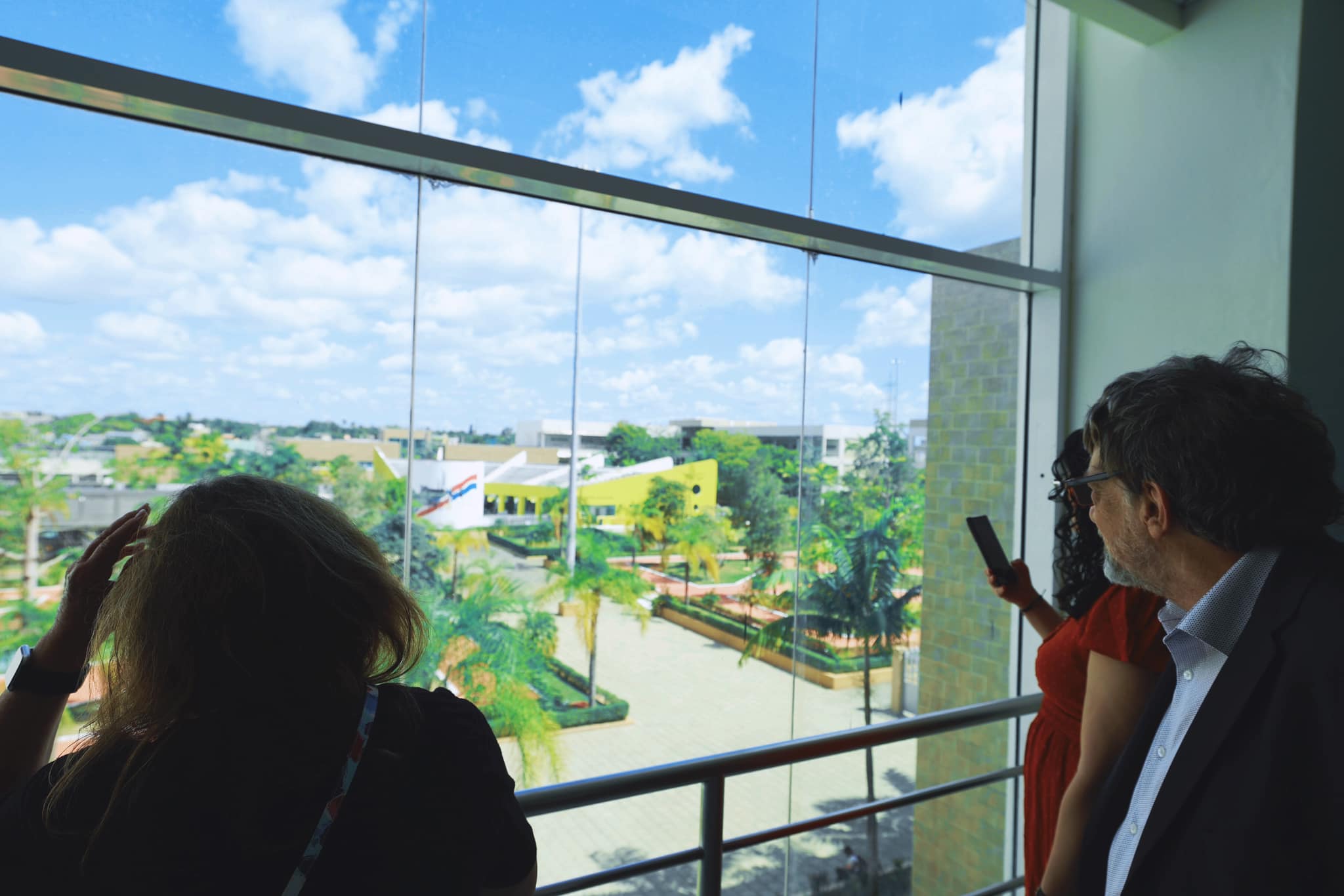
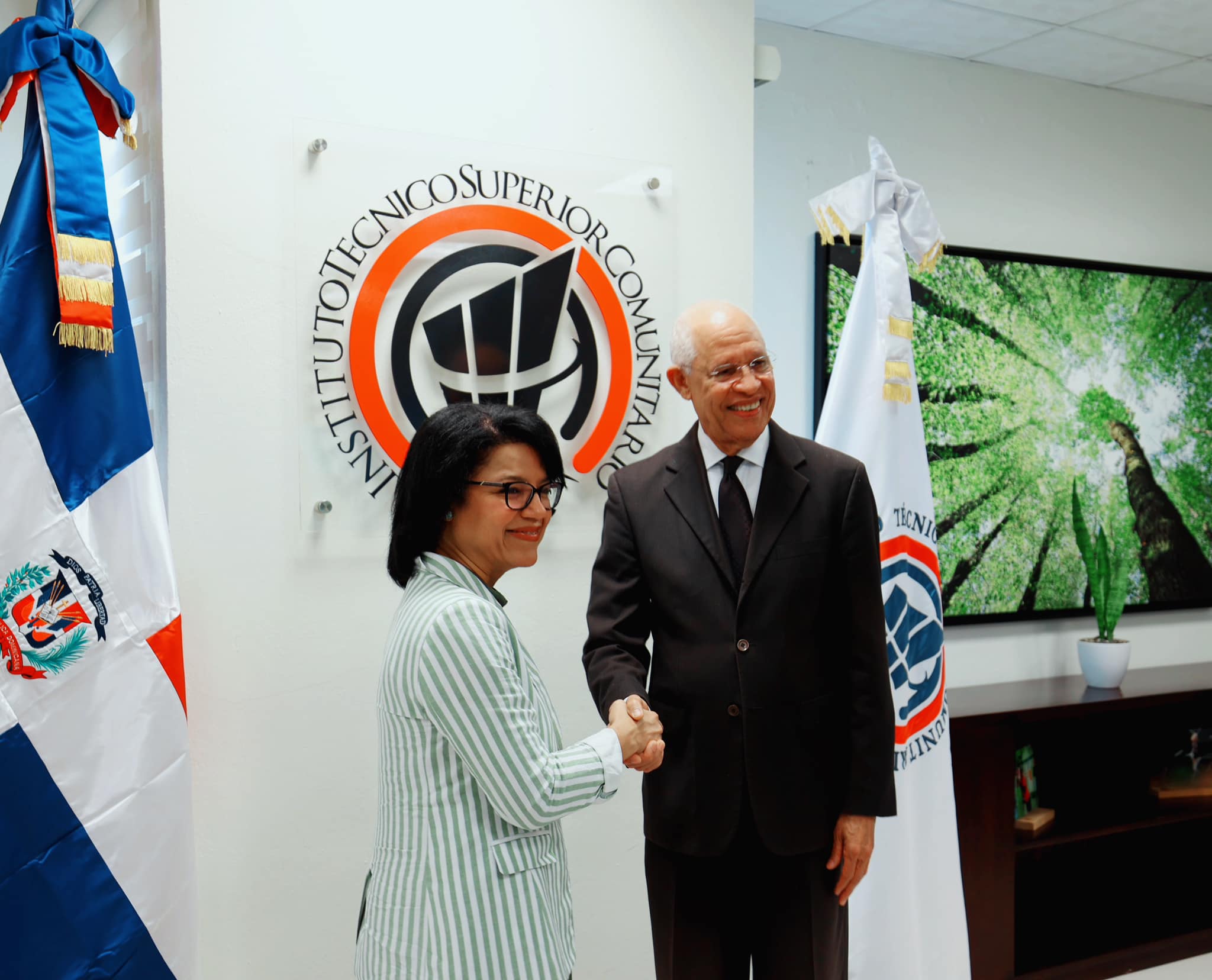
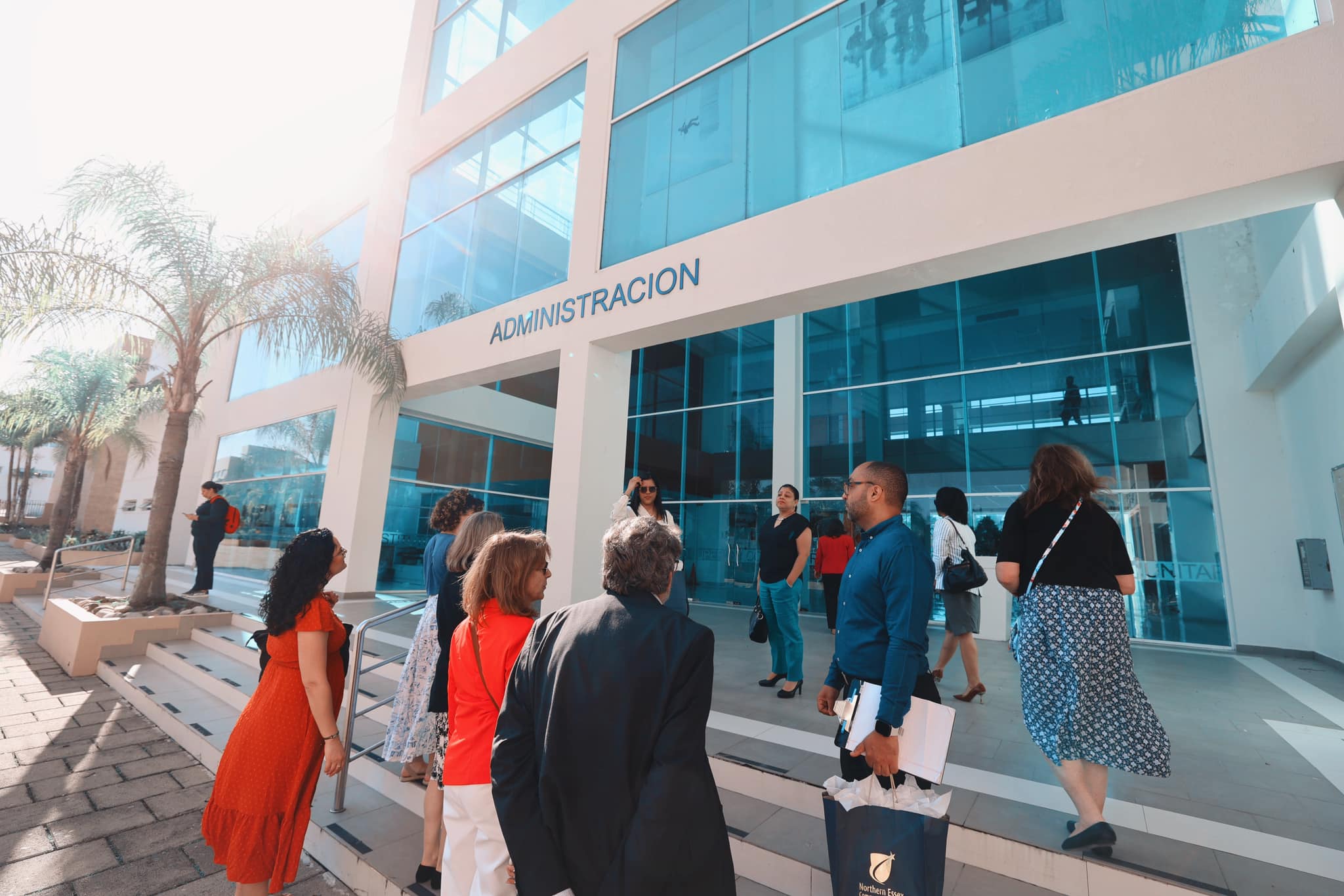
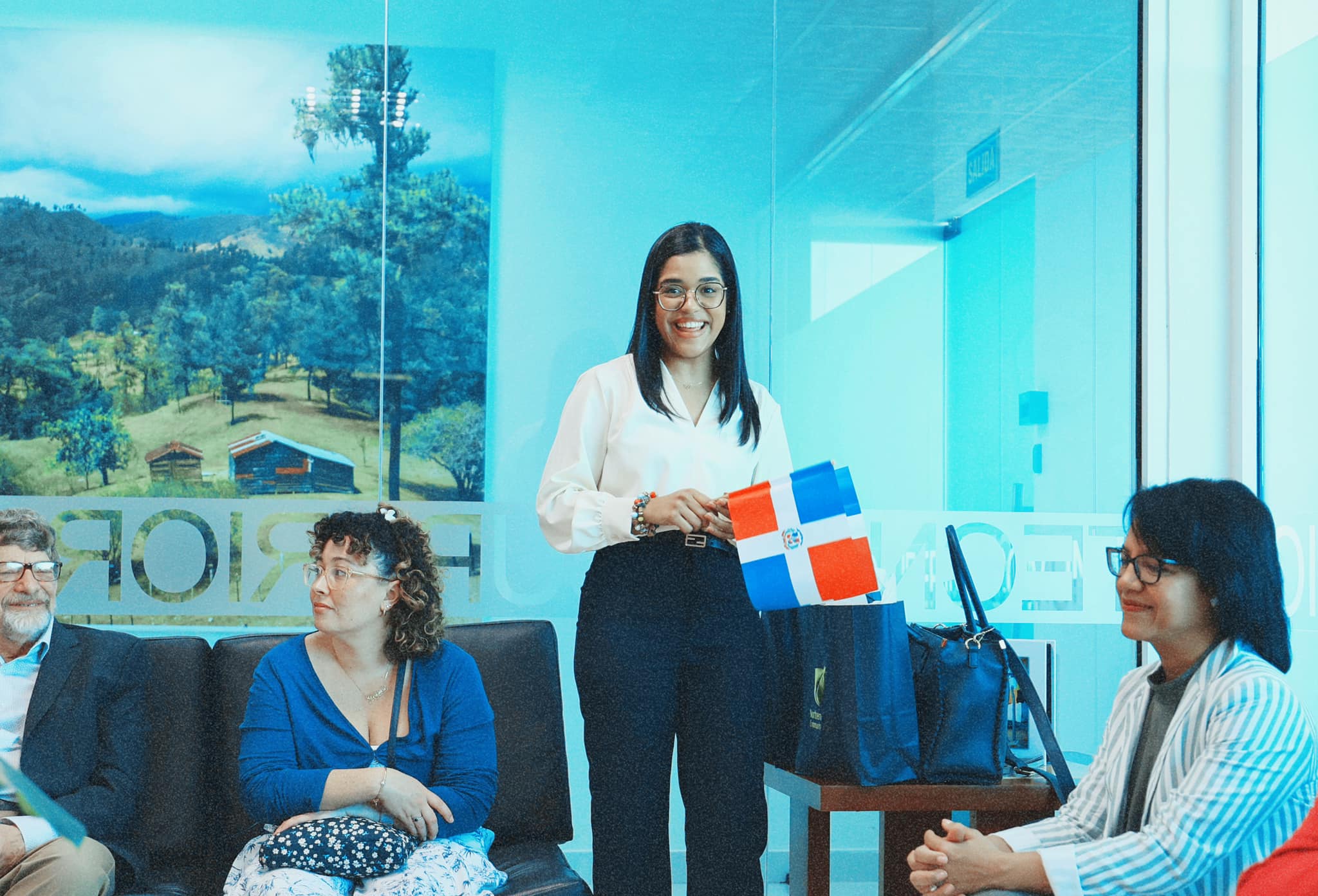
Our second day in Santo Domingo began with an early morning visit to the Instituto Técnico Superior Comunitario (ITSC), a modern technical education campus located just outside the city center. Upon arrival at 8:30 AM, we were immediately struck by the contemporary architecture of the administrative building, with its impressive glass façade reflecting the morning sunlight. Our hosts greeted us warmly at the entrance, where our group gathered before proceeding inside. The campus design beautifully integrates educational facilities with lush green spaces, creating an inviting learning environment. From the upper floors, we enjoyed panoramic views of the carefully landscaped grounds dotted with palm trees and tropical plants that provide natural shade and cooling throughout the campus. During our official welcome, we had the honor of meeting with institutional representatives, including the rector, Dr. José Ramón Holguín Brito. As we toured the facilities, our guide explained how the campus was designed to provide state-of-the-art technical training while maintaining harmony with the natural environment. The modern, open spaces and abundance of natural light throughout the buildings created an atmosphere conducive to learning and collaboration, making it clear why ITSC has become a model institution for technical education in the Caribbean region.
Instituto Tecnológico de Las Américas (ITLA)
March 17, 2025 (11:30 AM)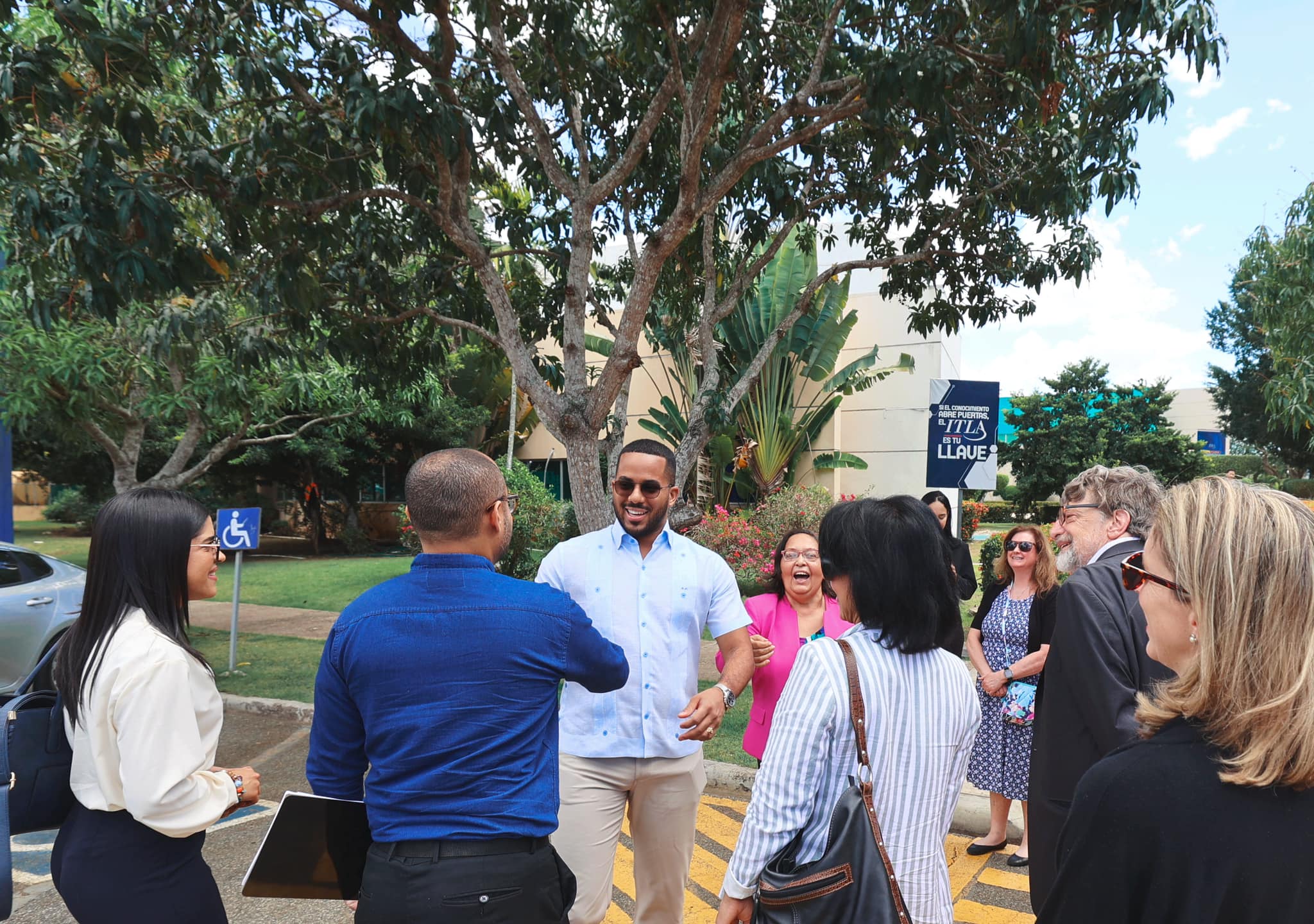
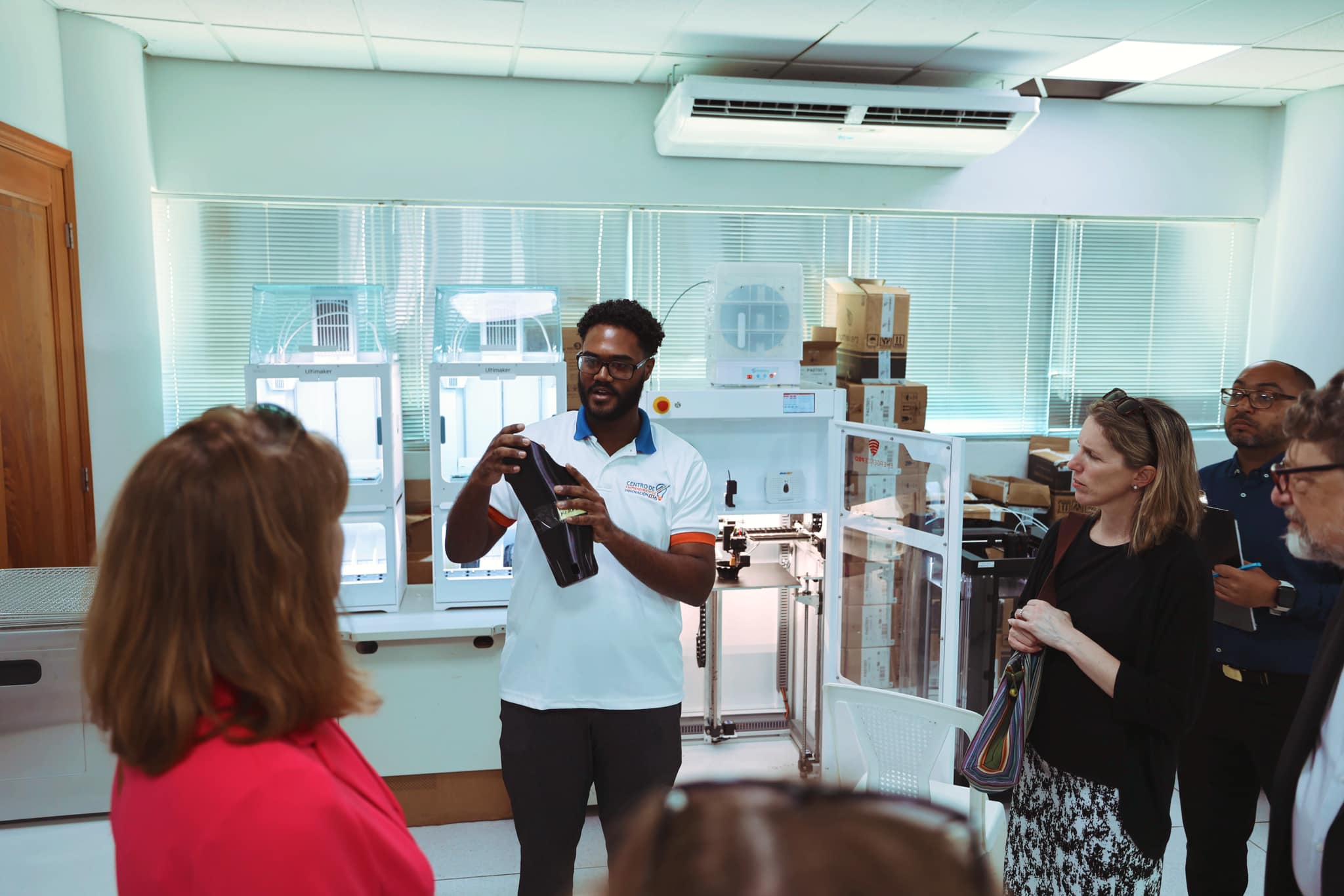
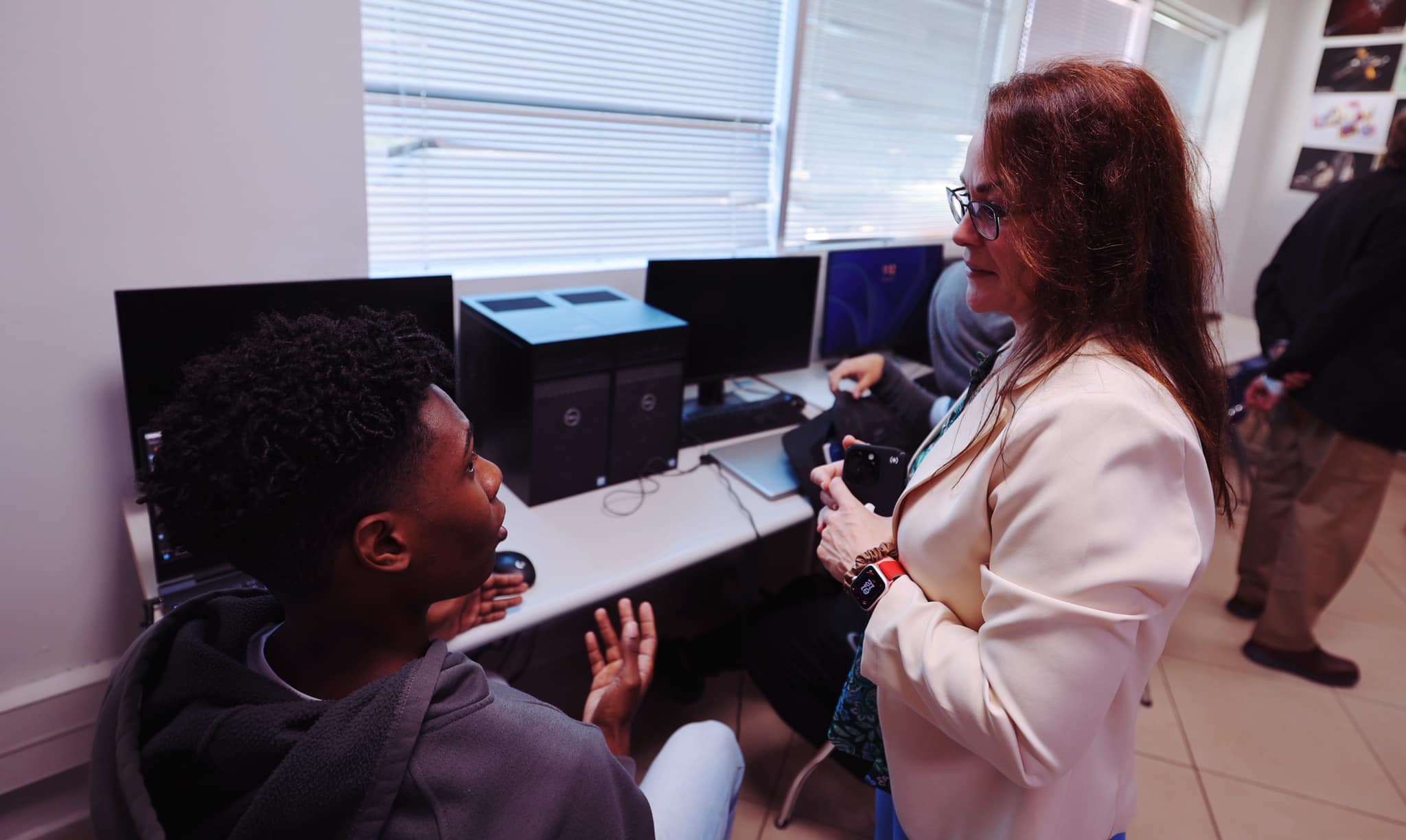
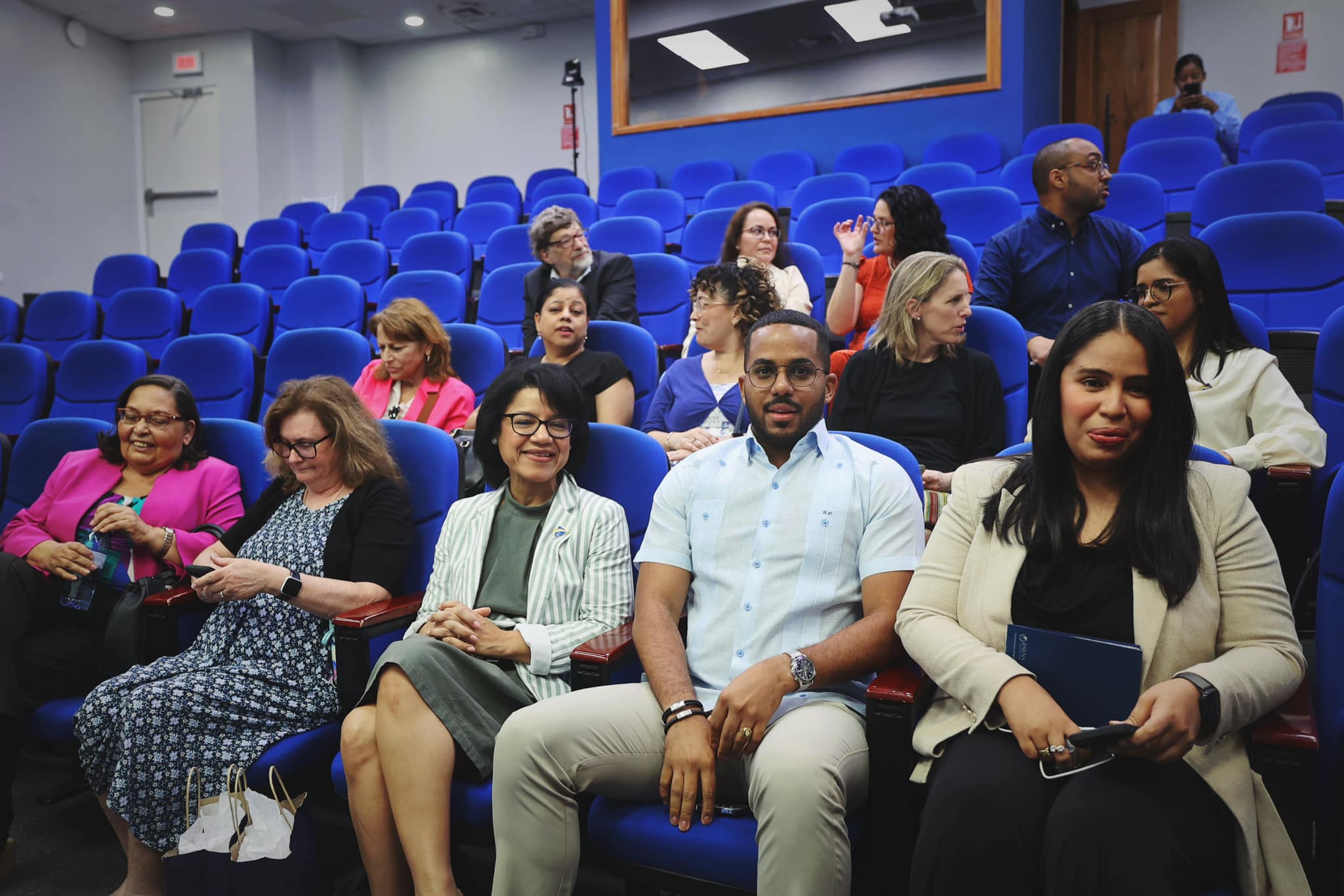
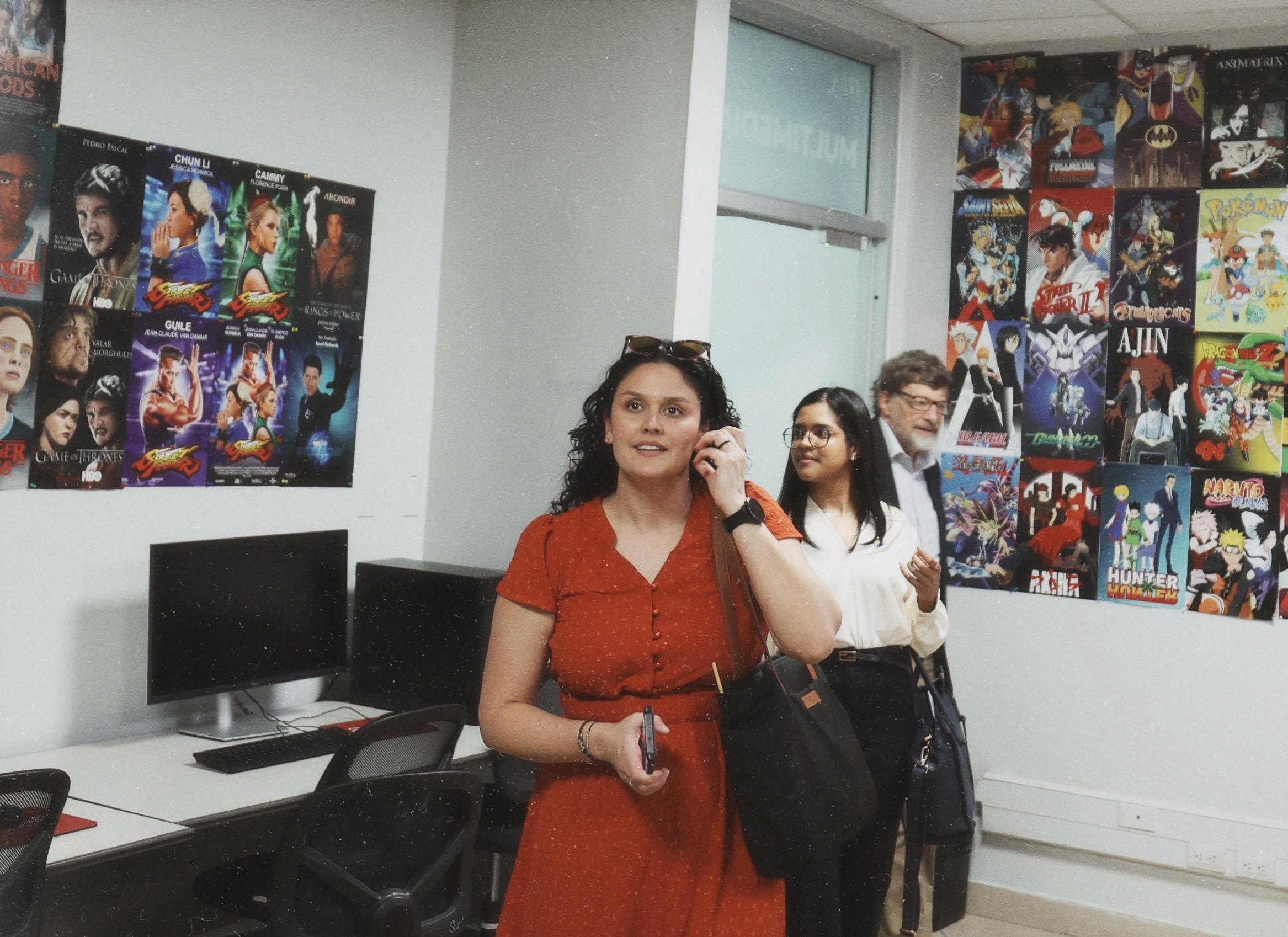
Our educational tour continued with a visit to the Instituto Tecnológico de Las Américas (ITLA), where we were warmly received by Rafael Féliz García, the youngest rector in the Dominican Republic. Rector Féliz García enthusiastically shared ITLA's vision for technology education in the Caribbean. The institution's focus on cutting-edge technology became immediately apparent as we moved from the welcoming reception to specialized learning spaces throughout the campus. In the digital art studio, we observed students working on advanced design projects while instructors provided insights into how these skills translate to industry opportunities in the region. One of the most impressive stops on our tour was the makerspace lab, where students demonstrated their work creating prosthetics for local hospital patients. We watched in fascination as they explained the entire process, from digital design to 3D printing and final fitting. The collaboration between ITLA and healthcare providers exemplified the real-world impact of the institution's technological focus. Throughout our visit, both students and faculty demonstrated a remarkable enthusiasm for showing us their work, with animated explanations and hands-on demonstrations of their equipment. The comfortable lecture hall where we gathered for presentations featured the signature blue seating that seemed to be a staple of educational institutions in the country. As we concluded our visit, the evident pride of everyone at ITLA in their contributions to technological advancement and community service left a lasting impression on our group.
Ygom Restaurant - Boca Chica
March 17, 2025 (2:30 PM)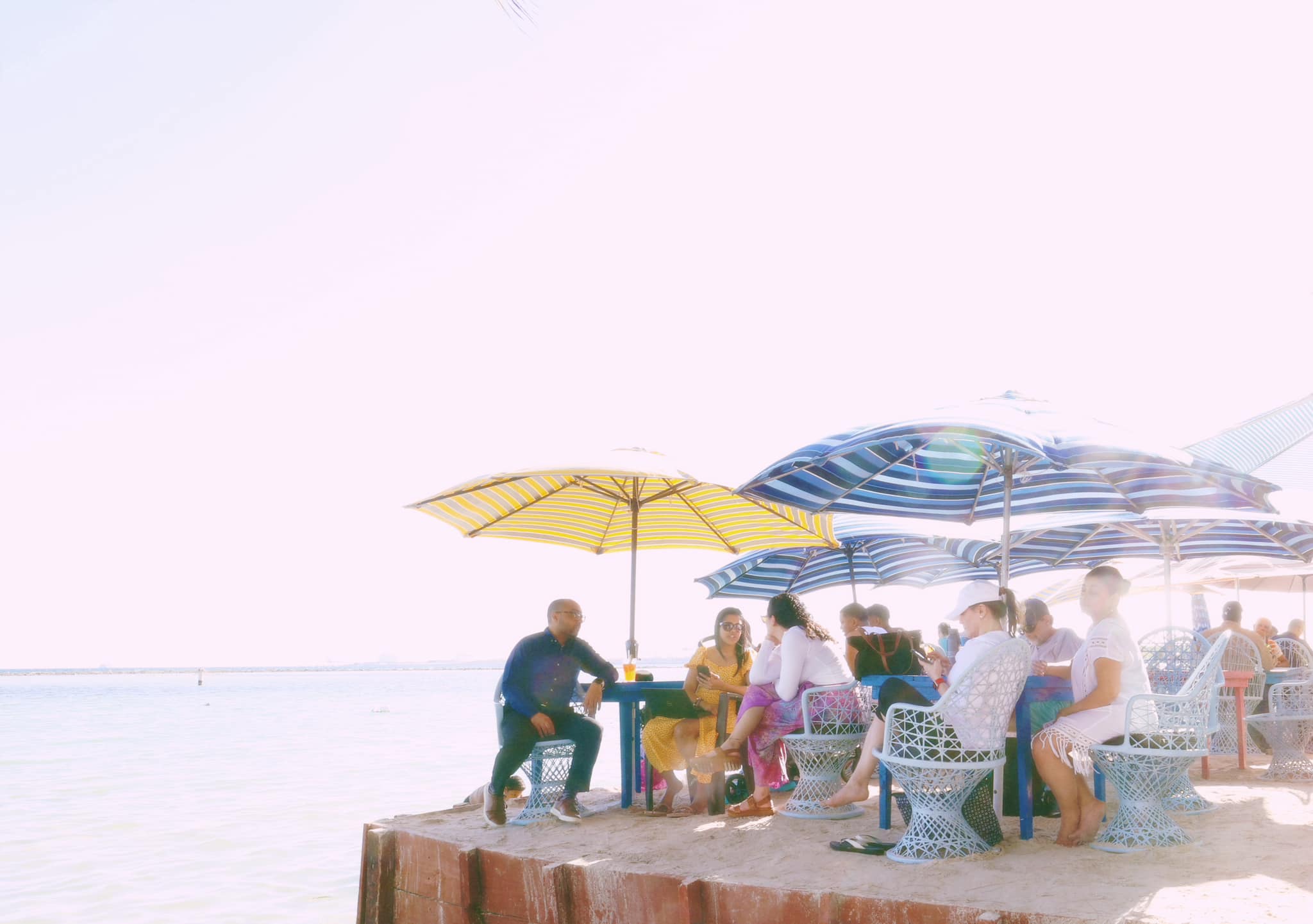
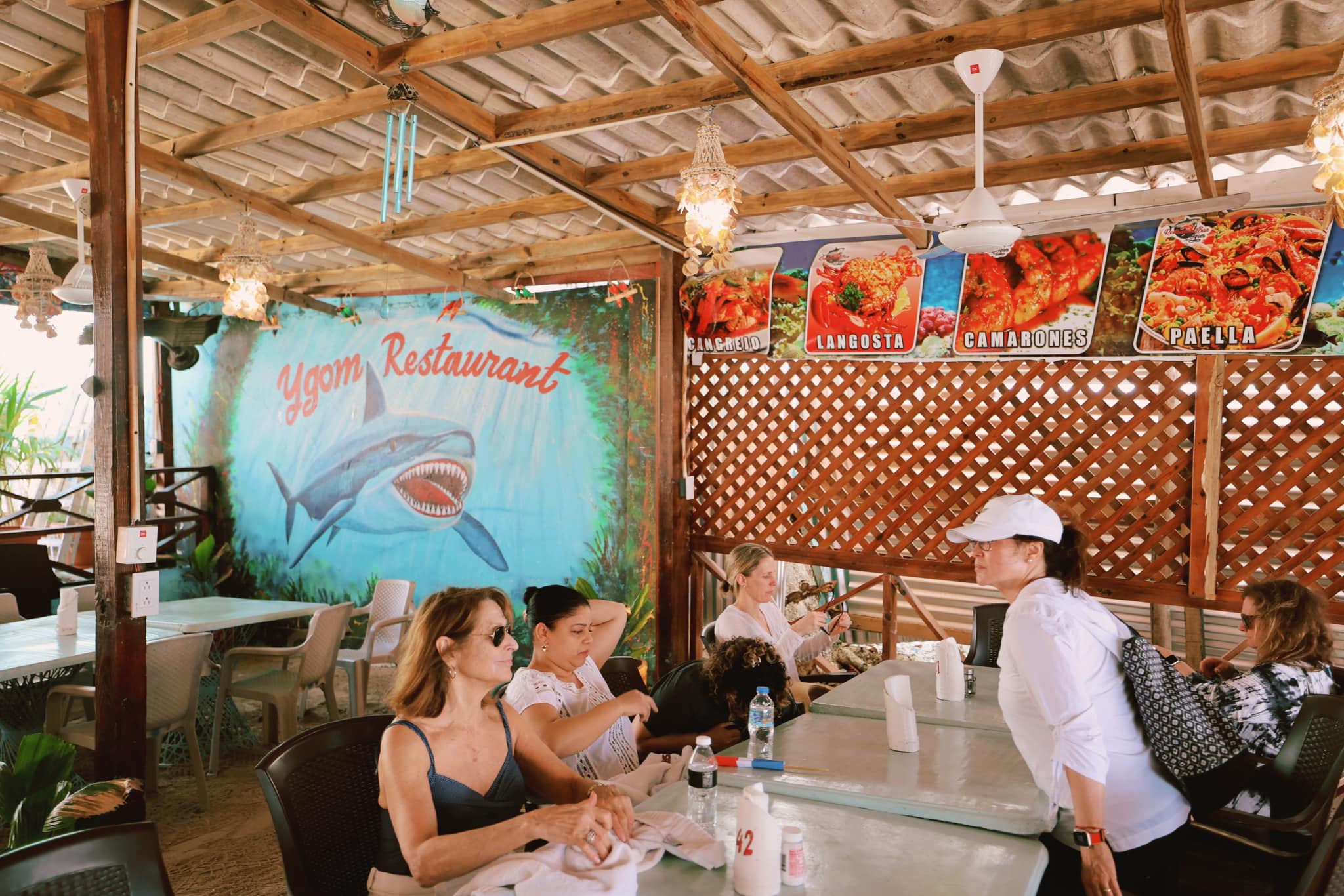
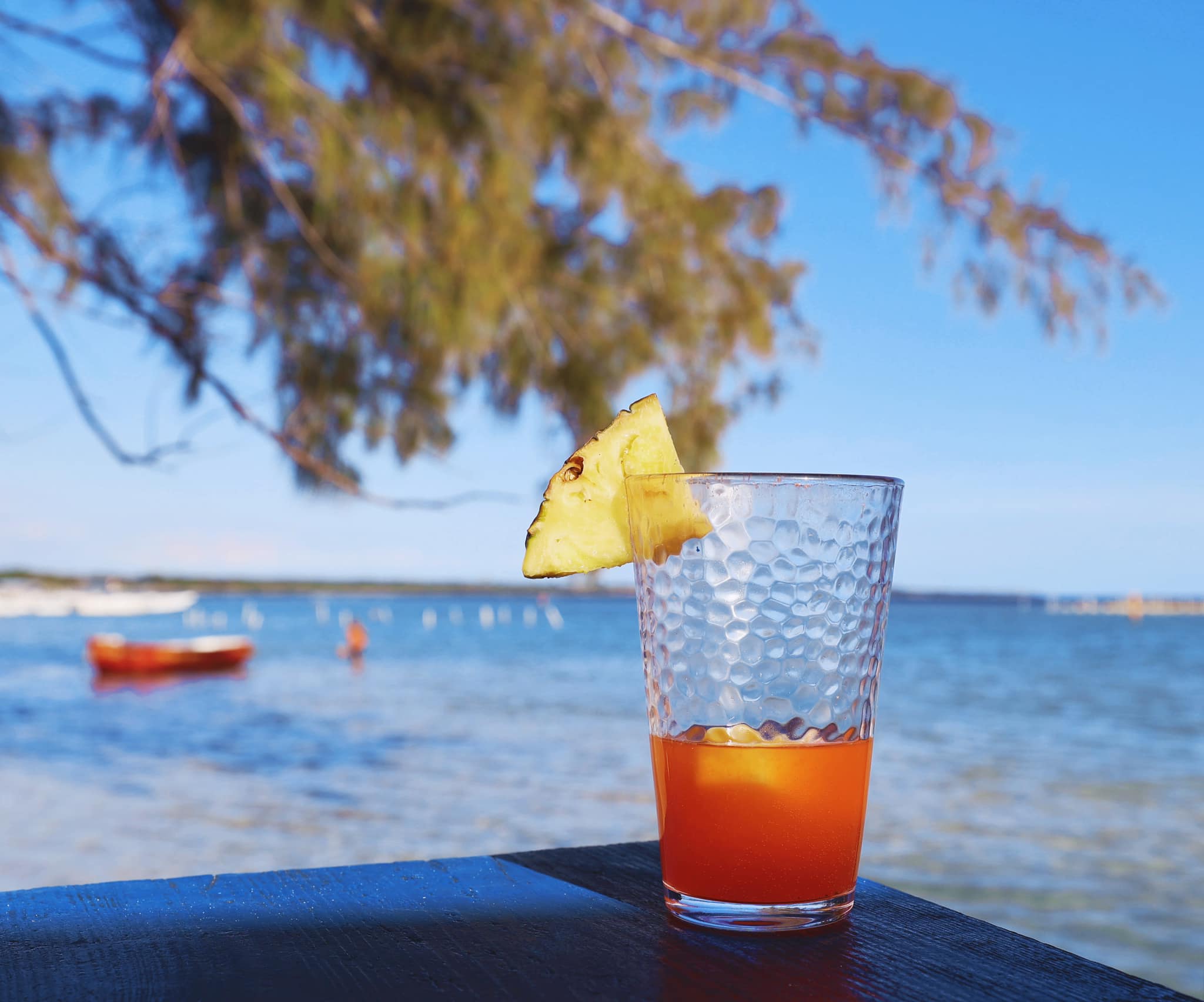
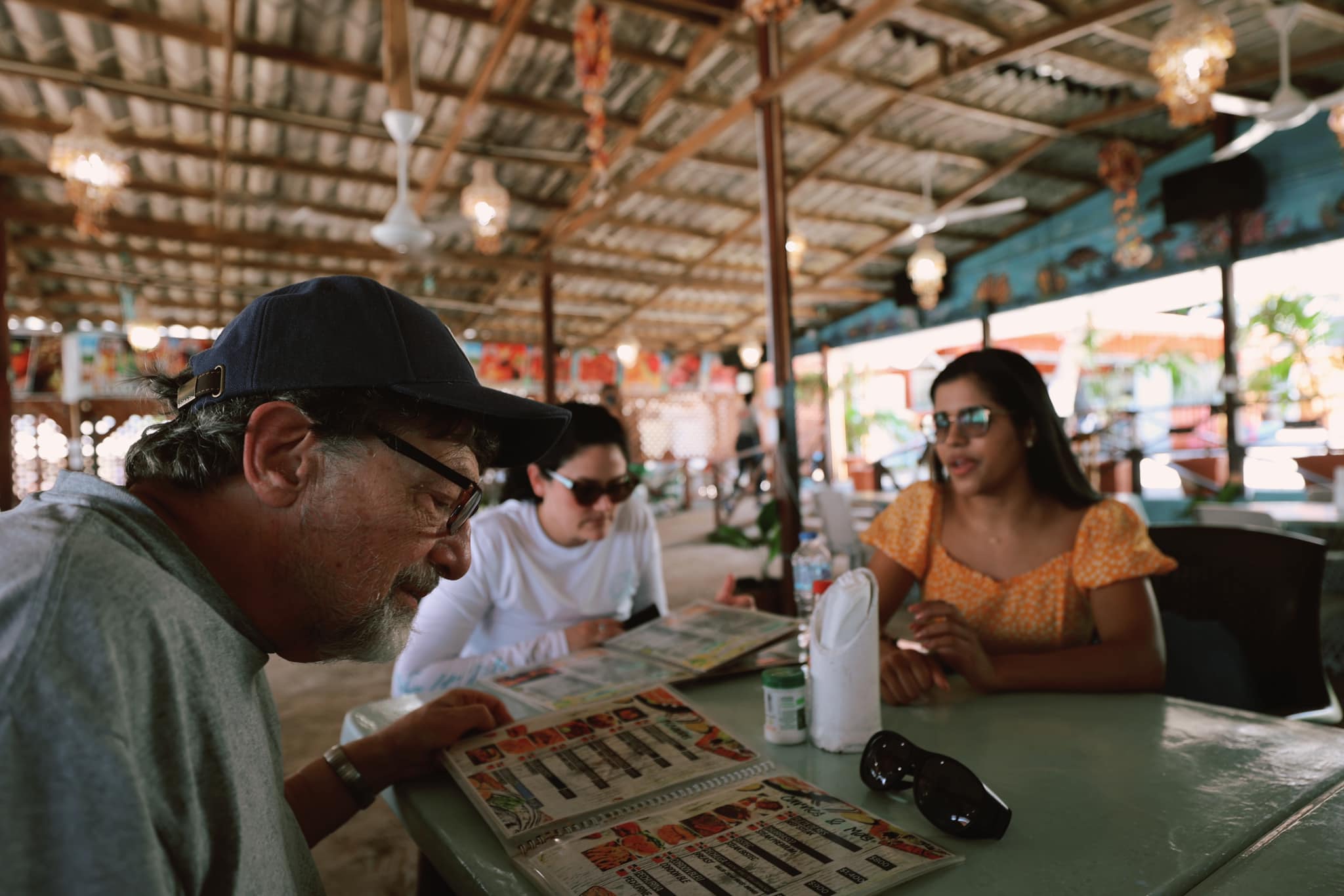
After our educational visits, we headed to the coastal town of Boca Chica for a well-deserved lunch break at Ygom Restaurant. The rustic beachfront eatery welcomed us with its casual charm and spectacular views of the turquoise Caribbean waters. Seated at tables directly on the sand under colorful striped umbrellas, we enjoyed the gentle sea breeze while fishing boats bobbed lazily in the distance. The restaurant's distinctive shark mural and wooden beamed roof created a quintessential Caribbean dining atmosphere. Our meal began with refreshing tropical fruit juices served in textured glasses, garnished with fresh pineapple slices – the perfect respite from the afternoon heat. The menu showcased the local seafood specialties with vibrant photos of their signature dishes: cangrejo (crab), langosta (lobster), camarones (shrimp), and paella. As we relaxed in the white wicker chairs, the conversation flowed easily against the backdrop of gentle waves. Several in our group couldn't resist dipping their toes in the warm sand while waiting for their meals. This leisurely lunch provided not only delicious Dominican cuisine but also a welcome change of pace from our busy schedule of institutional visits, allowing us to experience the natural beauty that draws visitors to this island nation.
Evening Return and Colonial Zone by Night
March 17, 2025 (7:30 PM)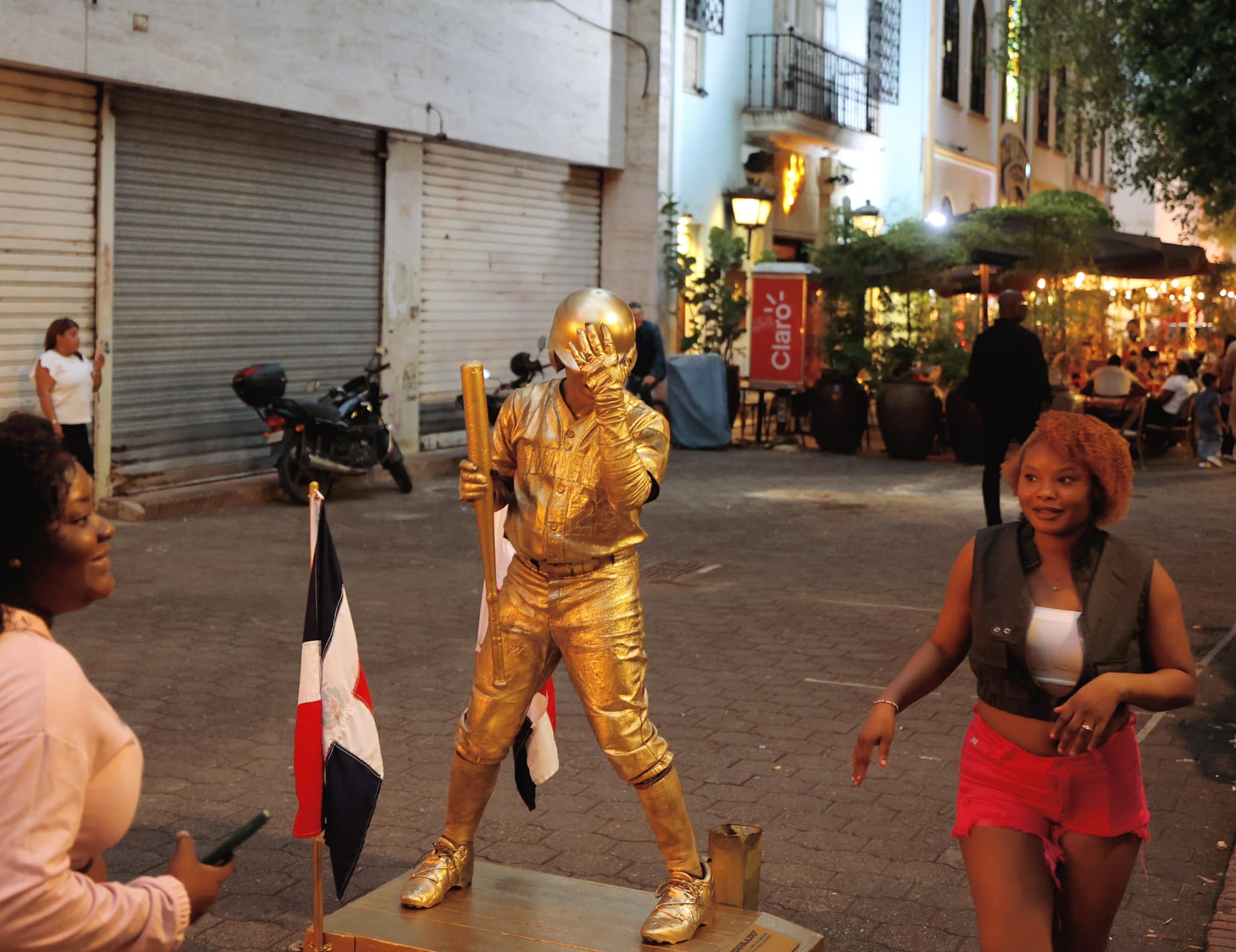
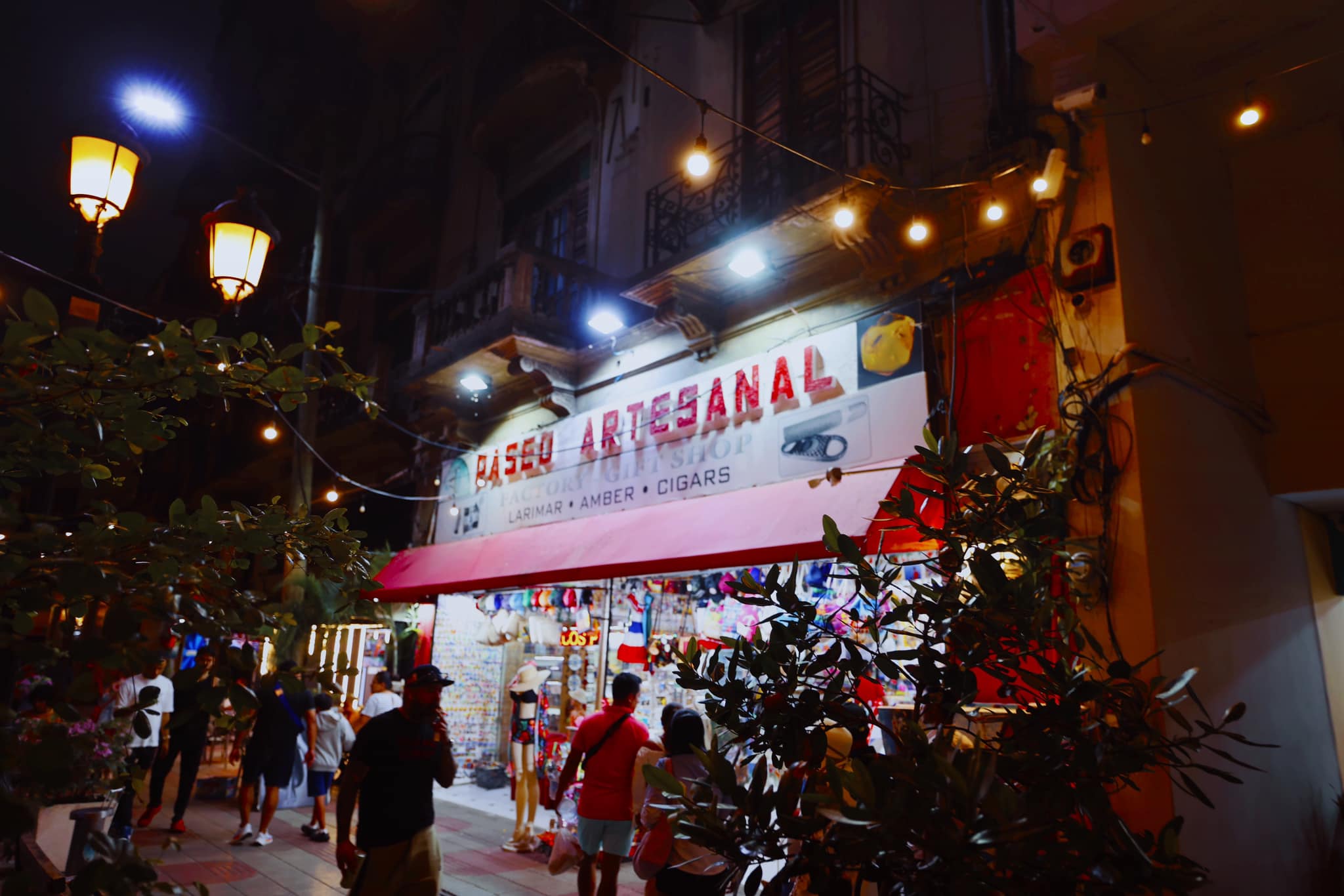
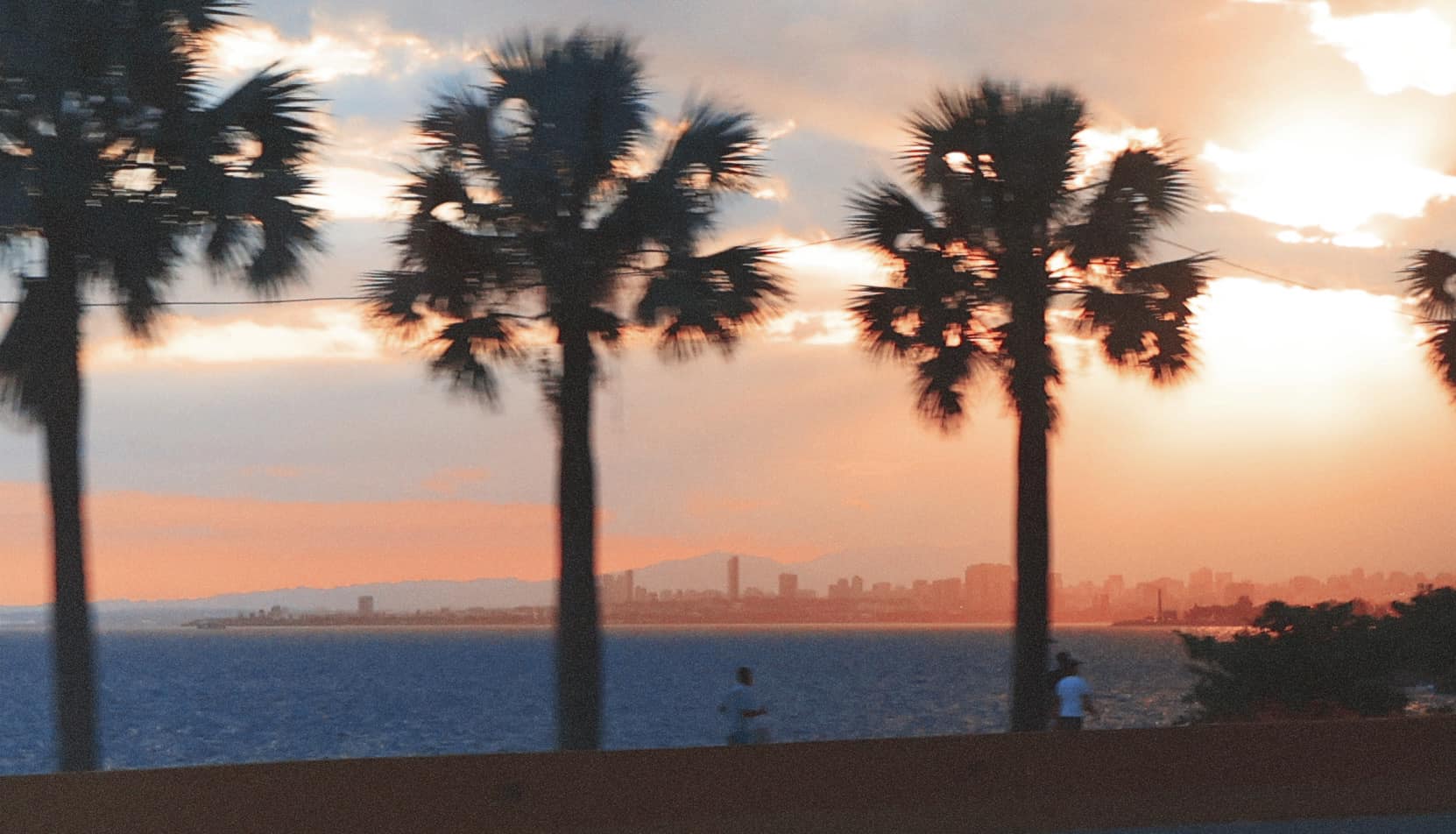
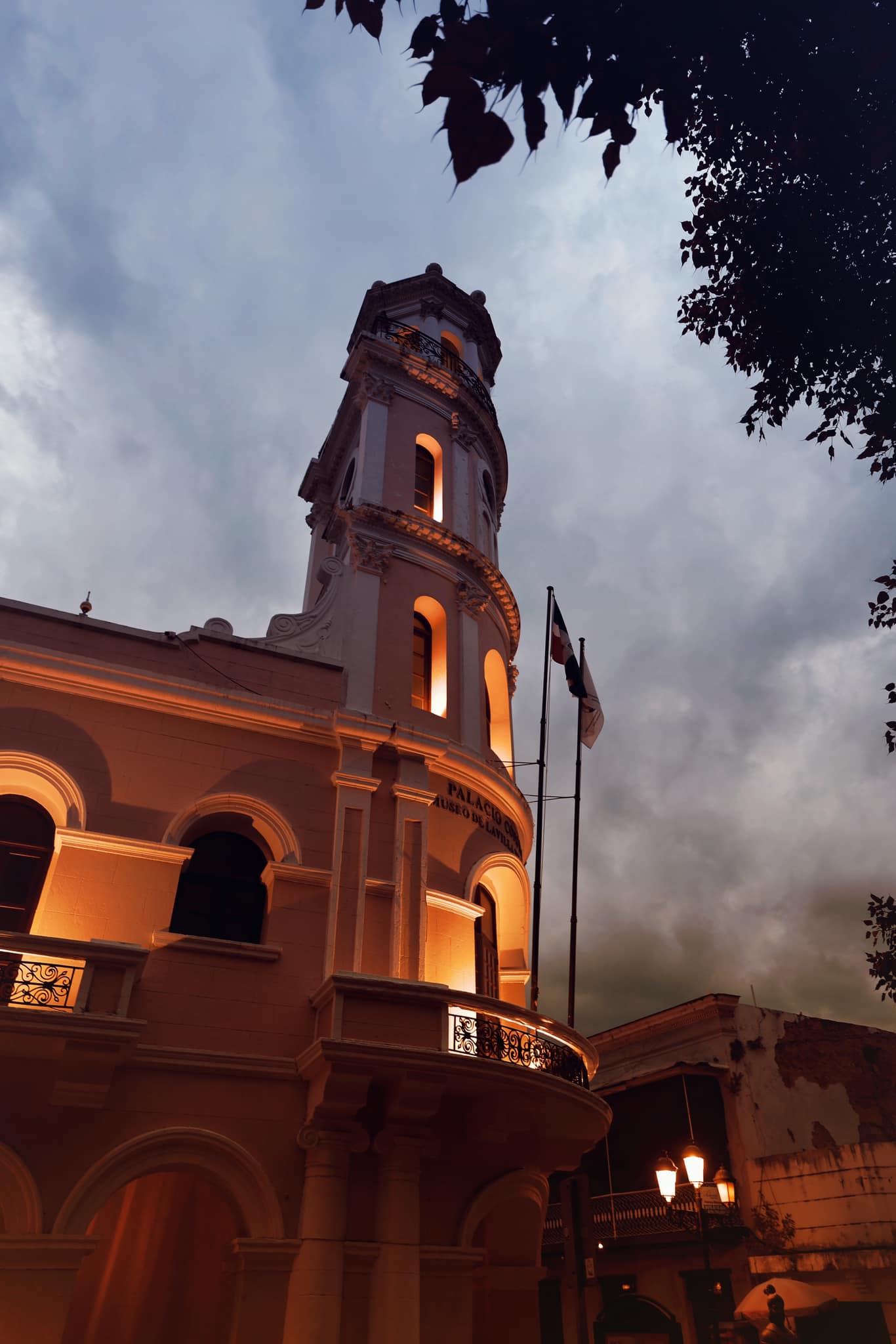
As we drove back from Boca Chica toward Santo Domingo, we were treated to a spectacular sunset over the Caribbean Sea, with palm trees silhouetted against the orange and pink sky and the distant city skyline coming into view. After returning to our hotel to freshen up, we ventured out to experience the Zona Colonial transformed by night. The historic district took on a magical quality under the warm glow of street lamps and strings of lights that crisscrossed the narrow cobblestone streets. The evening brought out street performers, including a remarkable golden-painted baseball player statue who posed with the Dominican flag, capturing the country's passion for the sport through performance art. We strolled through the bustling evening atmosphere, stopping at the brightly lit Paseo Artesanal with its inviting red awning, where local artisans displayed Dominican specialties including larimar (the distinctive light blue gemstone found only in the Dominican Republic), amber, and handcrafted cigars. Restaurants and cafés that lined the colonial streets had come alive, their outdoor seating areas filled with both locals and tourists enjoying the pleasant evening air. The historic buildings, now illuminated from below, cast dramatic shadows that emphasized their centuries-old architecture. The contrast between our daytime educational visits and this vibrant nightlife provided us with a more complete picture of contemporary Dominican culture, where history and modern life blend seamlessly in the oldest European settlement in the Americas.
Tuesday, March 18, 2025
Our School Visits Continue in Santo Domingo
Universidad Autónoma de Santo Domingo (UASD)
March 18, 2025 (9:30 AM)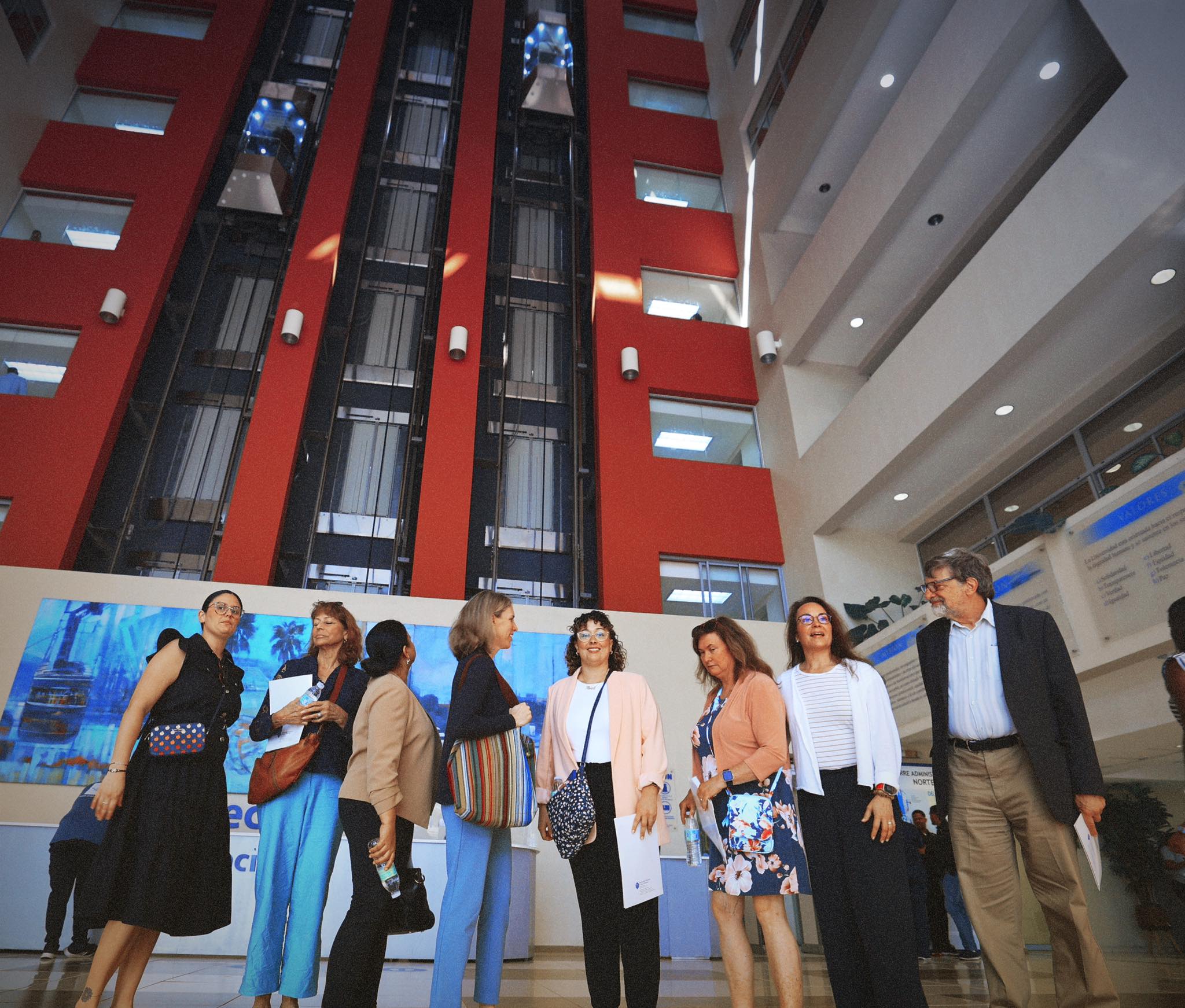
Our educational journey continued with a visit to the impressive administrative building of the Universidad Autónoma de Santo Domingo (UASD), the oldest university in the Americas, founded in 1538. The modern tower stands in stark contrast to the historical colonial buildings we had explored earlier, with its striking red architectural elements framing glass elevators that ascend through the multi-story atrium. Upon arrival, we gathered in the spacious lobby where natural light filtered through the towering interior space, illuminating a large mural depicting themes of education and Dominican heritage. The facility's contemporary design created an atmosphere of academic innovation while still honoring the institution's centuries-old legacy. Our delegation was warmly welcomed by university leadership, after which we broke into smaller groups based on our professional disciplines. These specialized interactions proved invaluable, allowing for in-depth exchanges of ideas and potential areas for future collaboration. The conversations continued as we toured departmental facilities, where we observed firsthand how the university operates within the context of the Dominican Republic's educational landscape. Throughout our visit, the pride that UASD faculty and staff took in their institution's historical significance and modern relevance was evident, providing us with important insights into the country's approach to higher education and professional development.
Museo de la UASD
March 18, 2025 (10:30 AM)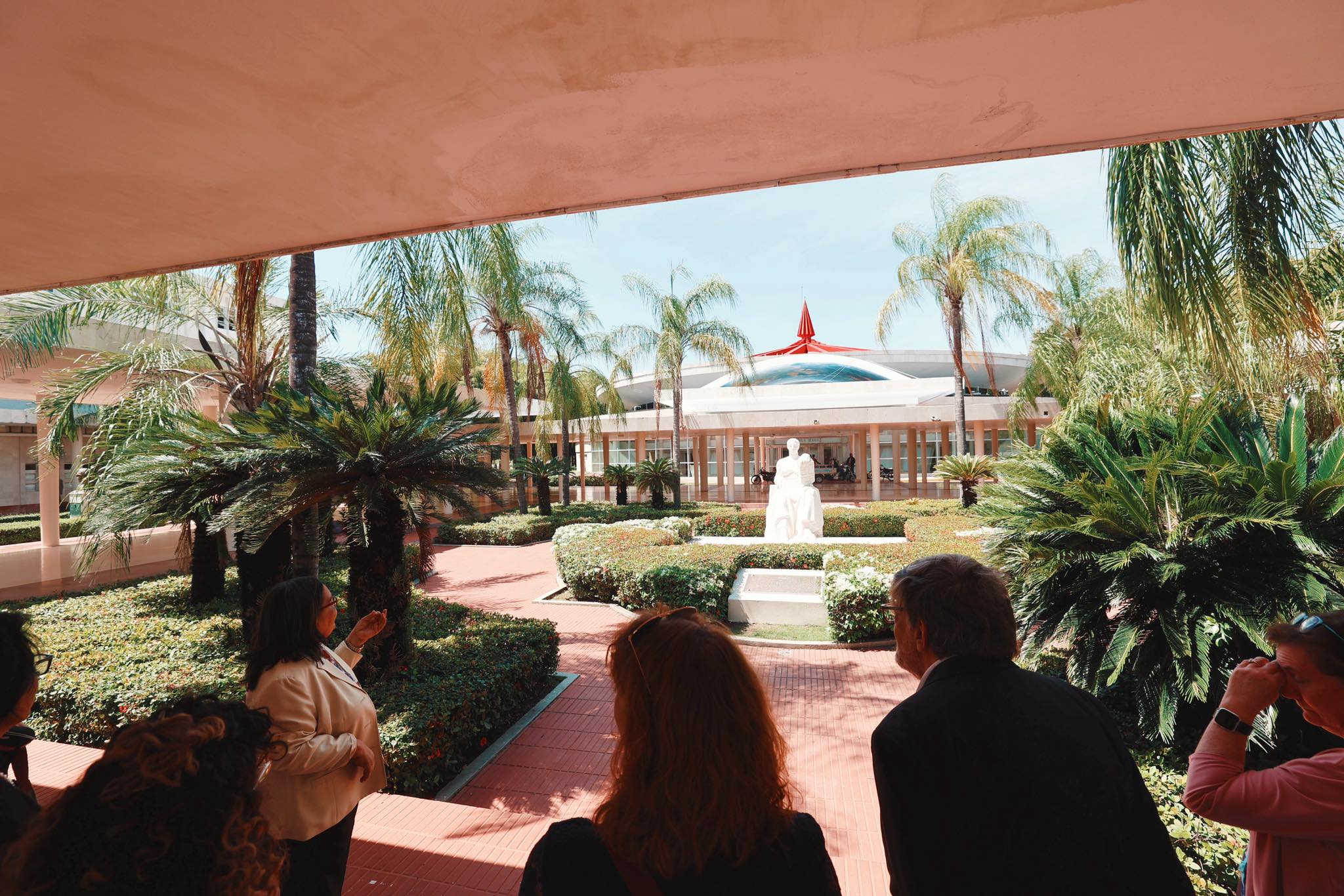
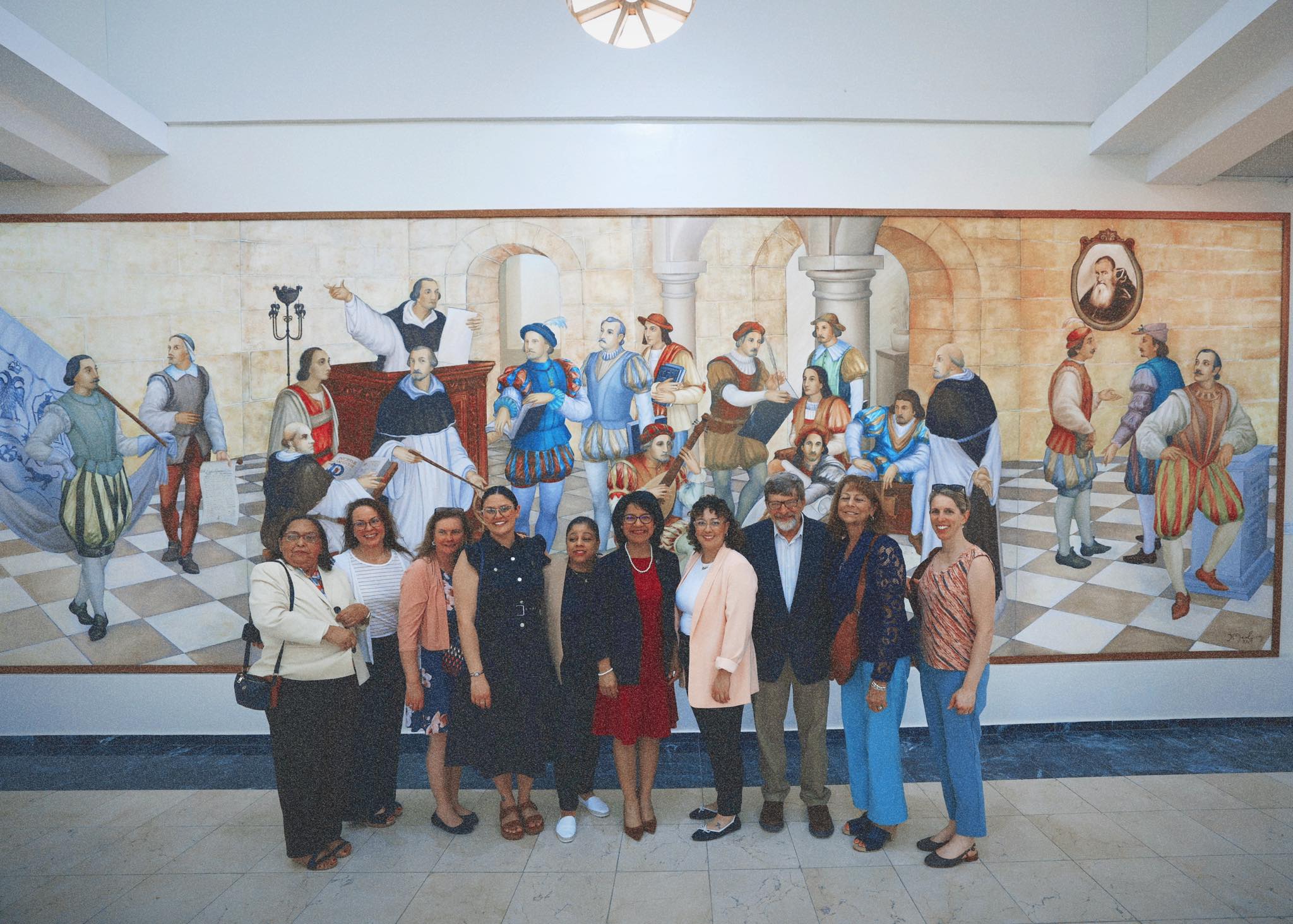
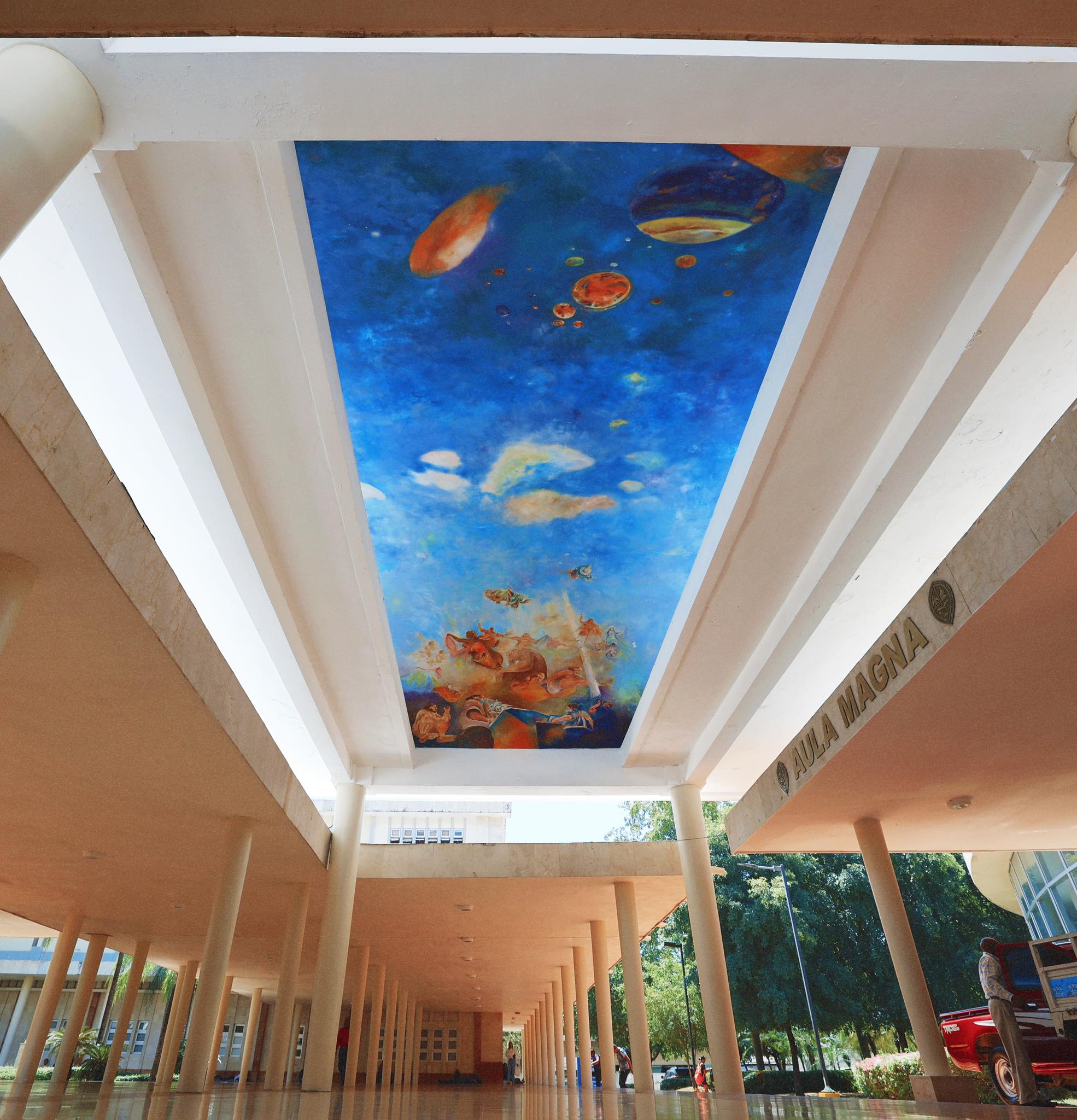
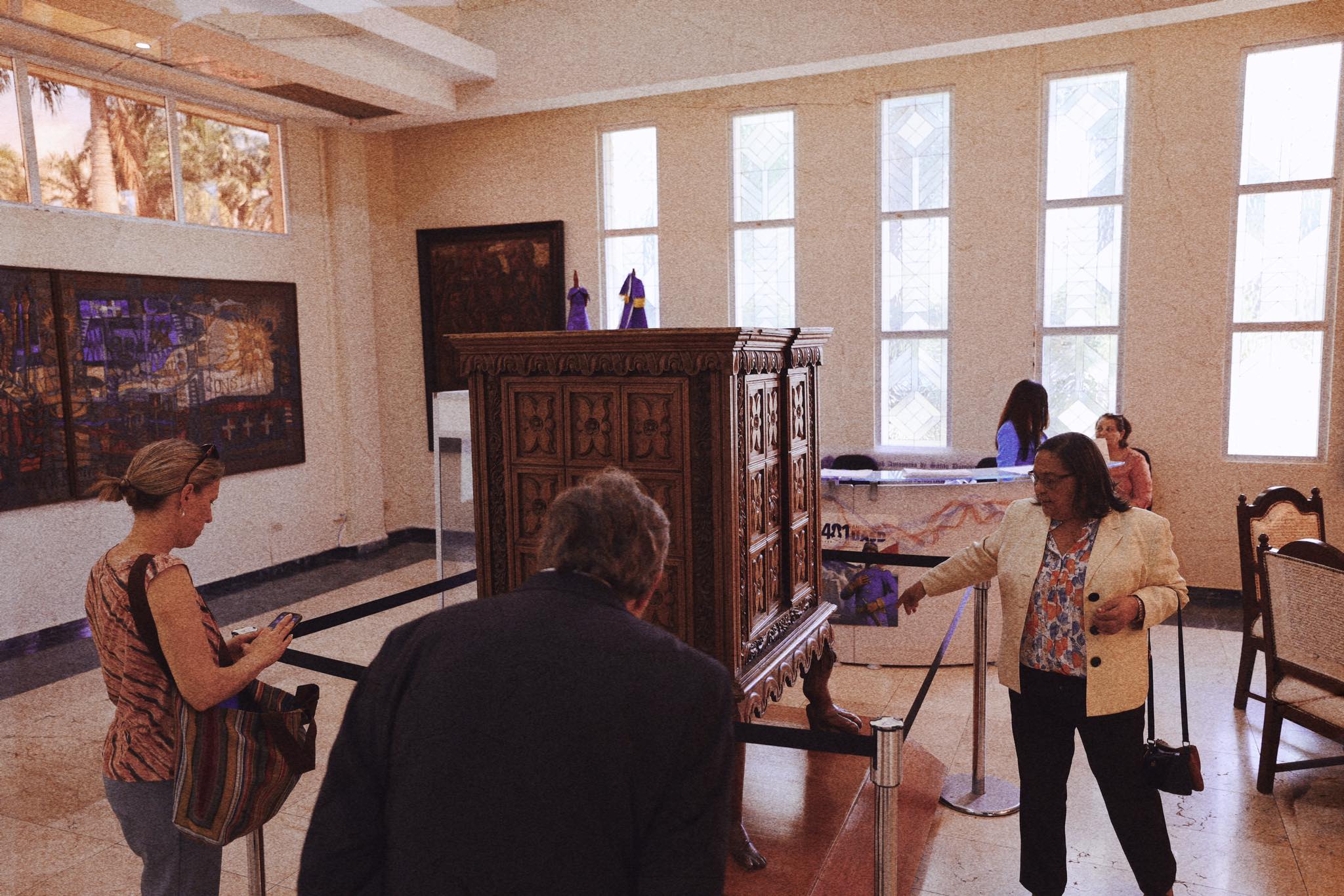
Following our meetings at the administrative building, we made our way to the Museo de la UASD, an institution dedicated to preserving the rich historical legacy of the oldest university in the Americas. As we approached the museum complex, we were immediately struck by the beautiful landscaped courtyard adorned with tropical palms and a prominent white statue at its center. Clara led us through covered walkways with striking architectural features, including the impressive "Aula Magna" corridor with its breathtaking ceiling mural depicting a celestial scene of planets and cosmic elements against a vivid blue background. The museum houses an impressive collection of artifacts that tell the story of the university's evolution since its founding in 1538. The highlight of our visit was the original 16th-century wooden podium, an ornately carved piece from which bishops once delivered their lectures to early students of the university. Clara explained the historical significance of this remarkable piece of academic furniture, which stood as a physical connection to the institution's origins as a center of ecclesiastical education. Throughout the museum, various artistic works adorned the walls, from historical paintings depicting university life centuries ago to more contemporary pieces reflecting Dominican cultural themes. The museum's thoughtful curation created a narrative that connected the institution's colonial past with its current role in Dominican society. Before departing, we gathered for a group photo in front of a detailed historical mural depicting figures from the university's founding era, providing us with both a memento and a visual summary of the institution's impressive heritage.
Liceo Experimental Hugo Tolentino Dipp
March 18, 2025 (11:35 AM)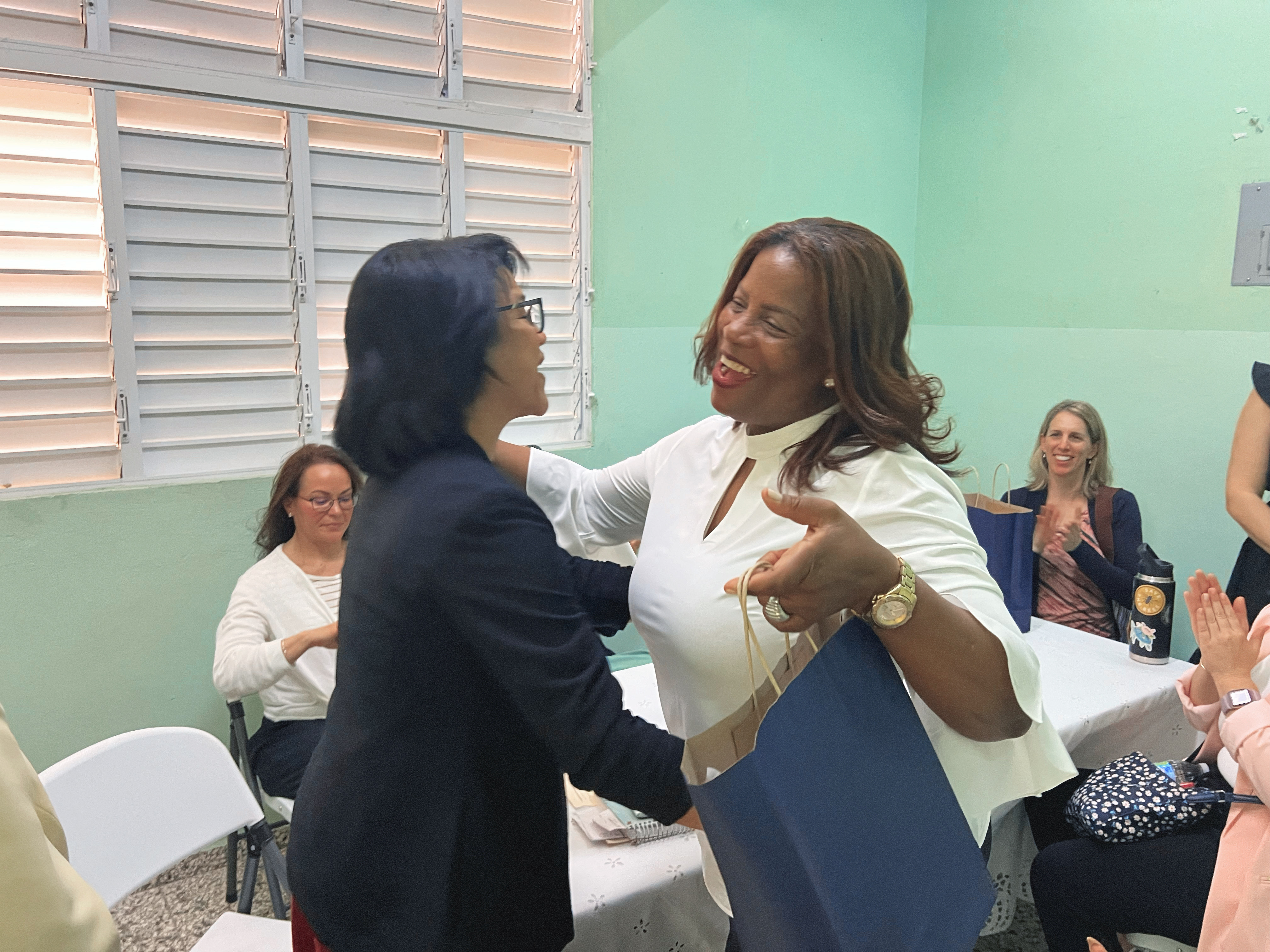
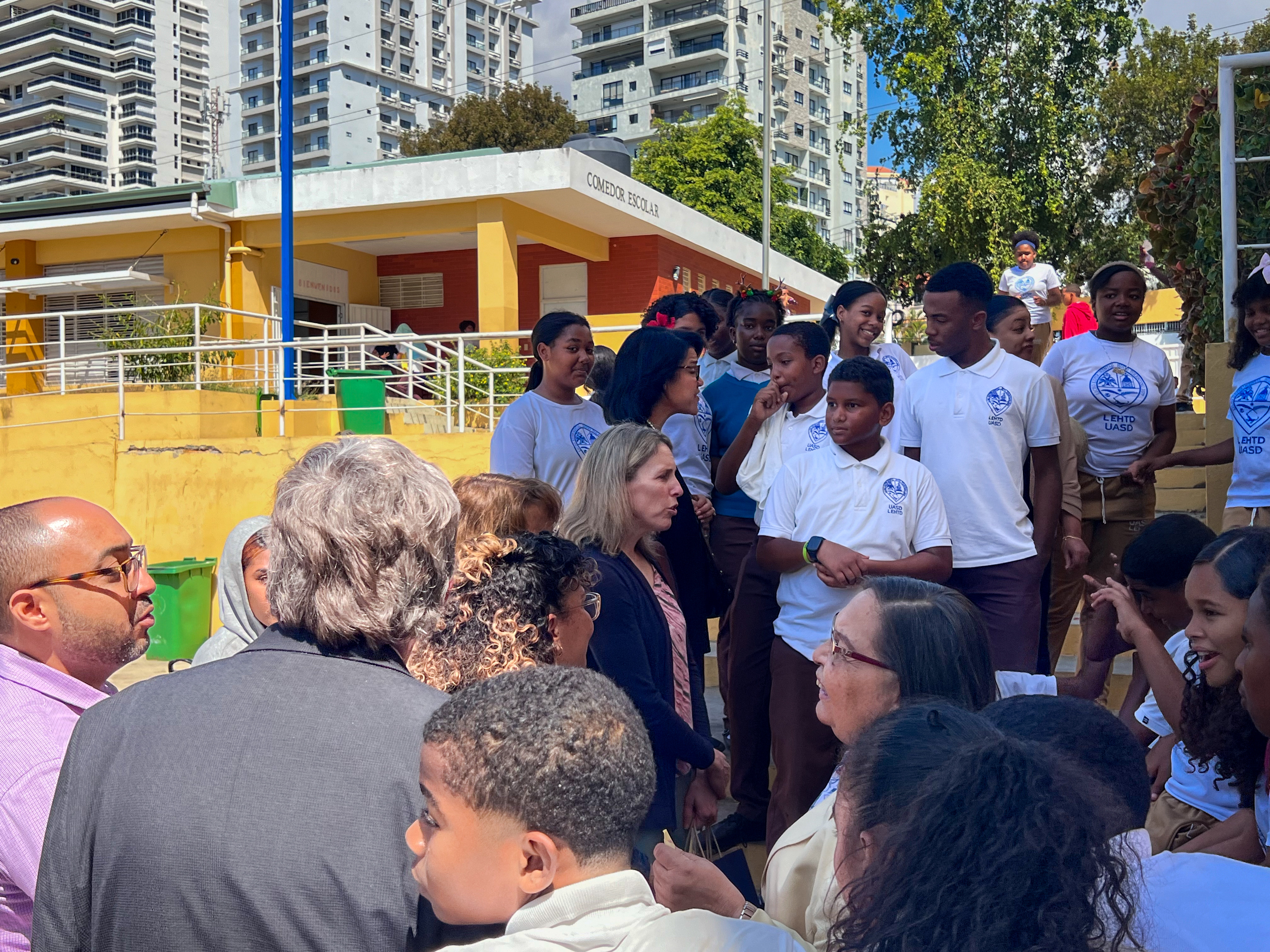
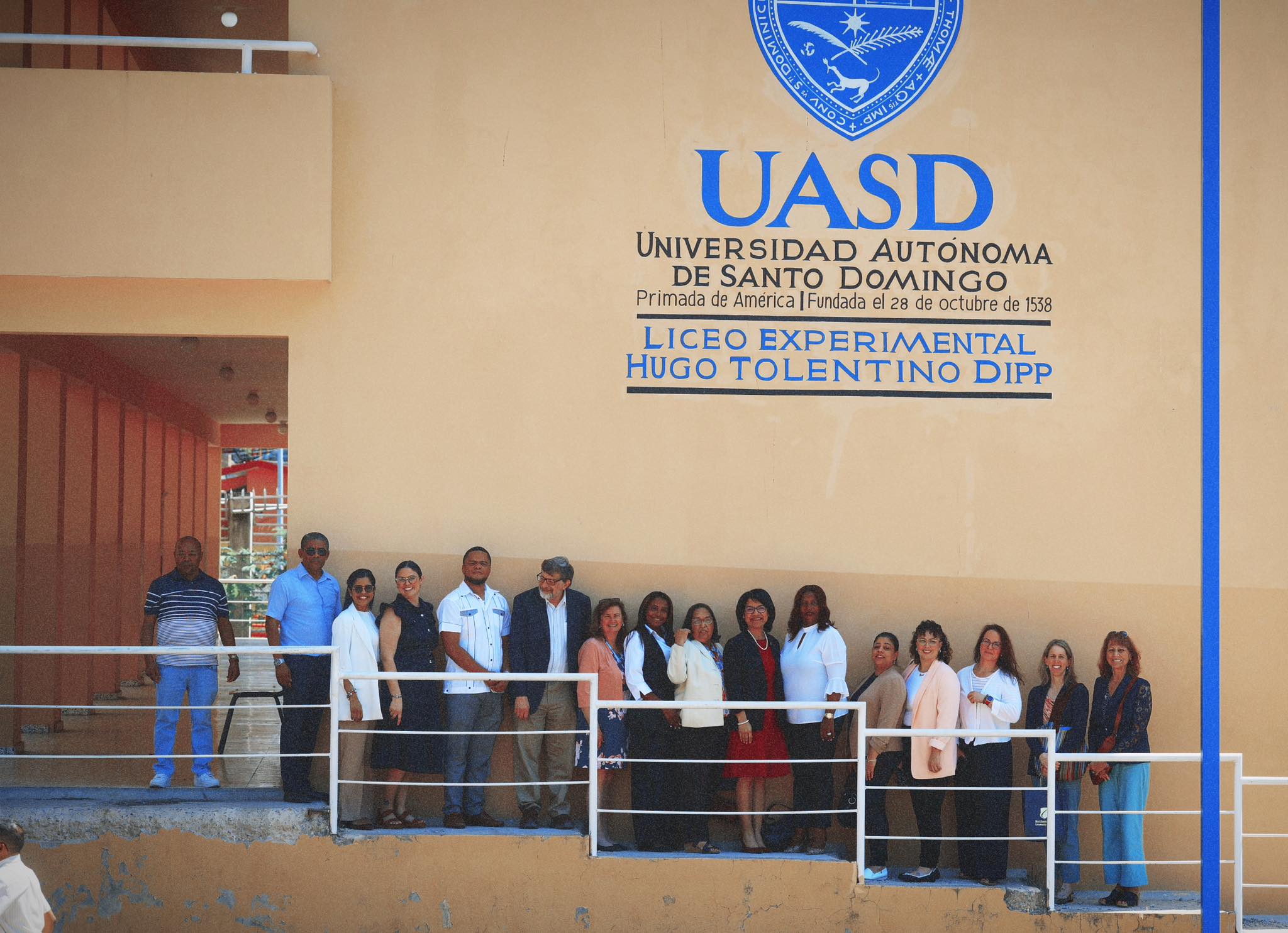

Our educational tour continued at 11:35 AM with a visit to the Liceo Experimental Hugo Tolentino Dipp, an innovative public high school operated by the Universidad Autónoma de Santo Domingo. The yellow and red building stood out against the backdrop of high-rise apartment buildings in the urban campus setting. Upon arrival, we were warmly greeted by the school's director, Joselín Fructuoso, who enthusiastically welcomed our delegation with genuine Dominican hospitality. The official welcome included the presentation of an institutional folder, a touching moment captured as Director Fructuoso embraced one of our delegation members. What makes this school particularly notable is its unique status as an experimental institution where students can earn college credits while completing their high school education, creating a seamless pathway to higher education. Our delegation had the opportunity to interact directly with students dressed in their distinctive white polo shirts emblazoned with the UASD logo. These articulate young people eagerly shared their educational experiences and future aspirations with us, demonstrating impressive poise and academic focus. The school's connection to the university was evident not just in its name but in the prominent display of the UASD shield and the inscription noting the university's founding in 1538, proudly proclaiming its status as "Primada de América" (First in the Americas). Before departing, our group gathered for a photo in front of this institutional signage, documenting our visit to this forward-thinking educational model. Throughout our visit, we observed how the school balances traditional academic rigor with innovative approaches to prepare students for university studies, an impressive example of Dominican educational innovation within the public school system.
UASD Medical Simulation Center
March 18, 2025 (1:30 PM)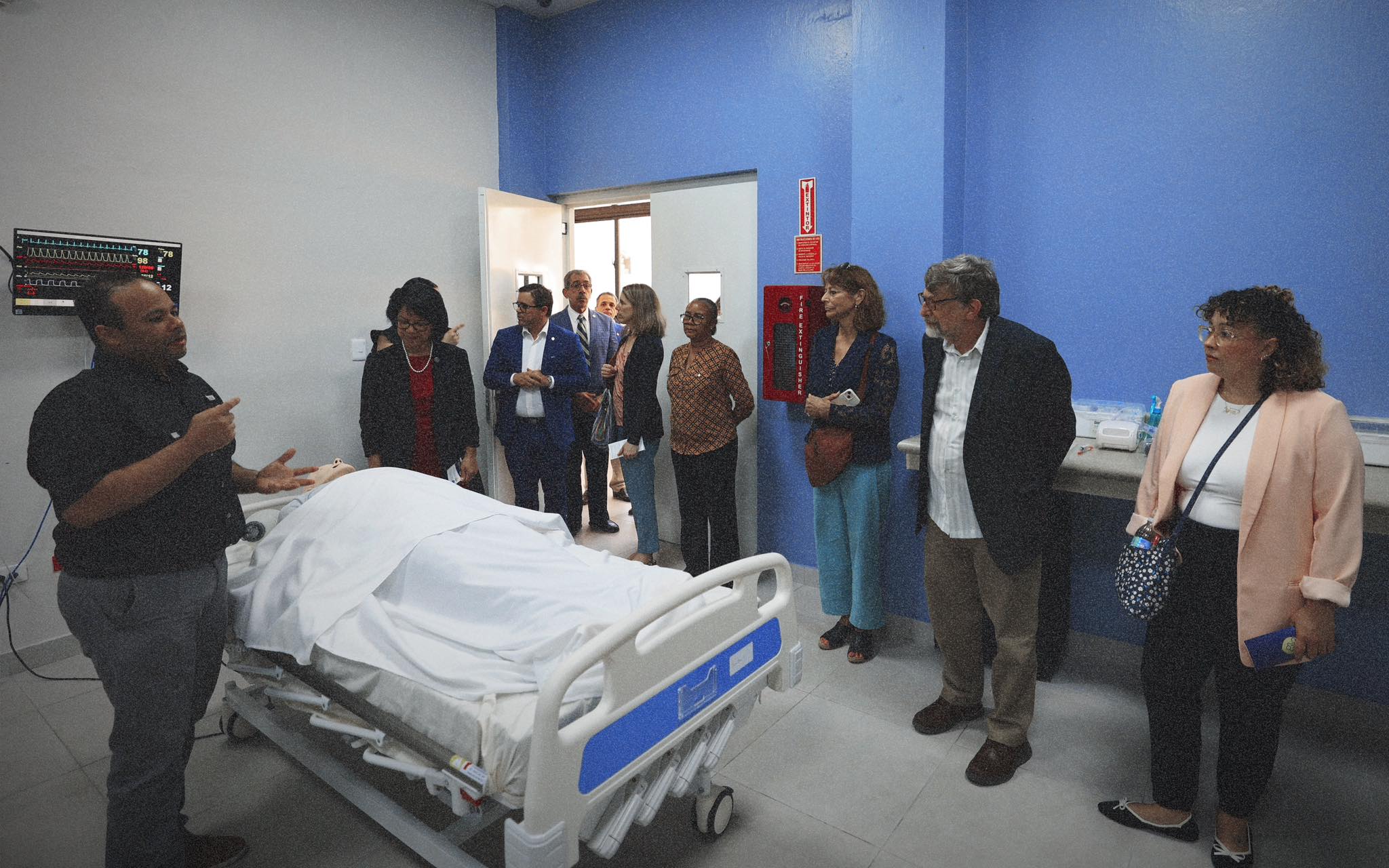
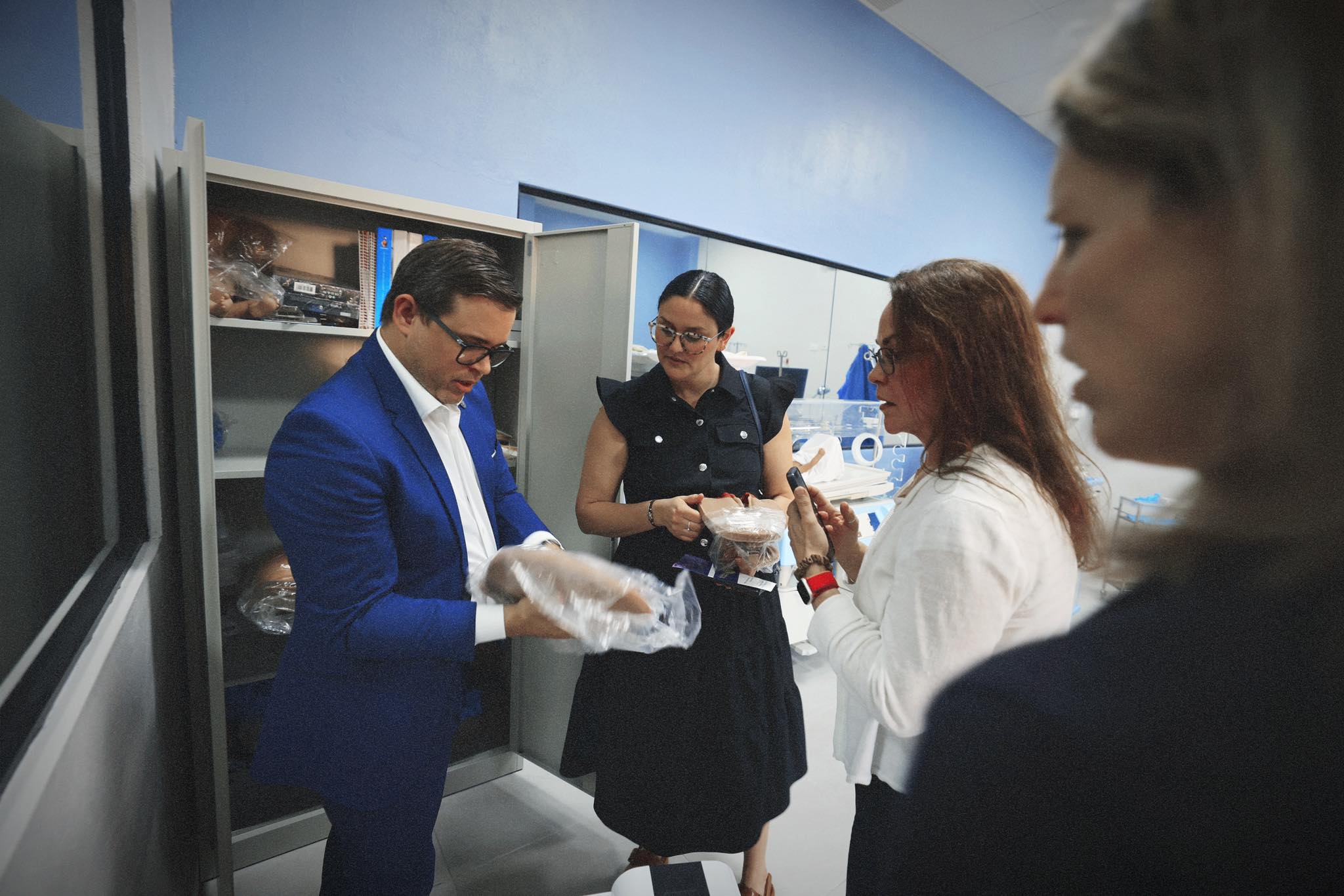
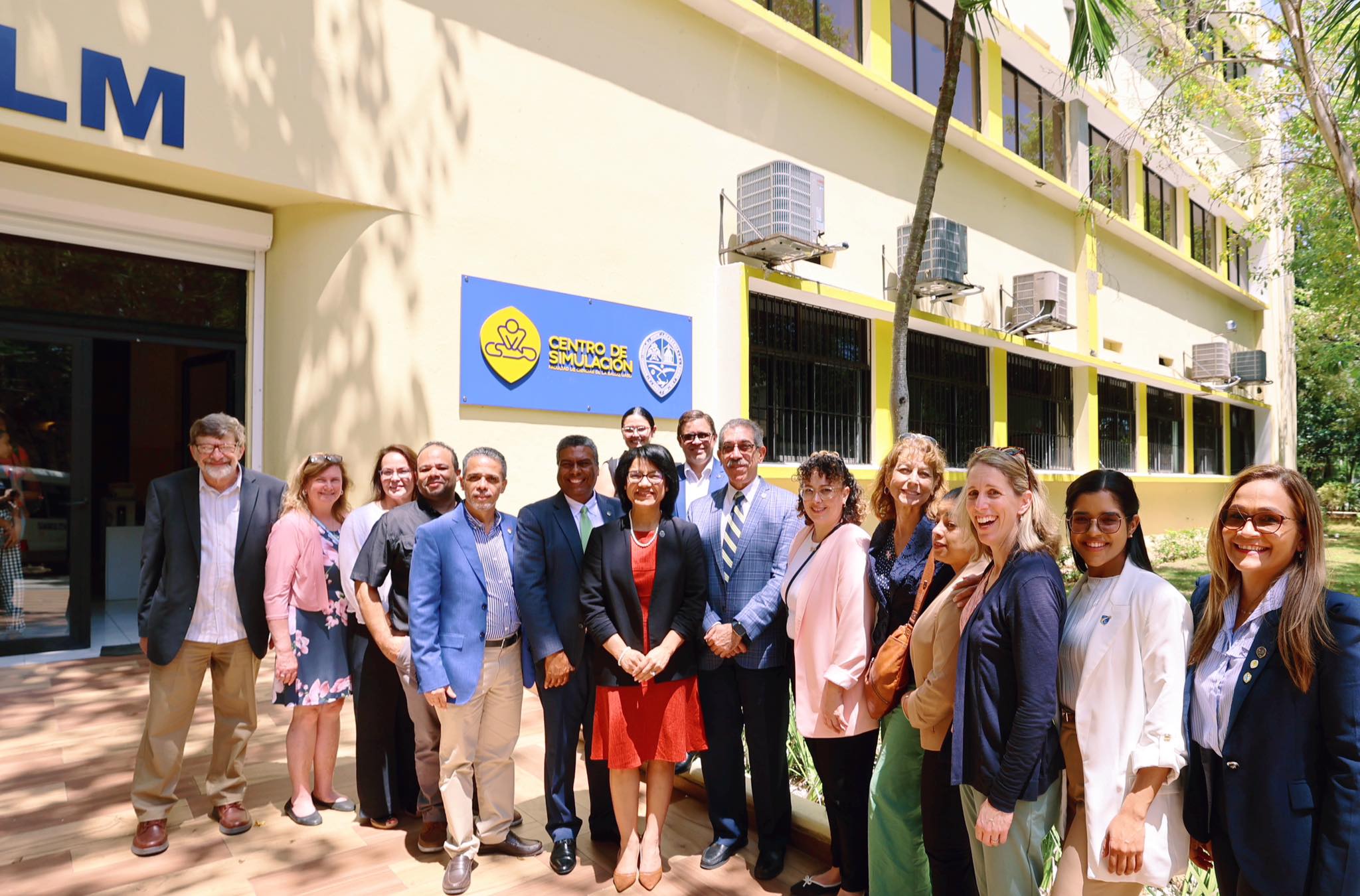
Our educational journey through UASD continued with a visit to their state-of-the-art Medical Simulation Center, a critical facility for training healthcare professionals. Housed in a bright yellow building surrounded by tropical vegetation, the center immediately stood out with its prominent "Centro de Simulación" sign displaying both the simulation center emblem and the UASD logo. Upon entering, we were greeted by medical education specialists who guided us through various simulation rooms designed to replicate real healthcare environments. In one of the hospital room simulations, complete with blue walls reminiscent of actual Dominican medical facilities, an instructor demonstrated the features of a modern hospital bed and patient monitoring equipment. The medical staff explained how these simulated environments allow students to develop clinical skills in a controlled setting before working with actual patients. Particularly interesting was our tour of the supply area, where we observed faculty members handling various medical training materials and discussing the pedagogical approaches used in simulation-based education. The bright, clinical environment was equipped with modern technology specifically designed for healthcare education, highlighting UASD's commitment to preparing medical professionals using contemporary teaching methodologies. Before concluding our visit, we gathered outside for a group photo with our hosts, the bright sunlight illuminating the yellow façade of this impressive educational facility. The visit provided valuable insights into how the oldest university in the Americas incorporates cutting-edge simulation technology into its medical training programs, demonstrating a blend of historical academic tradition with modern educational innovation.
Teachers Club UASD - Seaside Lunch
March 18, 2025 (2:30 PM)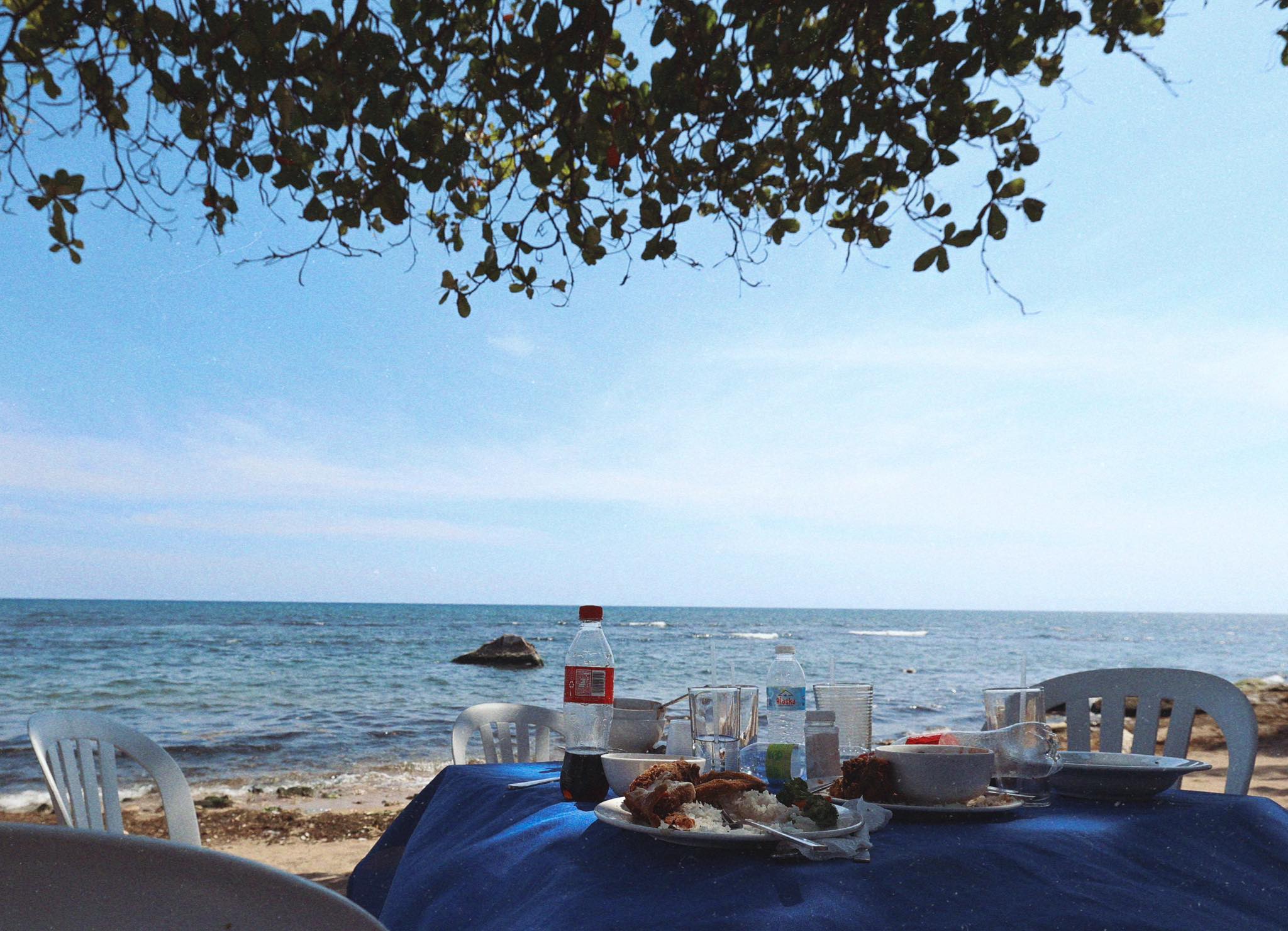
Following our educational visits, we were treated to an authentic faculty experience with lunch at the Teachers Club UASD, a beachfront retreat where university professors regularly gather. Seated at tables draped in blue cloths directly overlooking the Caribbean Sea, we enjoyed the same meals that faculty members typically savor during their breaks from academic duties. The simple yet profoundly beautiful setting featured practical white plastic chairs positioned to maximize the stunning ocean views, with gentle waves lapping at the shore just steps away from our table. Our meal consisted of traditional Dominican fare: plates of rice accompanied by seasoned meat, with refreshing bottled water and soft drinks to combat the midday heat. The informal, relaxed atmosphere provided insight into the daily lives of Dominican educators and created a perfect environment for continued discussions about educational collaboration. Overhead, tree branches framed our view of the endless blue horizon, while the sea breeze offered natural cooling. This authentic lunch experience, away from tourist establishments, allowed us to appreciate the work-life balance of university faculty in Santo Domingo, who have the privilege of this magnificent ocean backdrop as part of their institutional benefits. The combination of delicious local cuisine, collegial conversation, and the therapeutic sound of waves created a memorable interlude in our busy schedule of institutional visits.
Instituto Tecnológico de Santo Domingo (INTEC)
March 18, 2025 (4:00 PM)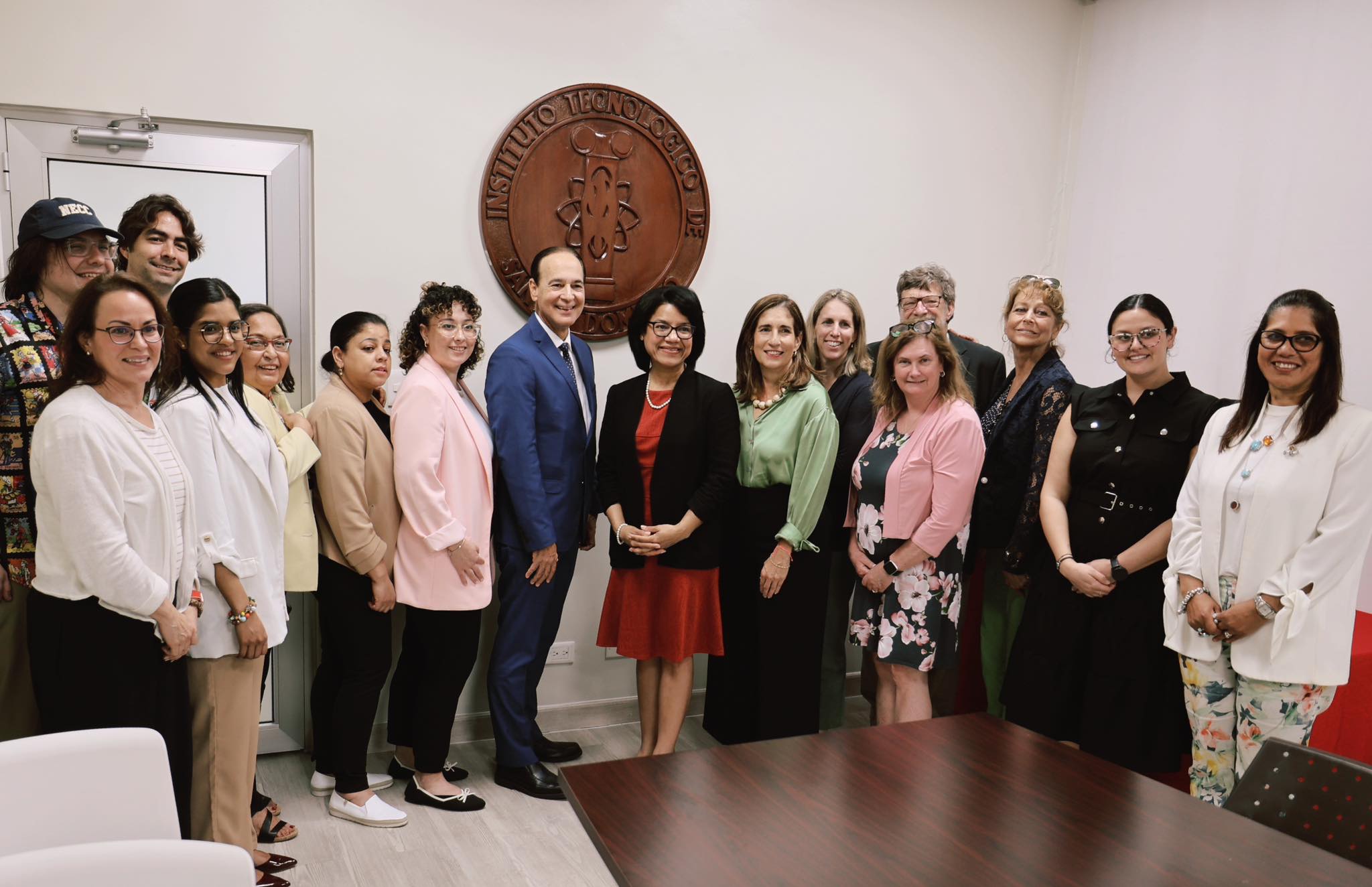
Following our seaside lunch at the Teachers Club, we continued our educational tour with a visit to the Instituto Tecnológico de Santo Domingo (INTEC), one of the Dominican Republic's most prestigious private universities. Upon arrival at the modern campus, we were warmly welcomed by Academic Vice President Arturo del Villar and his team of faculty and administrators. We learned how the institution has cultivated partnerships with universities across the globe, enabling Dominican students to benefit from diverse international perspectives while providing visiting scholars opportunities to engage with Caribbean academic contexts. The discussion covered INTEC's innovative approach to curriculum development, their emphasis on research and technological advancement, and how the institution positions itself as a leader in preparing graduates for an increasingly globalized workforce. Faculty members from various departments shared insights about their specific programs and collaborative opportunities. Before concluding our visit, we gathered for a group photo with our hosts in front of the institutional seal, capturing this moment of academic exchange between our delegation and INTEC's leadership. This visit offered valuable perspectives on how a leading private technical university in the Dominican Republic approaches international collaboration and academic excellence.
Centro Comercial Galería 360
March 18, 2025 (6:30 PM)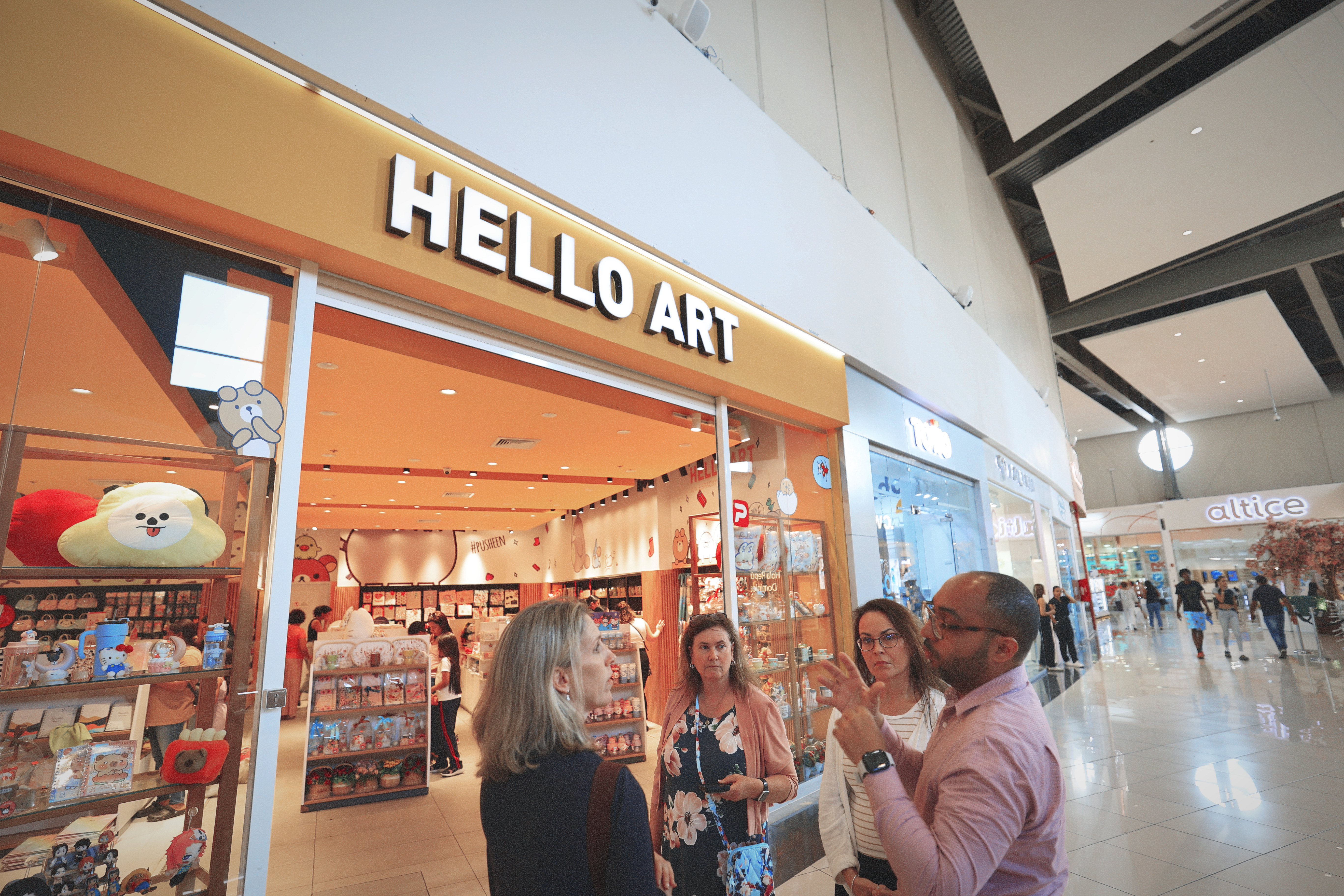
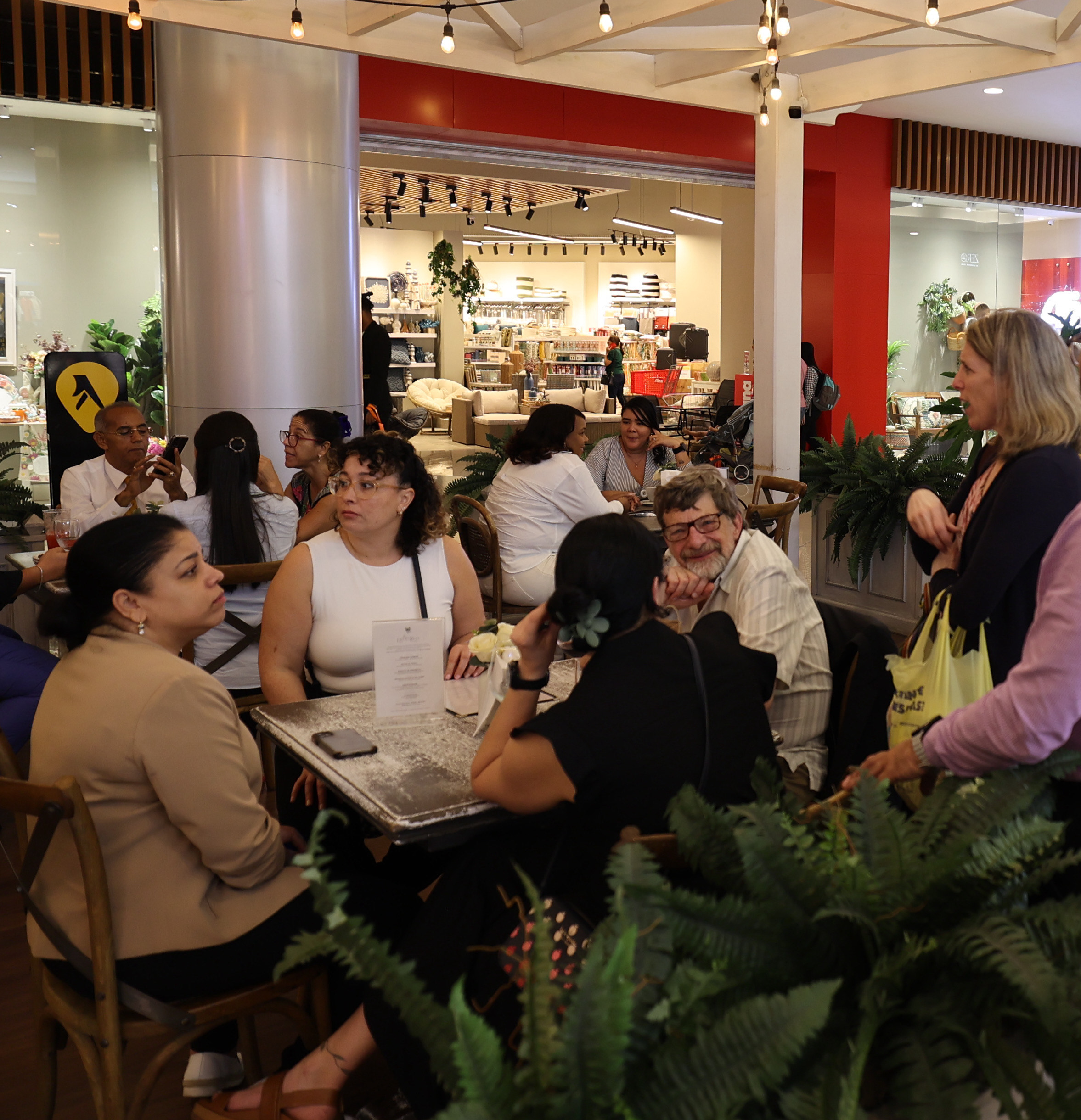
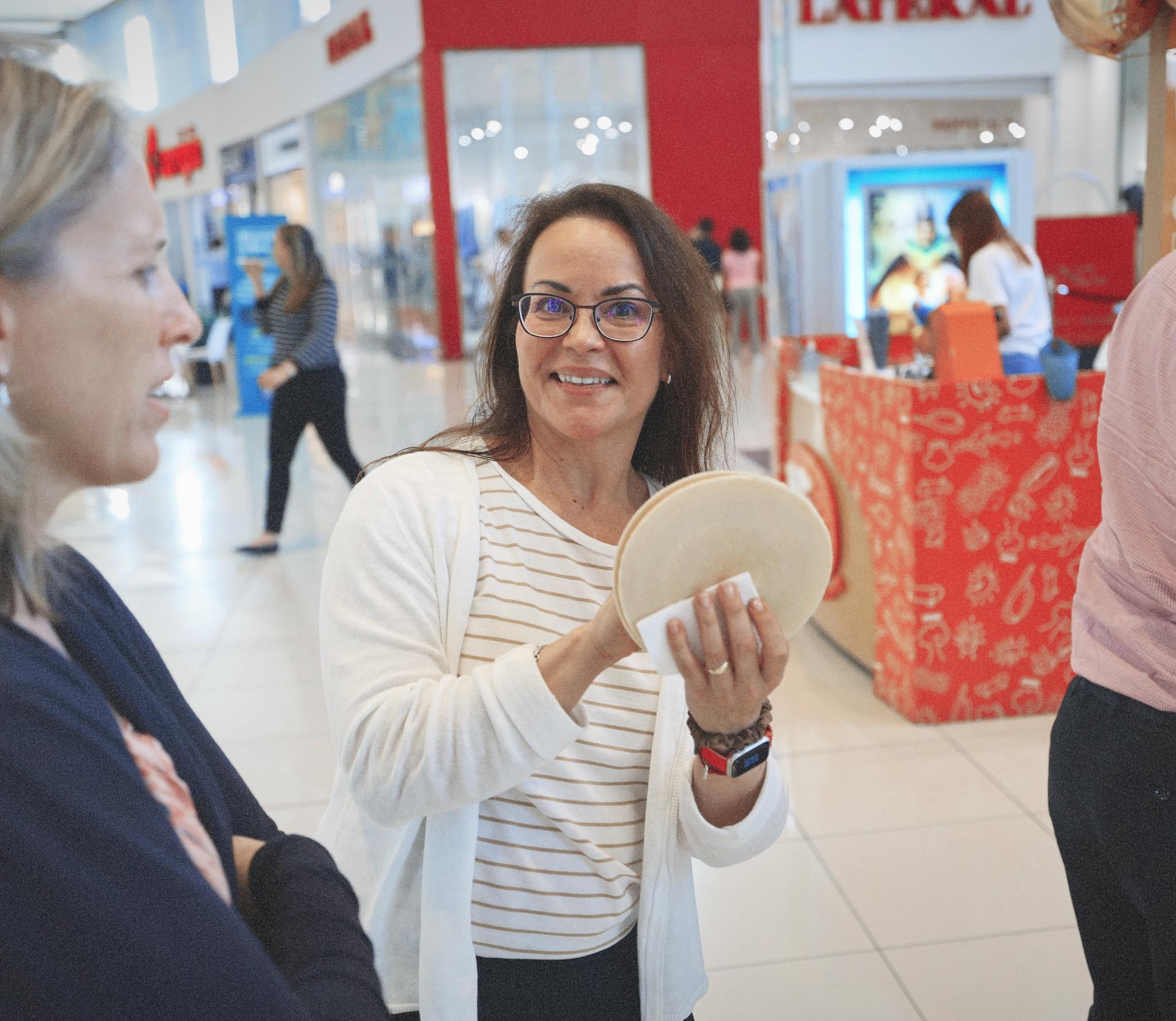

To strategically avoid Santo Domingo's notorious rush hour traffic on our return journey from INTEC to our hotel, we made an enjoyable detour to Centro Comercial Galería 360, one of the city's premier shopping destinations. The modern mall provided a fascinating glimpse into contemporary Dominican consumer culture and retail experiences. After browsing various shops, we took a welcome break at one of the mall's stylish cafés, where lush ferns and modern décor created an inviting atmosphere for our group to relax and discuss the day's educational visits while enjoying refreshments. The café's location offered an excellent vantage point to observe the diverse mix of local shoppers going about their daily routines. Some us explored specialty stores, examining handcrafted items and unique souvenirs representative of Dominican culture, while others ventured into the supermarket section to observe everyday consumer products and food items available to Dominican households. The bright, air-conditioned environment of the mall, with its mixture of international brands and local retailers, provided a comfortable setting to experience another facet of contemporary urban life in Santo Domingo while allowing rush hour traffic to subside before our return to the hotel in the Colonial Zone.
Tuesday, March 19, 2025
Our School Visits Continue in Santiago
Plaza Jacaranda Rest Stop
March 19, 2025 (9:30 AM)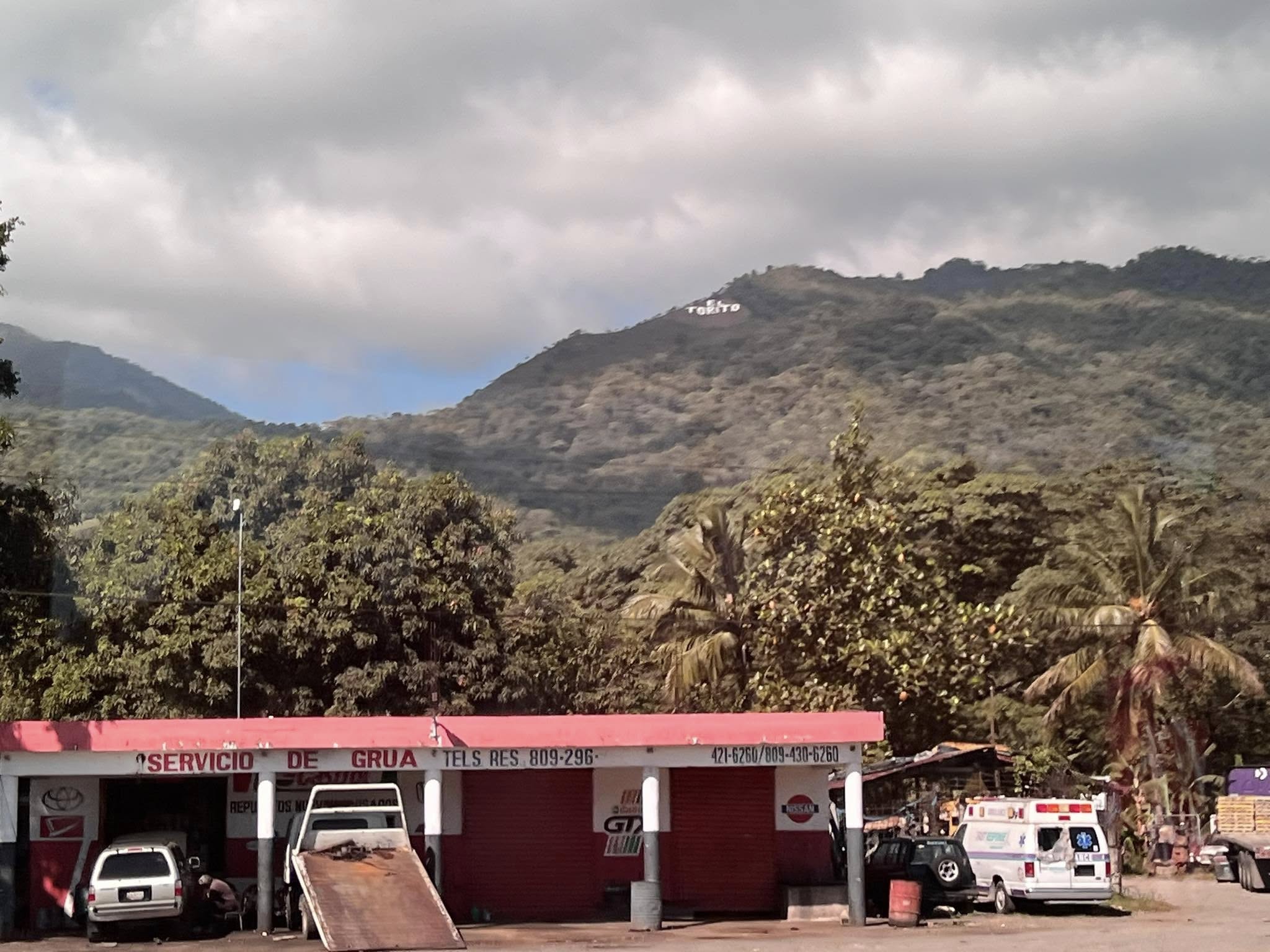
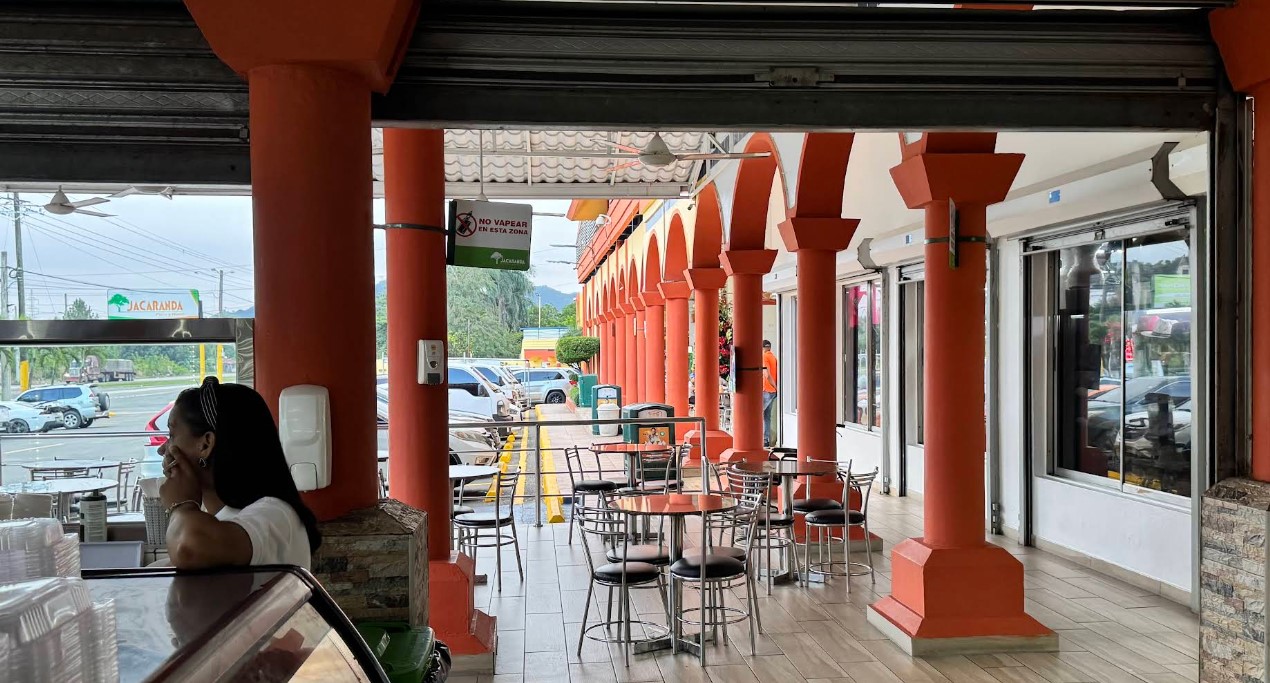
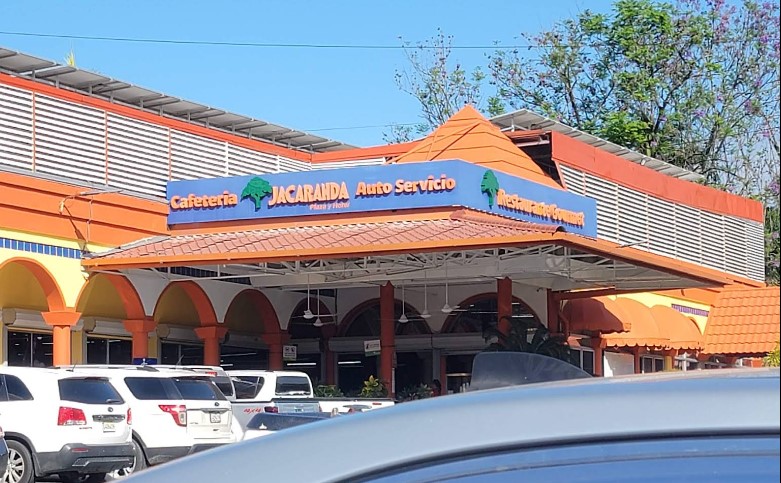
Our journey from Santo Domingo to Santiago began early on the morning of March 19th. The three-hour drive would take us through the picturesque central region of the Dominican Republic, transitioning from coastal urban landscapes to more mountainous terrain. Approximately an hour and a half into our trip, we made our first stop at Plaza Jacaranda, a vibrant roadside rest area distinctive for its bright orange columns and terracotta roof. The auto service complex featured both a cafeteria and convenience store, providing a welcome respite for travelers on the highway connecting the country's two largest cities. As we pulled into the parking area filled with vehicles from across the island, we were greeted by the impressive sight of mountains rising in the background. The outdoor seating area with its characteristic orange arches offered a comfortable place to stretch our legs while enjoying a quick Dominican breakfast. Local drivers and travelers mingled in this bustling waypoint, giving us a glimpse into the rhythm of domestic travel on the island. The rest stop's strategic location not only provided essential services but also showcased the beautiful mountainous landscape that characterizes the country's interior. After refreshments and a brief break, we continued our journey northward toward Santiago, recharged and ready to experience more of the Dominican Republic's diverse geography and culture.
Liceo Científico Dr. Miguel Canela Lázaro
March 19, 2025 (11:30 AM)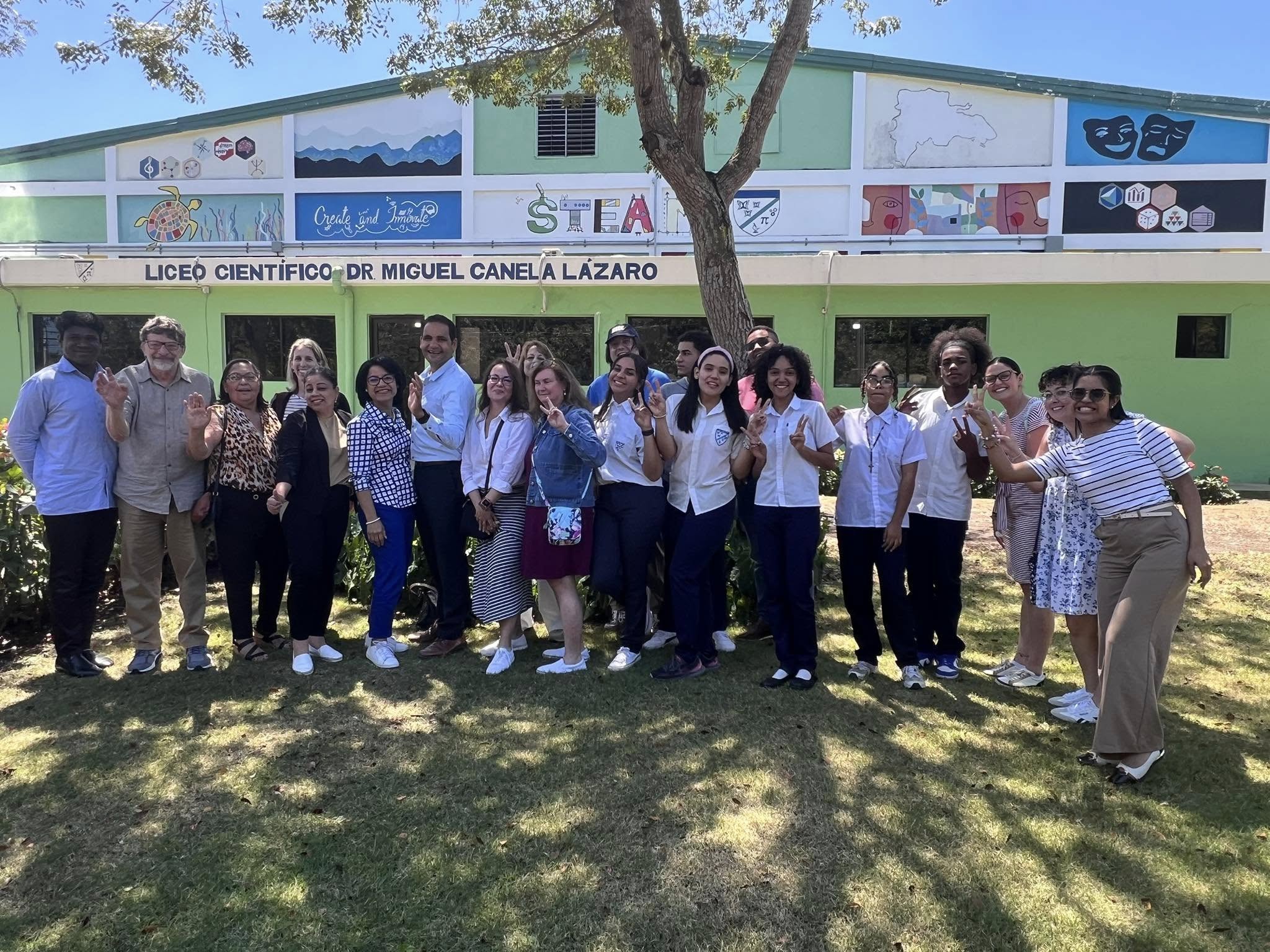
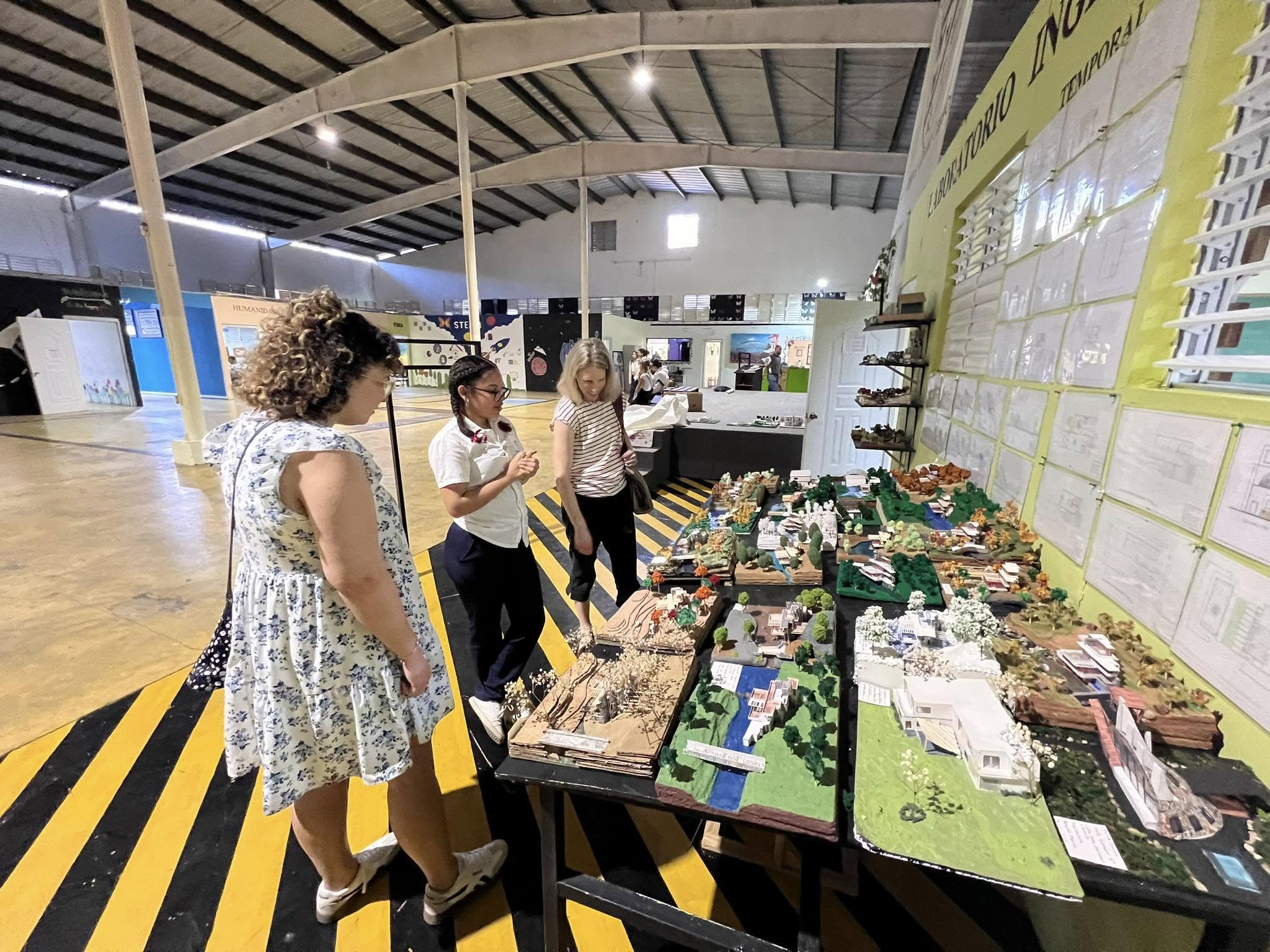
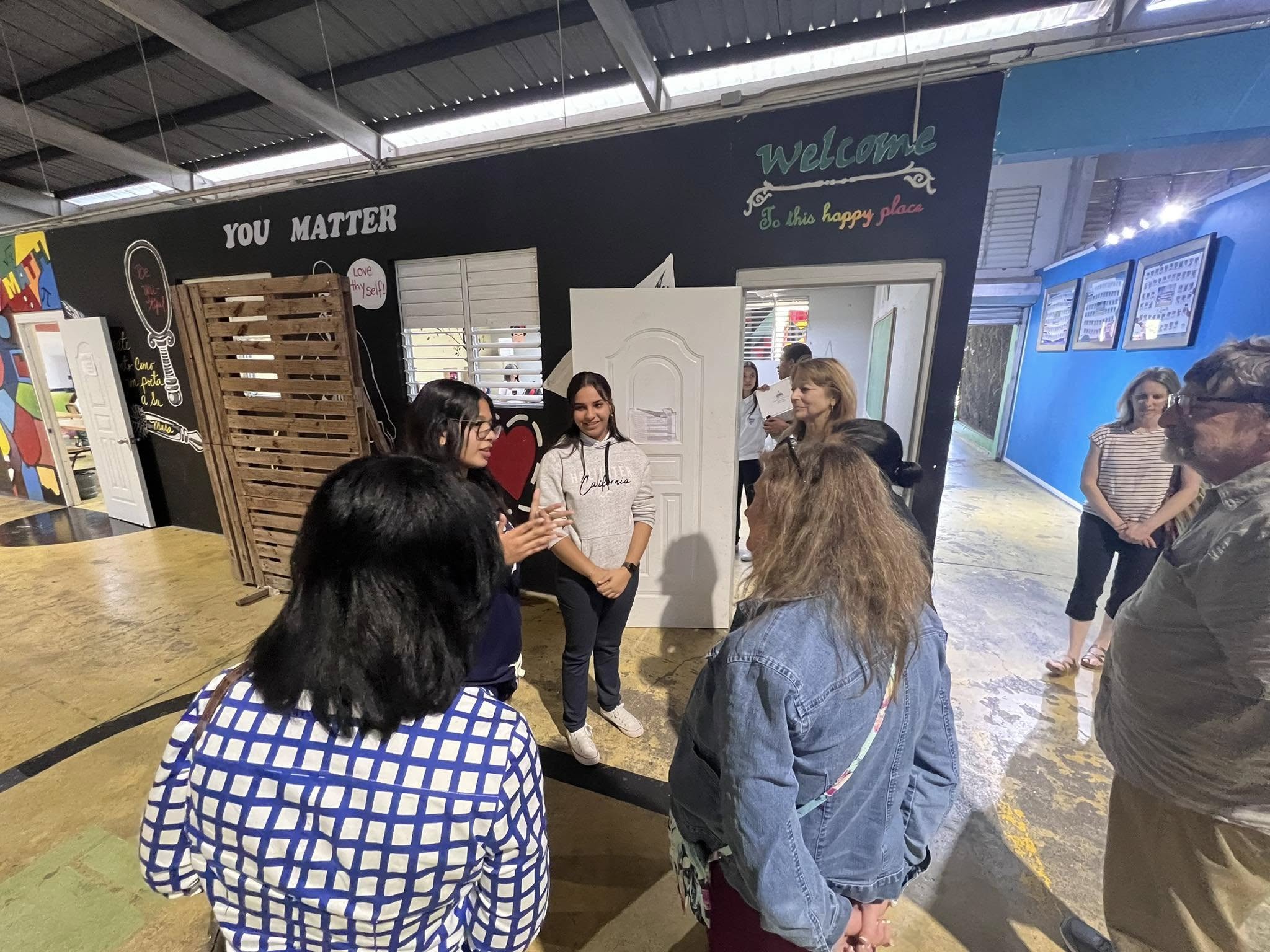
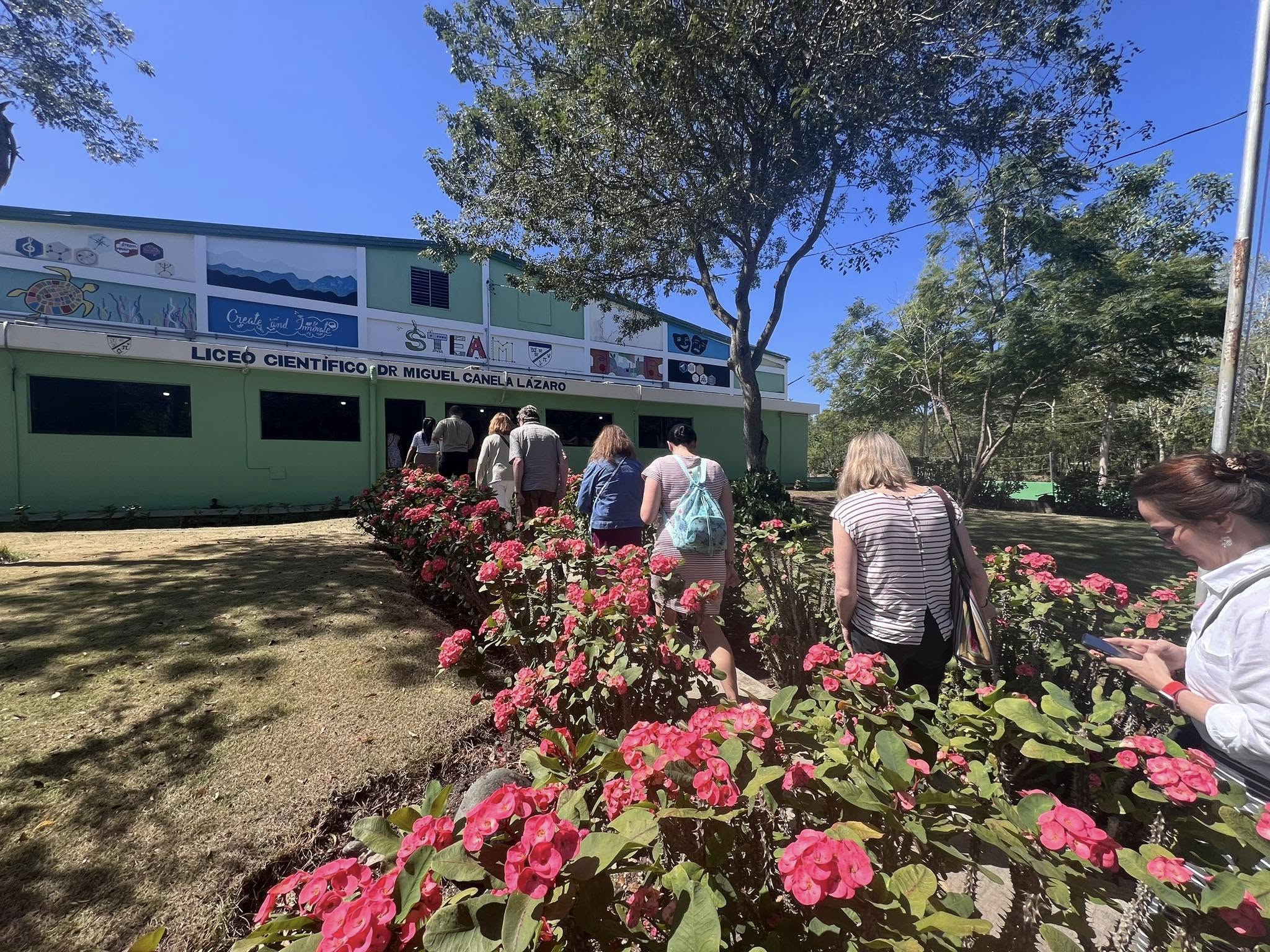
Continuing our journey toward Santiago, we made a significant educational stop at the Liceo Científico Dr. Miguel Canela Lázaro, an innovative secondary school nestled in a beautiful rural setting. As we approached the distinctive green building, we were welcomed by a pathway lined with vibrant pink flowers and well-maintained grounds reflecting the school's emphasis on creating an inspiring learning environment. The school's façade immediately revealed its educational focus through colorful murals depicting STEM concepts, arts, and environmental themes, including a sea turtle and theatrical masks that hinted at the institution's holistic approach to education. Pedagogical Coordinator Jesús Ureña greeted us warmly and introduced us to the school's unique curriculum, which emphasizes scientific inquiry, sustainability, and creative problem-solving. Inside the spacious exhibition hall, students presented their architectural models and community development projects, demonstrating how the school integrates practical applications with theoretical learning. Particularly impressive was a section labeled "Laboratorio Invierno" (Winter Laboratory) where detailed miniature models of sustainable housing and infrastructure showcased students' understanding of environmental design principles. In another area marked by a wall proclaiming "YOU MATTER" and "Welcome to this happy place," students discussed how the school's positive environment philosophy contributes to their academic and personal development. Throughout our tour, we engaged directly with students in their distinctive white uniform shirts, who impressed us with their articulate explanations and evident pride in their educational community. Before departing, we gathered for a group photo with students and staff, capturing a meaningful moment of international educational exchange. This visit provided invaluable insights into how innovative teaching approaches are being implemented in the Dominican Republic's rural regions, creating educational opportunities that rival urban institutions.
Casa Museo Hermanas Mirabal
March 19, 2025 (1:30 PM)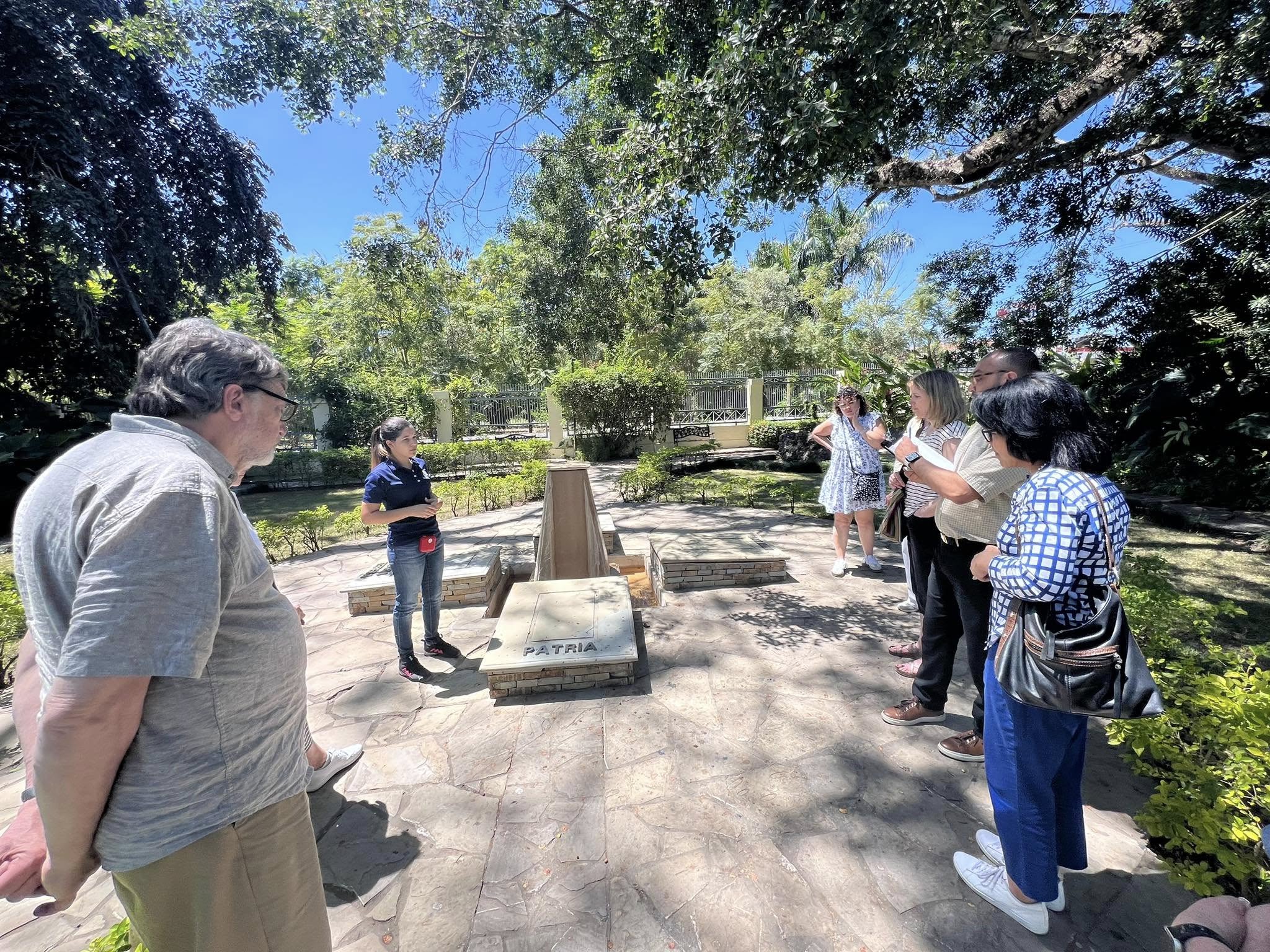
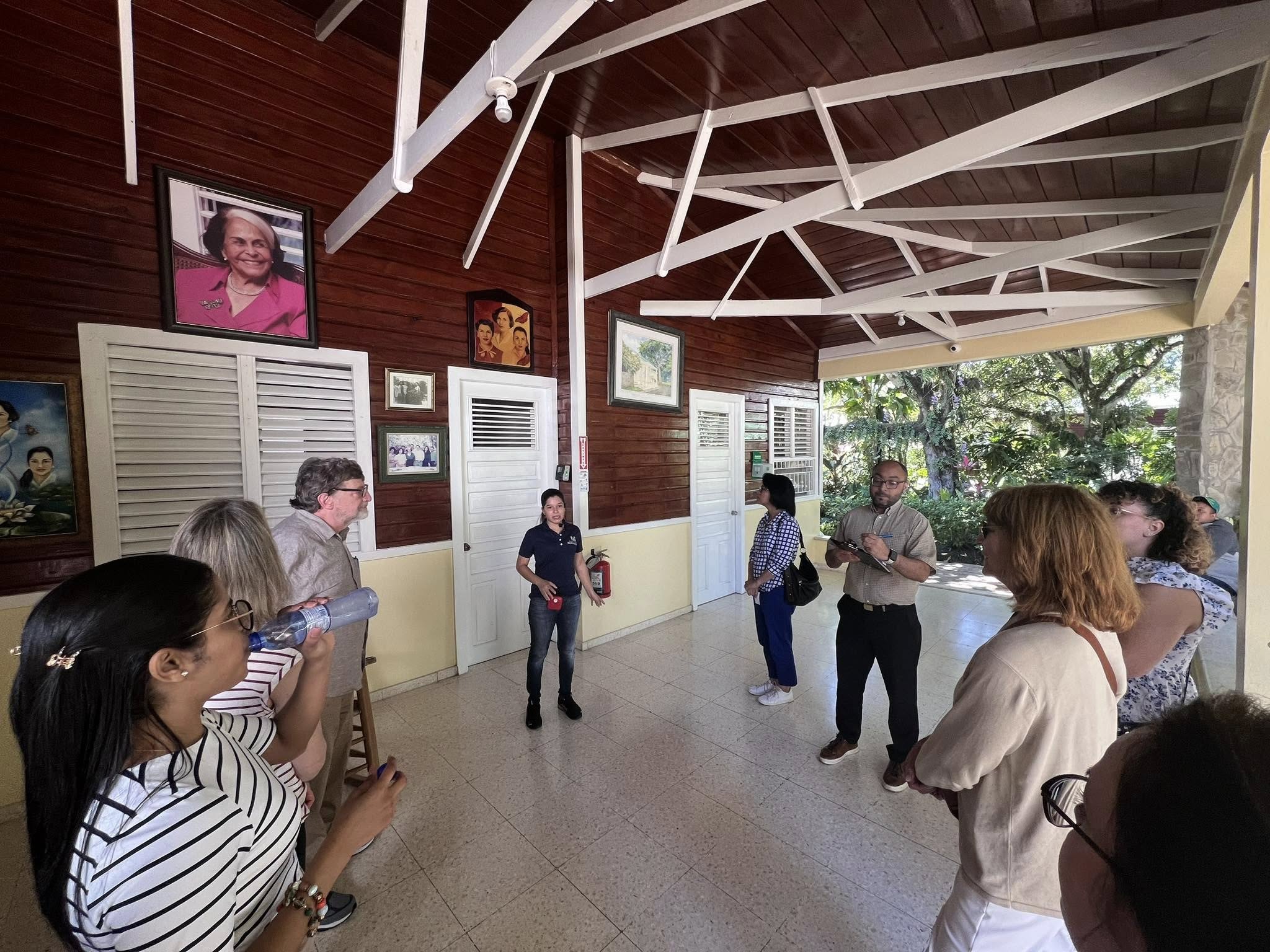
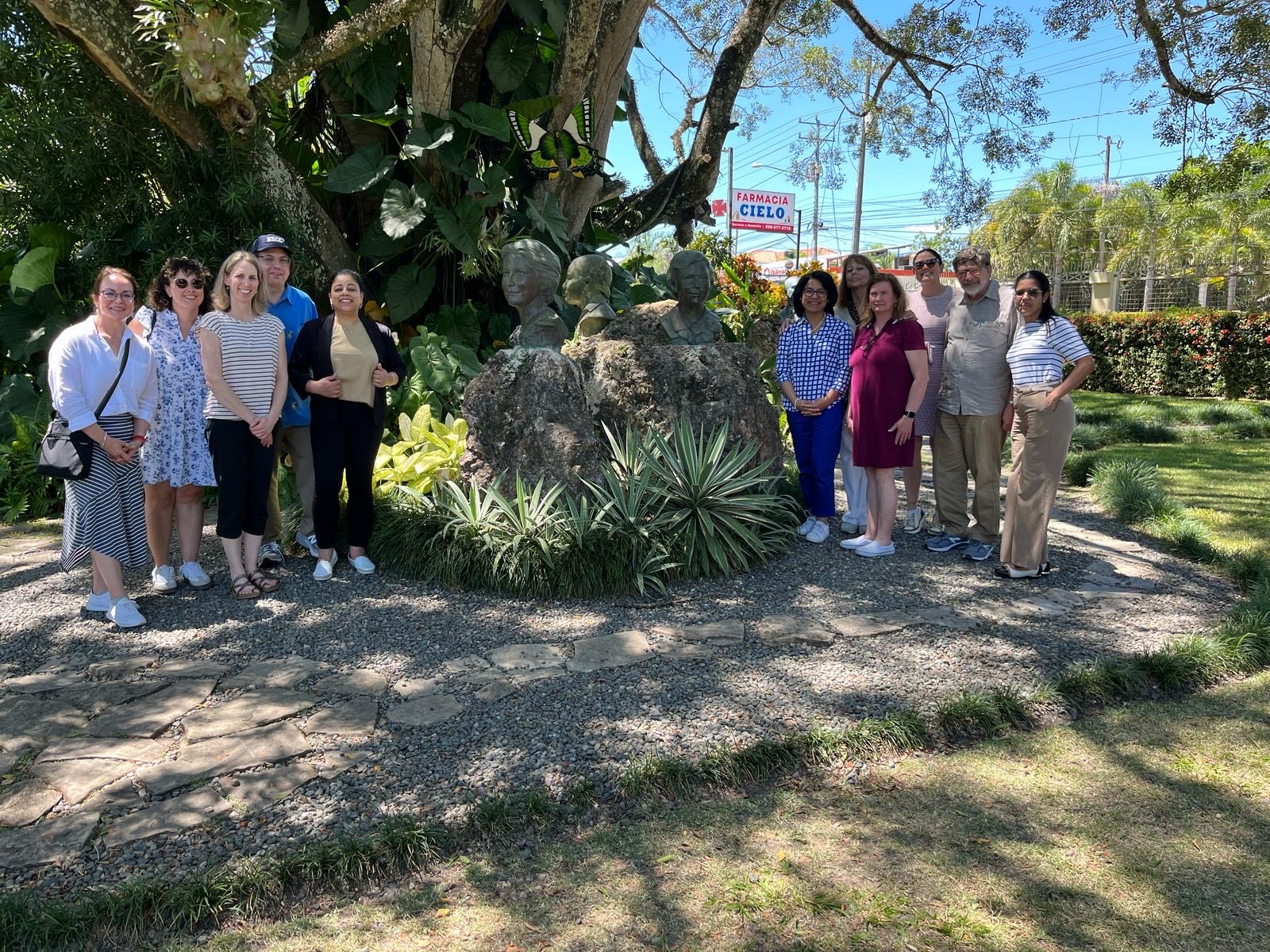
Continuing our journey toward Santiago, we made a powerful historical stop at the Casa Museo Hermanas Mirabal, the preserved family home of the Mirabal sisters, iconic figures in Dominican history and symbols of resistance against the Trujillo dictatorship. As we approached the museum, we were struck by the serene garden setting with its stone pathway leading to a memorial marked with "Patria" (Homeland), one of the sisters' names, symbolizing their ultimate sacrifice for their country. Our knowledgeable guide led us through the grounds, explaining the significance of this site as both a home and now a place of remembrance and education. Inside the beautifully preserved wooden house with its distinctive white beams and high ceilings, we gathered in the main hall adorned with portraits of the sisters. Of particular note was the large photograph of Minerva Mirabal in her distinctive pink attire, whose courage and conviction along with her sisters Patria and María Teresa led to their assassination in 1960 by Trujillo's regime, an event that catalyzed opposition to the dictatorship. The museum thoughtfully maintains original furnishings and personal belongings, creating an intimate connection to these women whose legacy extends far beyond the Dominican Republic. The guide's passionate narrative brought to life the sisters' transformation from ordinary women to extraordinary activists, explaining how their murder eventually helped spark the downfall of one of the Caribbean's most brutal dictatorships. This visit provided essential historical context for understanding Dominican society today, highlighting how the Mirabal sisters' courage has inspired human rights and women's movements worldwide, even being commemorated through the United Nations' International Day for the Elimination of Violence Against Women on November 25, the anniversary of their assassination.
Universidad Autónoma de Santo Domingo - Santiago Campus
March 19, 2025 (5:30 PM)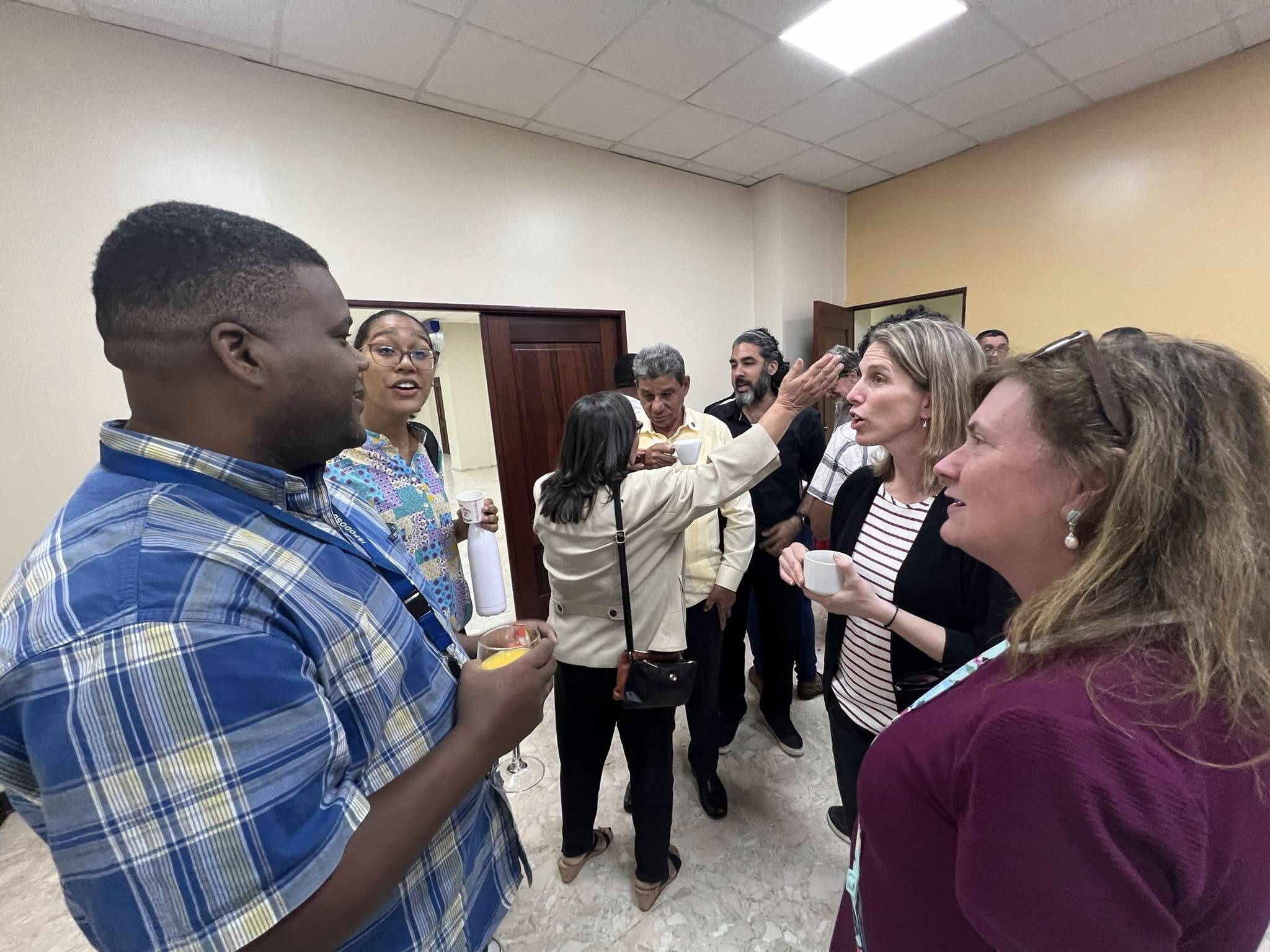
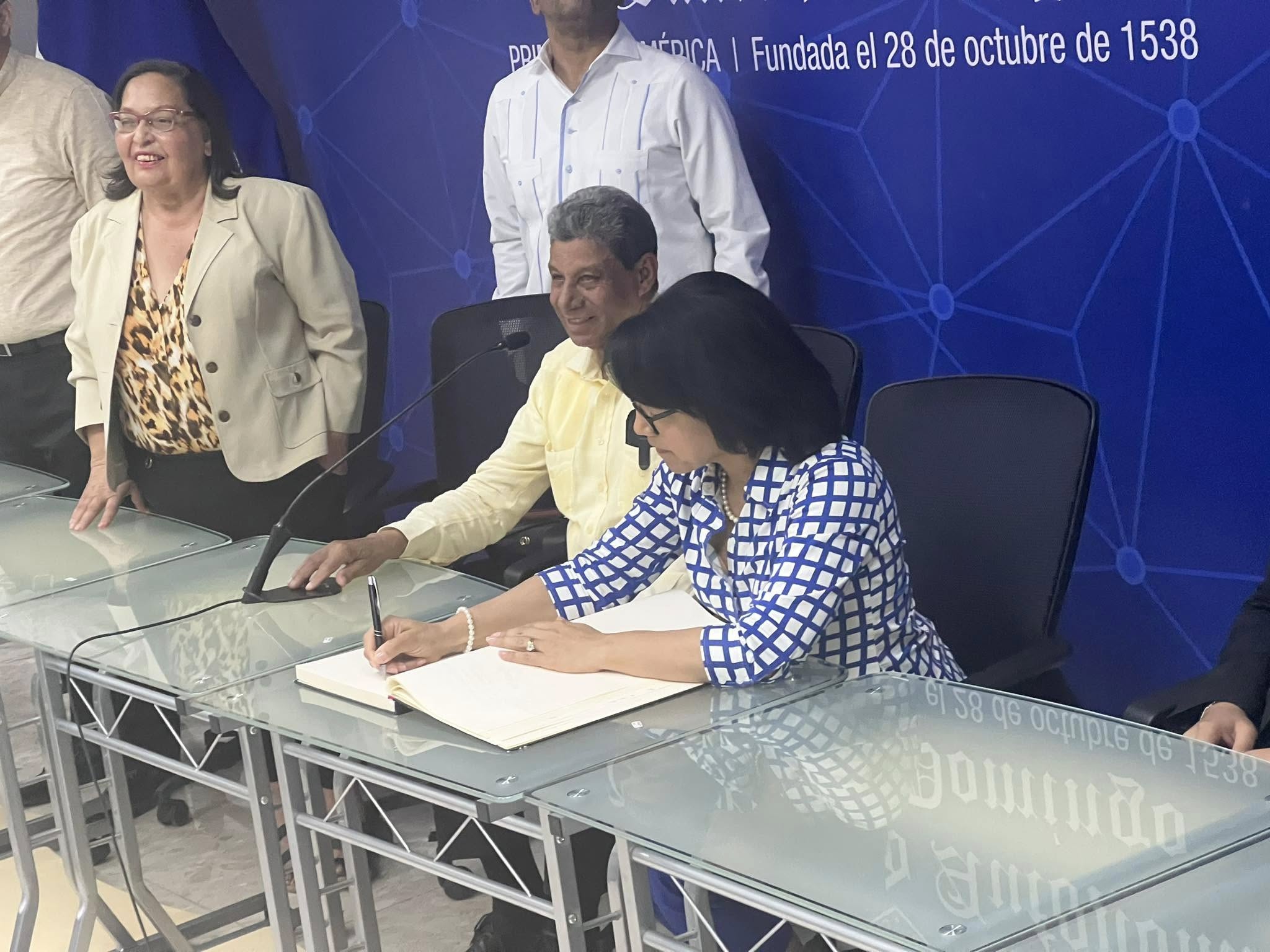

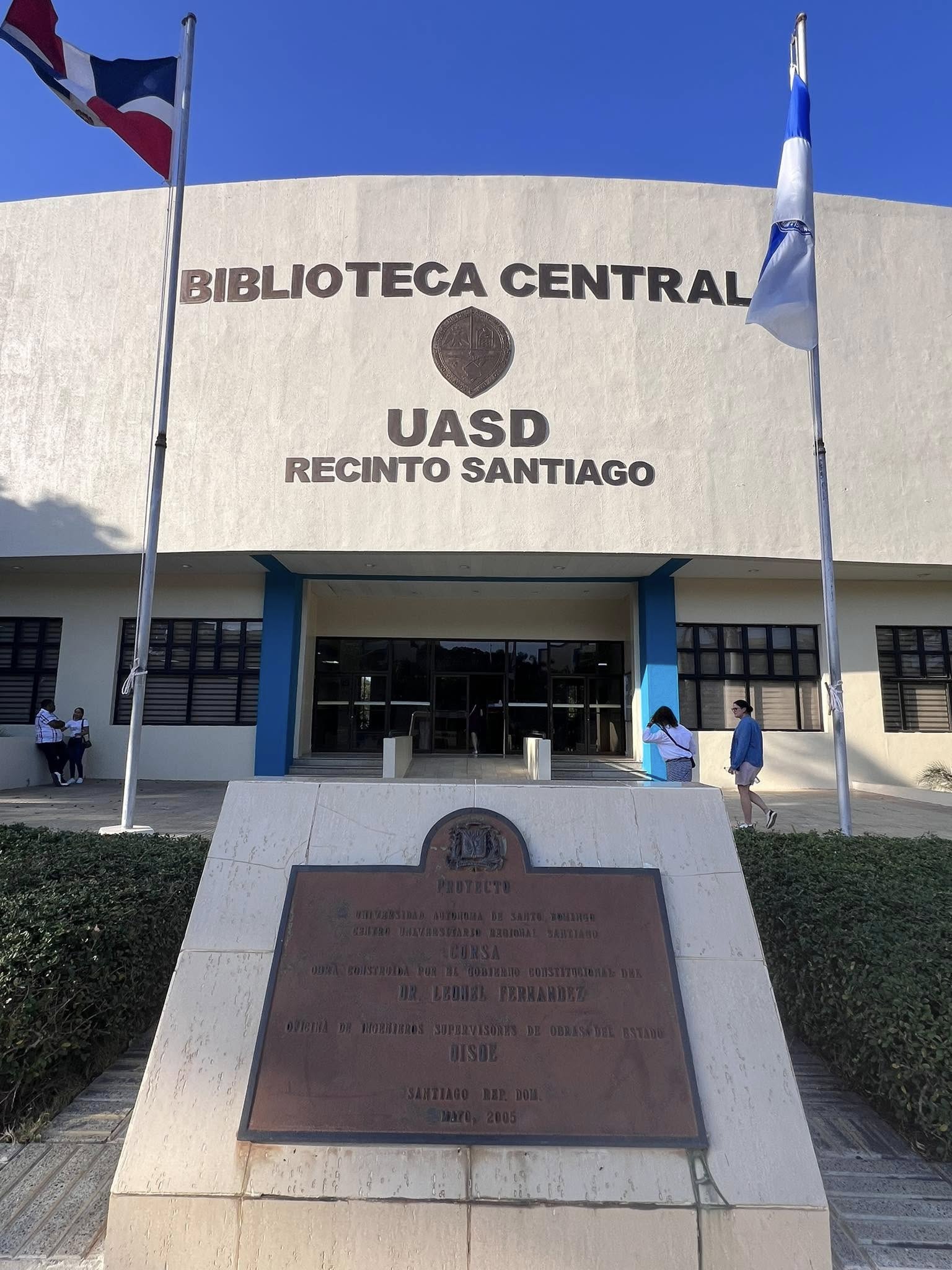
After enjoying lunch at Byblos Tapas in Santiago, we continued our educational journey with a visit to the Santiago campus of the Universidad Autónoma de Santo Domingo (UASD). The modern campus, marked by its distinctive white Biblioteca Central building flying both the Dominican flag and the university's blue and white banner, serves as an important educational hub for the Cibao region. Upon arrival, we were welcomed with refreshments and cordial conversation with faculty members, creating an atmosphere of collegial exchange. The formal portion of our visit took place in a presentation space featuring the university's impressive blue backdrop emblazoned with "Universidad Autónoma de Santo Domingo" and highlighting its founding date of October 28, 1538, underscoring its status as the oldest university in the Americas. Campus Rector Professor Juan A. Arias led a thoughtful discussion about the institution's role in providing accessible higher education throughout the country. The agenda included an illuminating student panel where participants candidly discussed the complex transportation challenges many face in pursuing their education, often requiring intricate sequences of "conchos" (shared taxis) to reach campus. These firsthand accounts provided valuable insights into the determination of Dominican students to overcome logistical obstacles in their educational journeys. A highlight of our visit was a symbolic signing ceremony in which Naydeen participated, formalizing the spirit of collaboration and knowledge exchange between our institutions. Throughout our time on campus, university officials shared both the challenges and achievements of operating a public university system with multiple regional campuses, demonstrating their commitment to making higher education accessible across the Dominican Republic. This visit to UASD's Santiago campus completed our comprehensive exploration of the Dominican higher education landscape, having experienced institutions ranging from specialized technical schools to the country's flagship public university system.
Special Stop - Monumento de Santiago
March 19, 2025 (6:45 PM)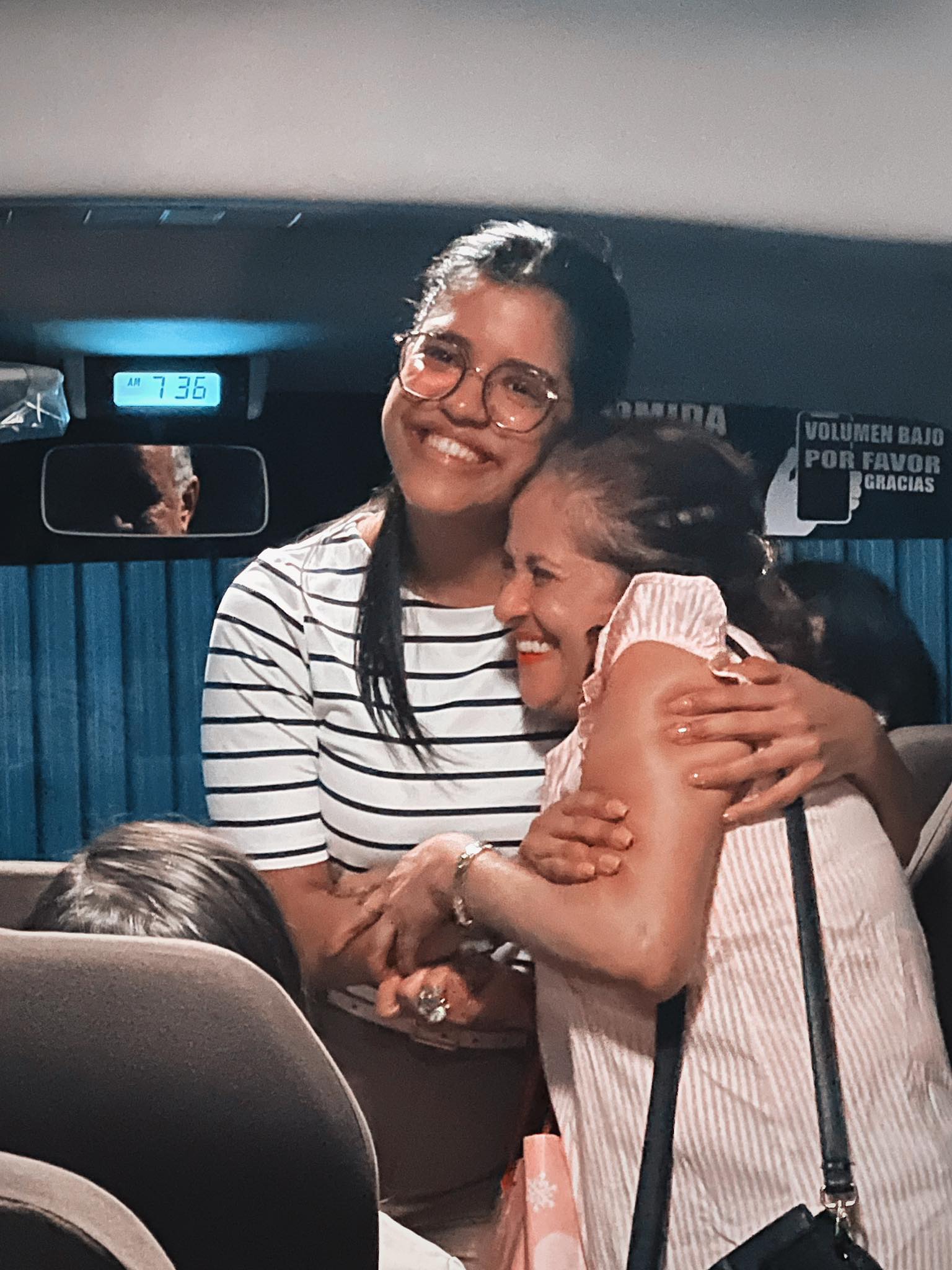
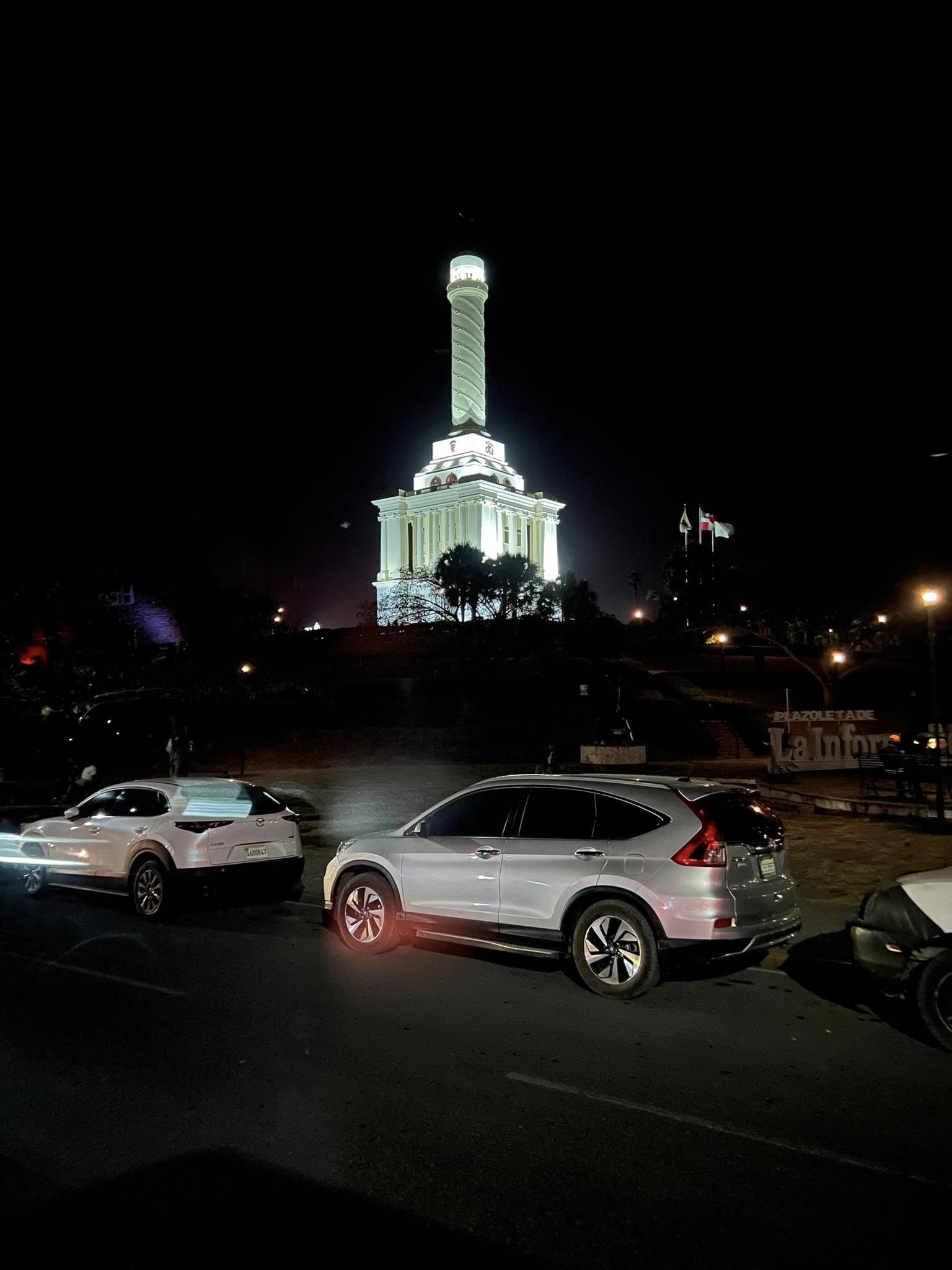
As our visit to Santiago was drawing to a close and before beginning our nighttime return to Santo Domingo, we made one particularly meaningful stop near the iconic Monumento de Santiago. This unscheduled yet heartwarming detour allowed for a special personal moment as our colleague Giselle was able to reunite with her mother, who had been patiently waiting for two hours for this brief opportunity to see her daughter. The Monument of Santiago, illuminated against the evening sky, provided a symbolic backdrop for this touching family reunion. This brief but significant moment highlighted the warmth and importance of family bonds in Dominican culture, where such reunions are treasured regardless of their brevity. It was a perfect way to conclude our visit to Santiago before embarking on the drive back to the capital, leaving us with not only professional insights from our institutional visits but also a window into the personal relationships that form the heart of Dominican society. The spontaneity of this stop and the joy visible on both faces served as a meaningful capstone to our day's experiences, reminding us that behind every professional exchange are human connections that span distances and bring meaning to our work.
Tuesday, March 20, 2025
A Visit to UCE and San Pedro
Universidad Central del Este (UCE)
March 20, 2025 (11:00 AM)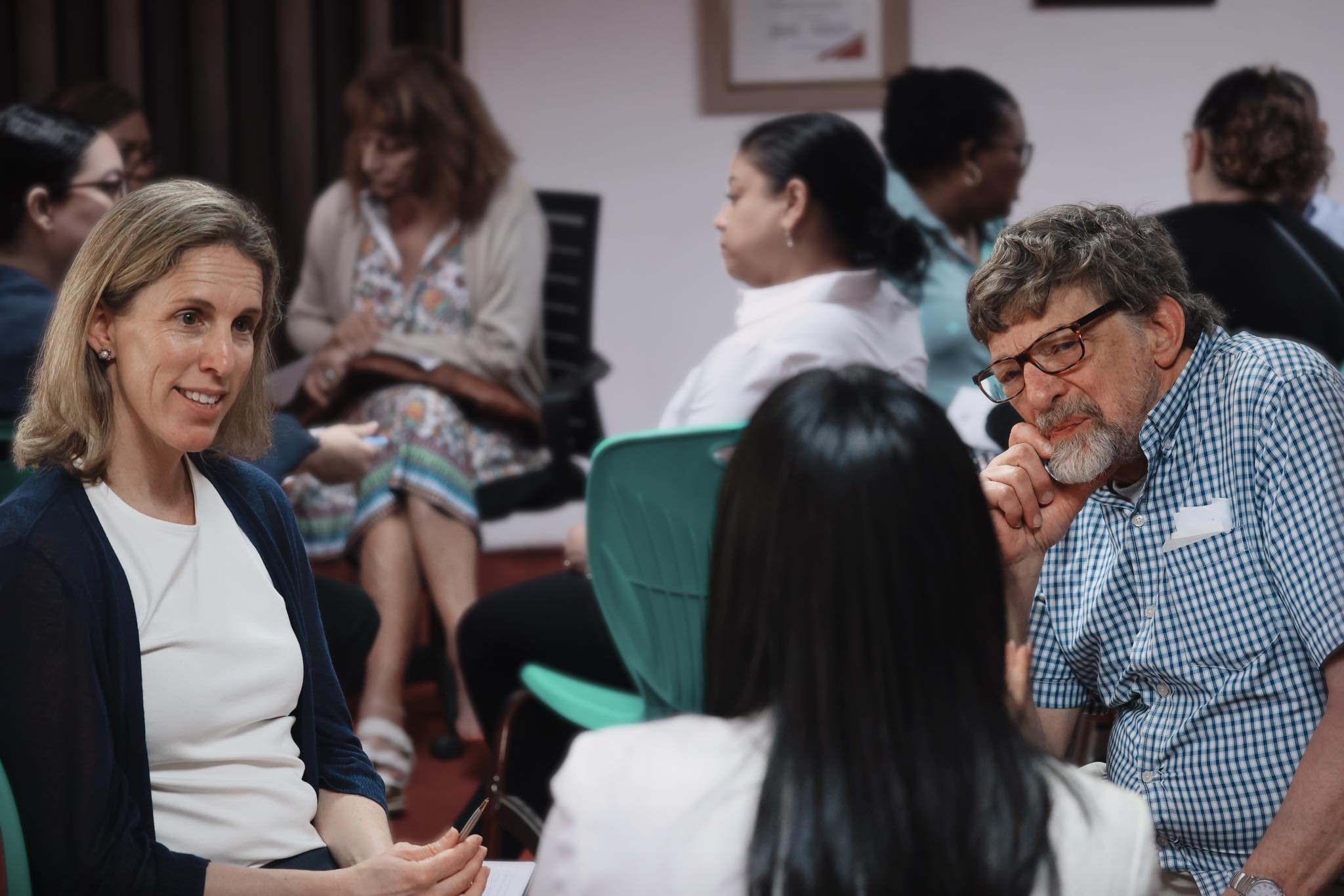
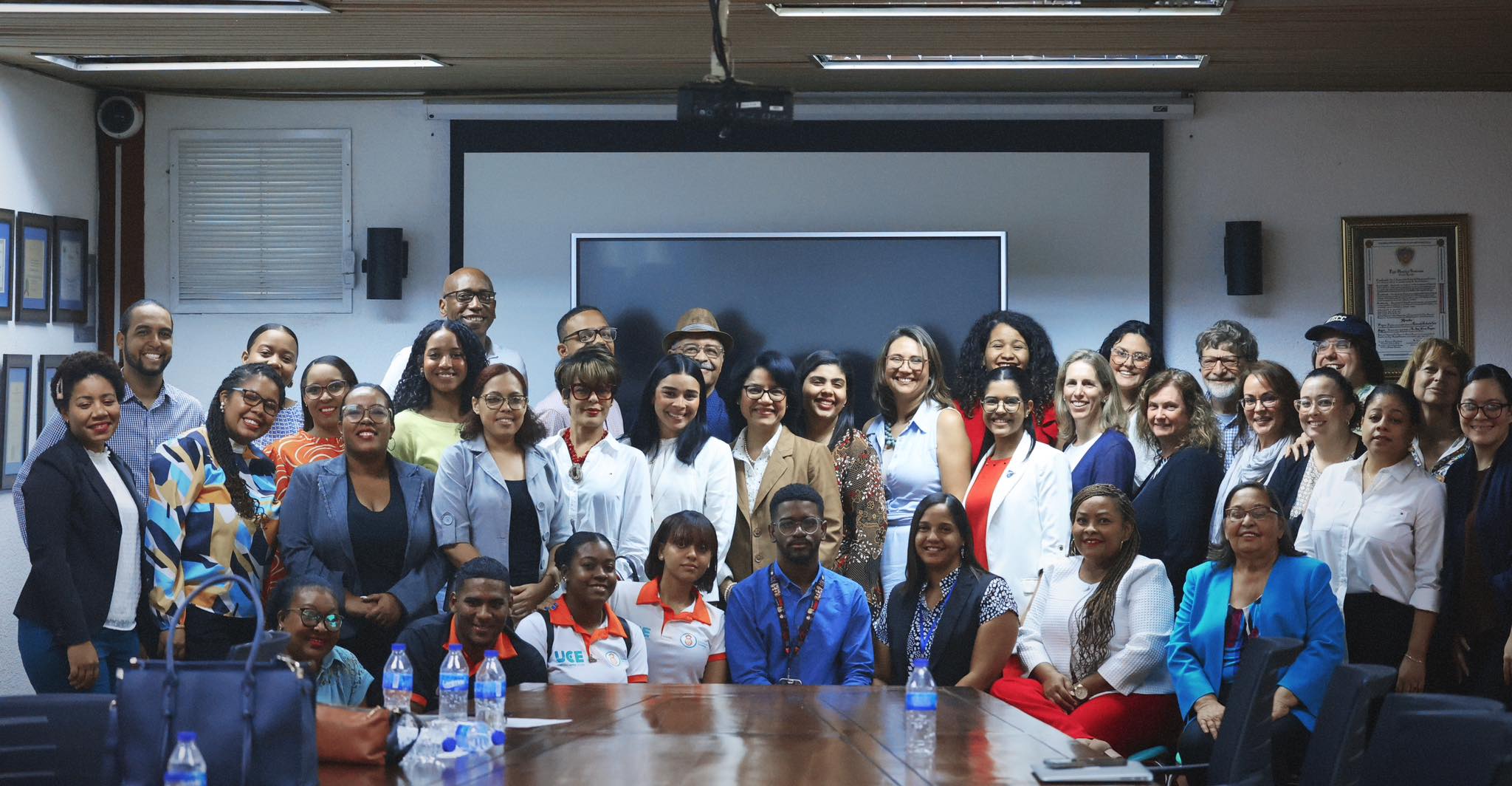
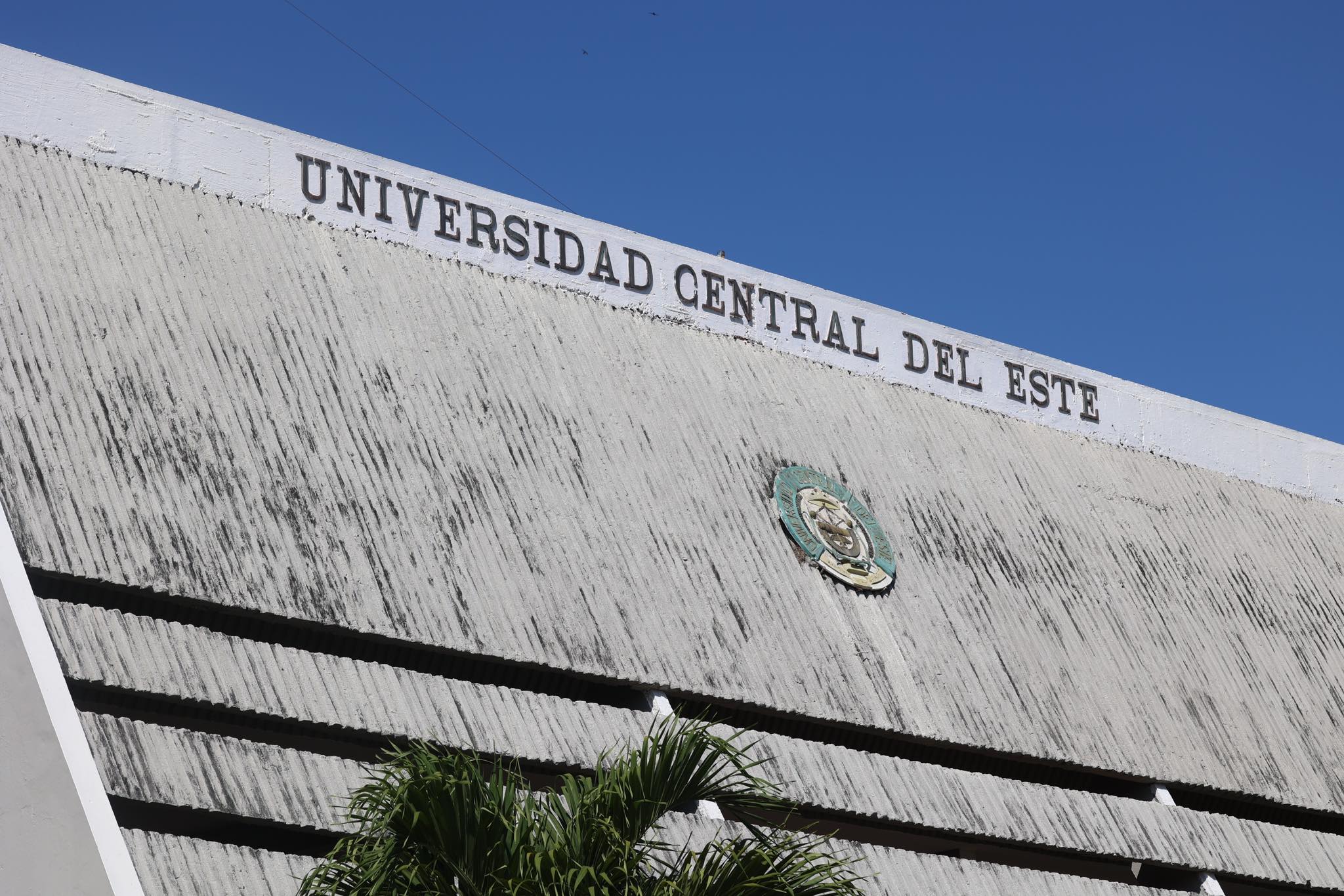
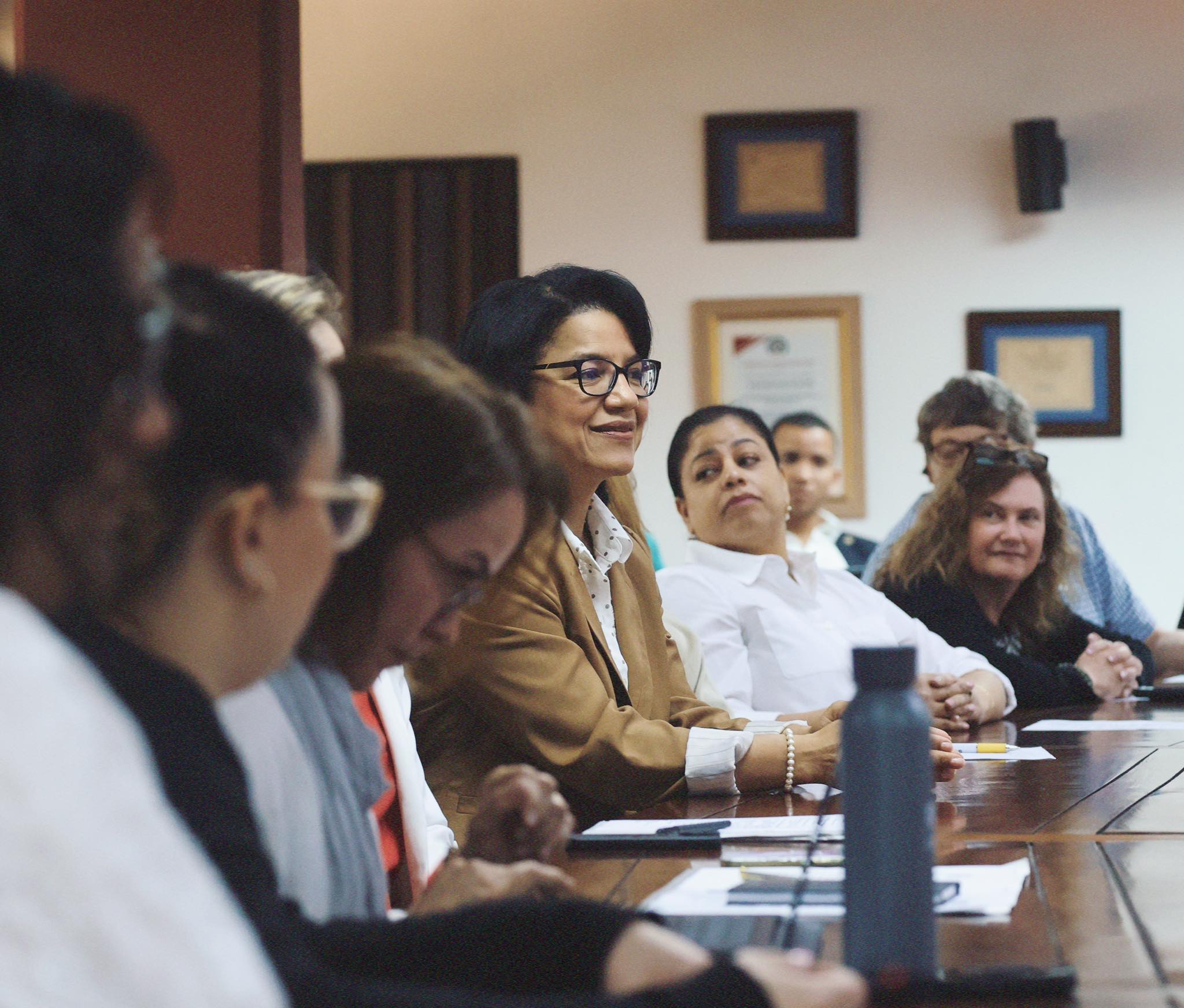
Our final day of educational visits in the Dominican Republic began with a morning trip to Universidad Central del Este (UCE) in San Pedro de Macorís. The distinctive white modernist architecture of the campus stood out against the bright blue sky, with the university's name and emblem prominently displayed on the facade. Upon arrival, we were warmly welcomed by UCE's rector, Maestro José A. Hazim Torres, along with his administrative team, faculty members, and student representatives. What made this visit particularly productive was the innovative format that followed the introductory session. Our delegation was able to break out into smaller, focused discussion groups based on professional roles and academic interests, creating valuable opportunities for more targeted conversations. Administrators met with their UCE counterparts to discuss governance and operational challenges, while faculty members explored potential areas for academic collaboration in their respective disciplines. Throughout these conversations, both sides identified several promising avenues for future partnerships, including faculty and student exchanges, joint research initiatives, and shared curriculum development. Before concluding our visit, the entire group gathered for a commemorative photo, capturing this significant moment of international educational exchange. This final institutional visit rounded out our comprehensive exploration of the Dominican higher education landscape, having experienced diverse institutions ranging from technical schools to public and private universities across multiple regions of the country. The insights gained and connections established at UCE and throughout our journey laid a strong foundation for ongoing collaboration between our educational communities.
UCE Medical School and Campus Tour
March 20, 2025 (1:30 PM)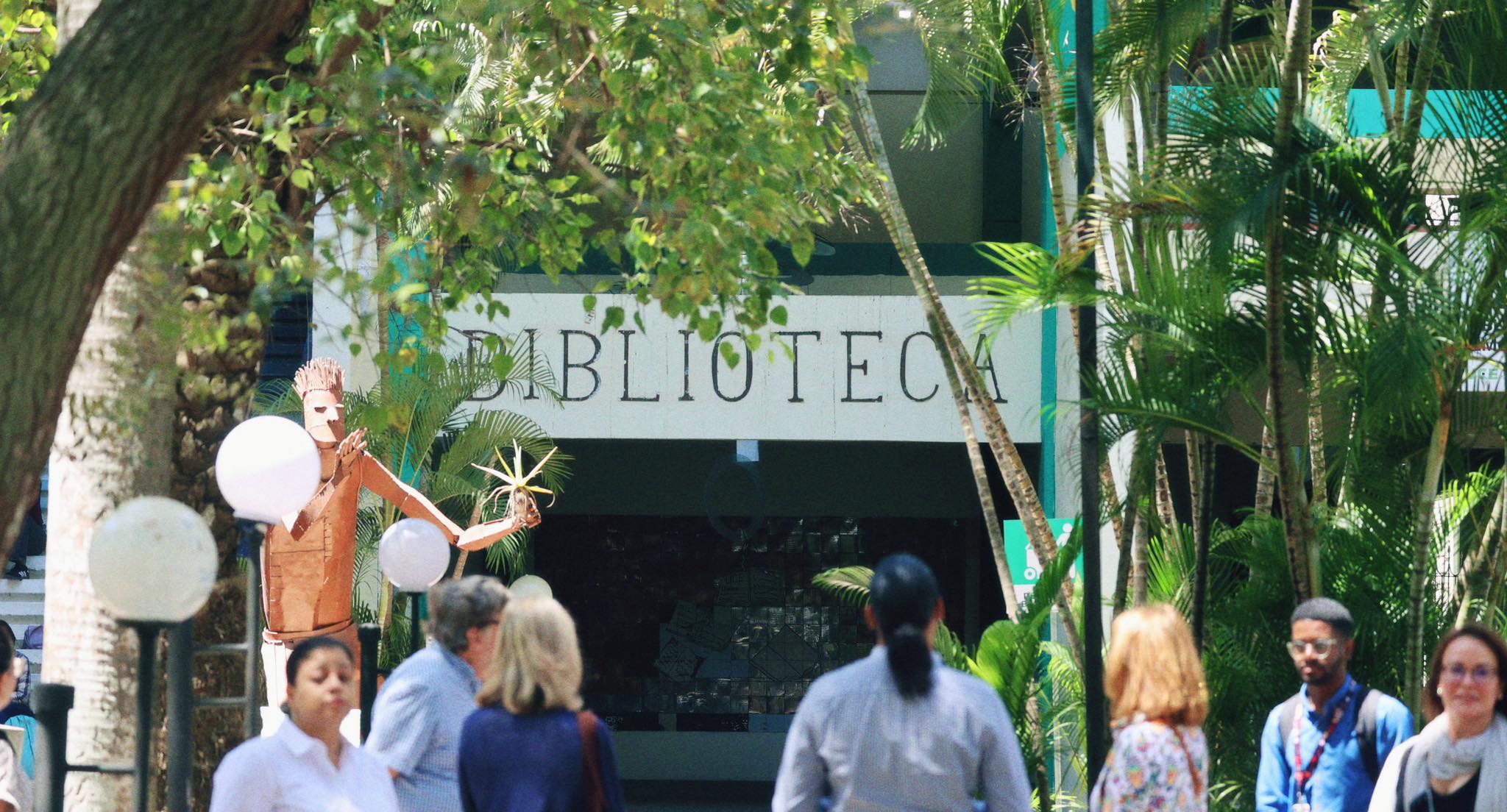
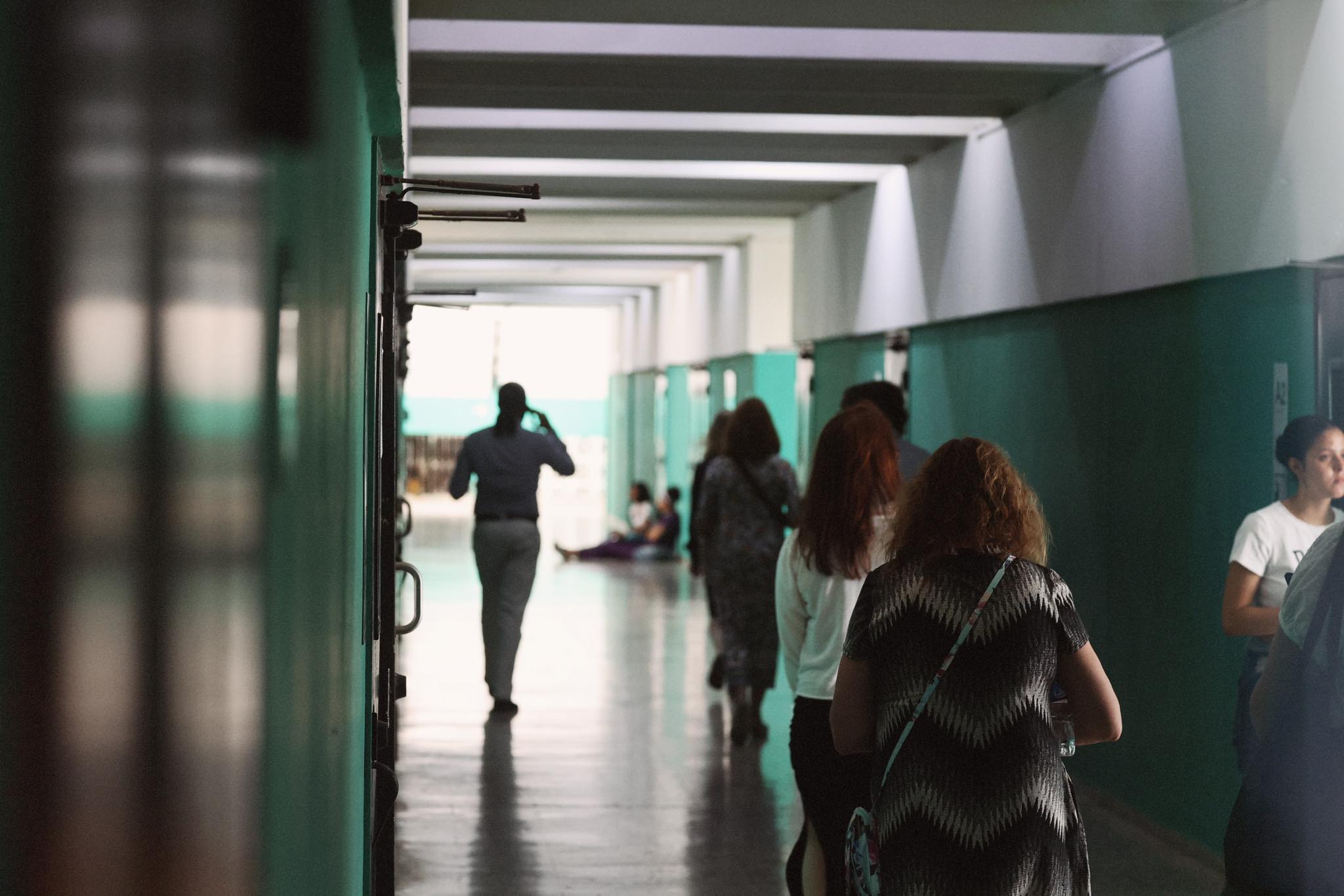
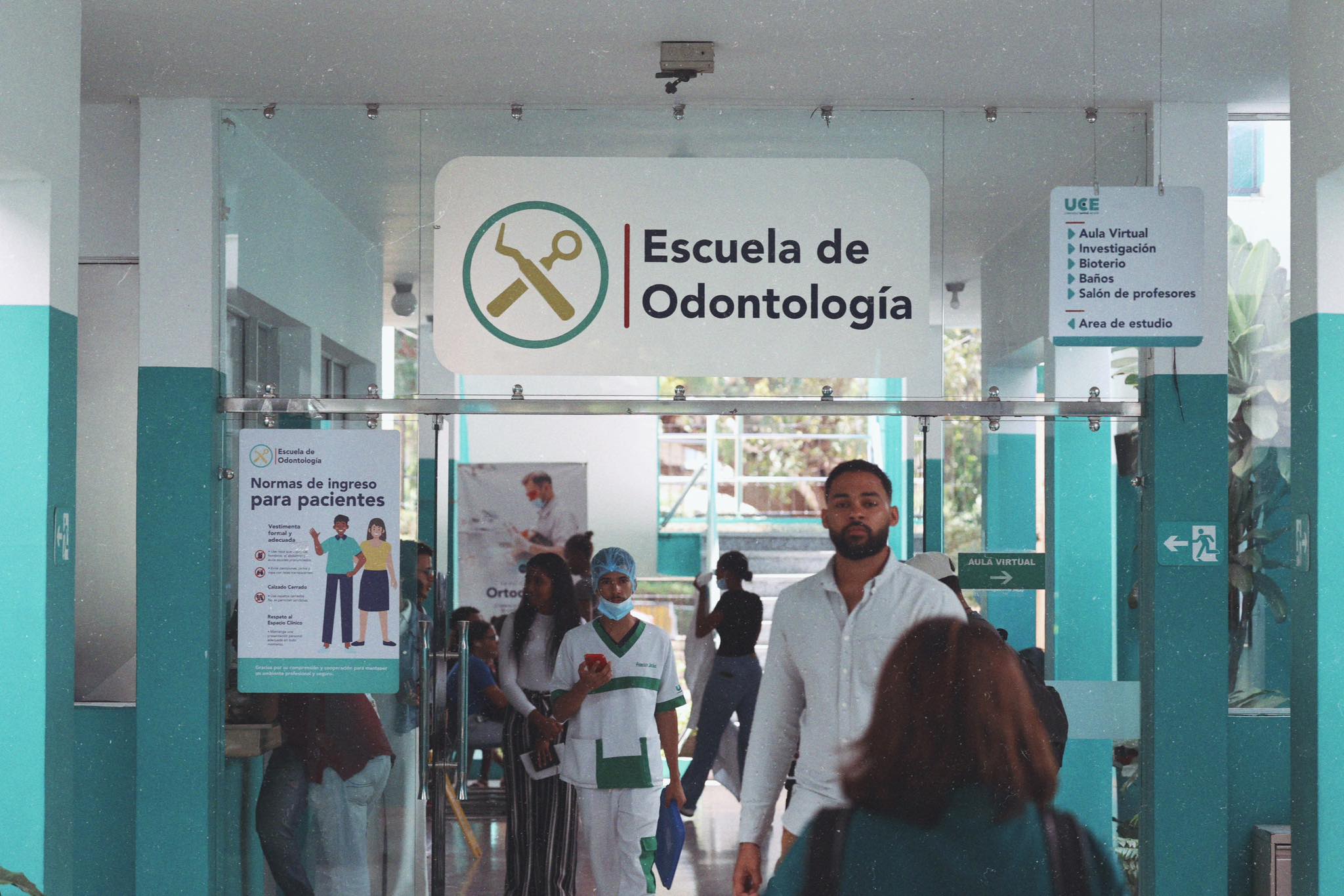
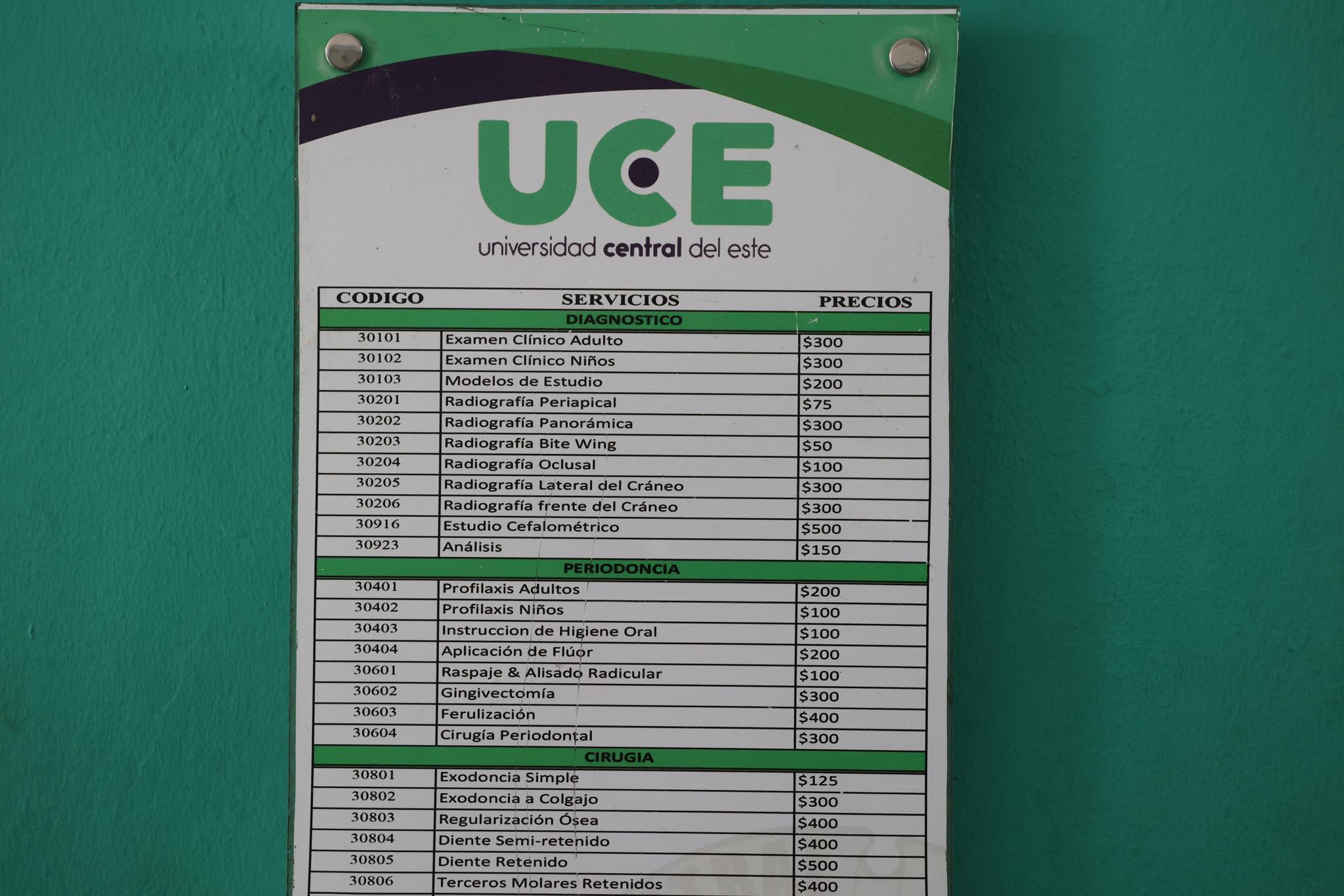
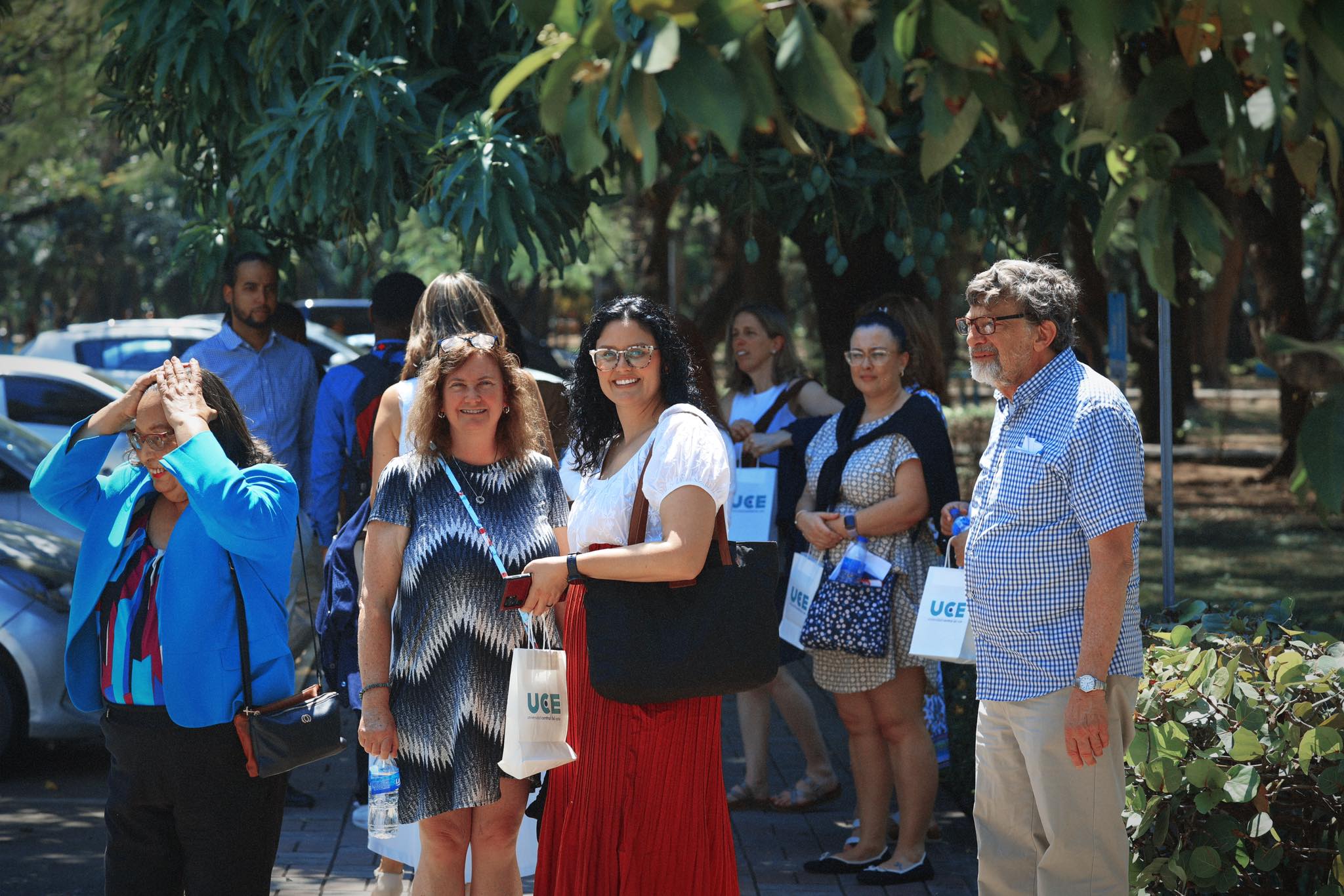
Following our productive meeting with Rector José A. Hazim Torres and UCE faculty, we embarked on an informative tour of the university campus, with particular emphasis on their renowned medical school facilities. Our exploration began at the campus library, or "Biblioteca," its entrance framed by lush tropical vegetation and featuring a whimsical wooden figure holding white balloons, creating a welcoming atmosphere for students and visitors alike. As we proceeded through the institution, we navigated the distinctive mint-green corridors that serve as a visual signature of UCE's buildings, with natural light streaming through the architectural design to create bright, airy passageways connecting various departments. The highlight of our tour was the visit to the School of Dentistry (Escuela de Odontología), where we observed the practical training environment that prepares students for professional practice. The school's modern facilities include virtual classrooms, research areas, and spaces dedicated to faculty and student collaboration, all clearly indicated by directional signage. Of particular interest was the on-campus dental clinic where students gain hands-on experience while providing affordable care to the community. A detailed price list displayed the comprehensive range of services offered, from basic diagnostic procedures to advanced periodontal treatments and oral surgeries, with costs significantly lower than private practices—reflecting the dual educational and community service mission of the institution. We observed dental students in their distinctive green and white uniforms, interacting with patients and working under faculty supervision. This clinical component of UCE's healthcare education programs demonstrated the university's commitment to experiential learning while simultaneously addressing the oral healthcare needs of the surrounding population. The tour provided valuable insights into how UCE integrates theory with practice in medical education, a model that offered useful perspectives for potential adaptation in other educational contexts.
Colonial District - Nighttime Food Excursion
March 20, 2025 (8:30 PM)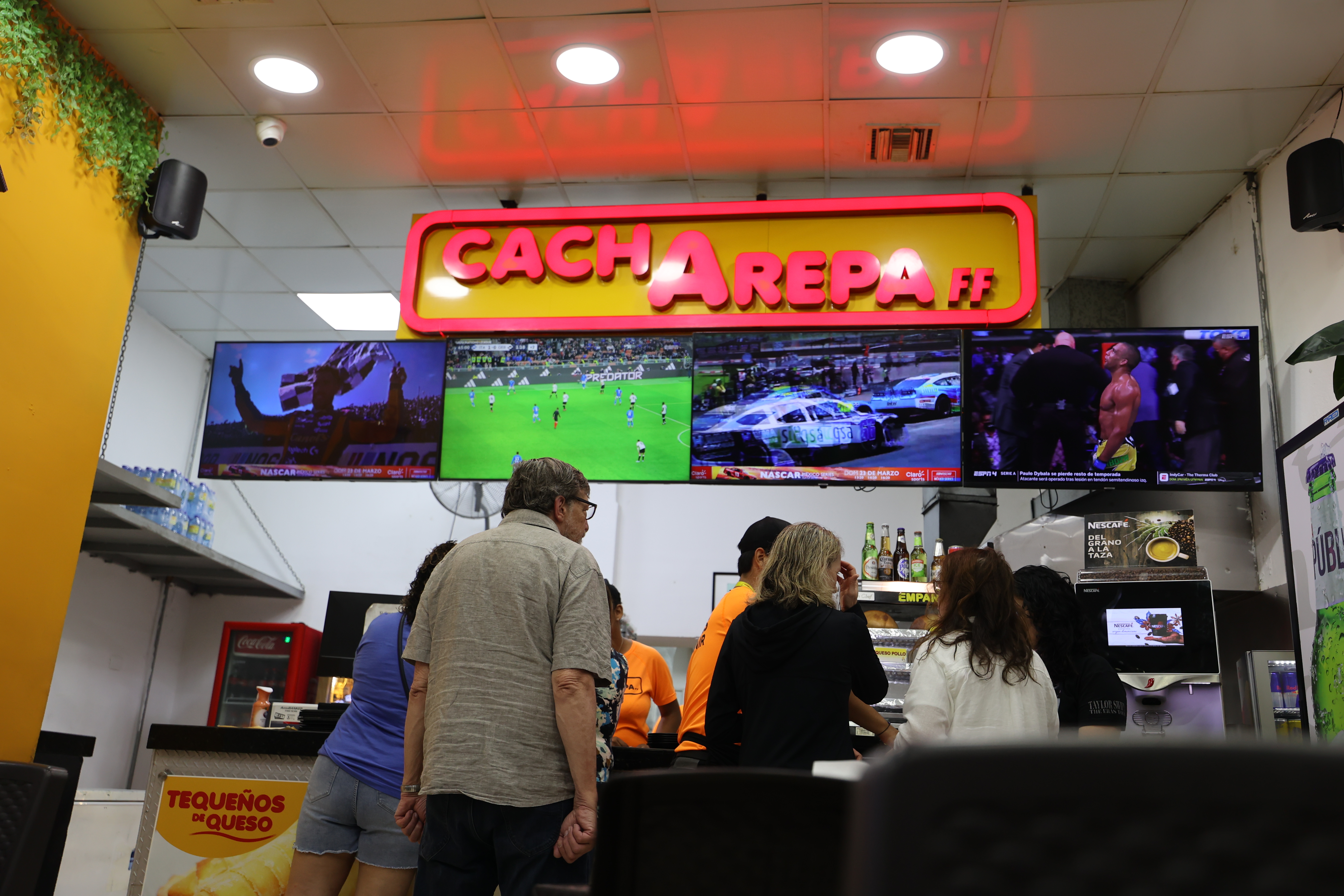
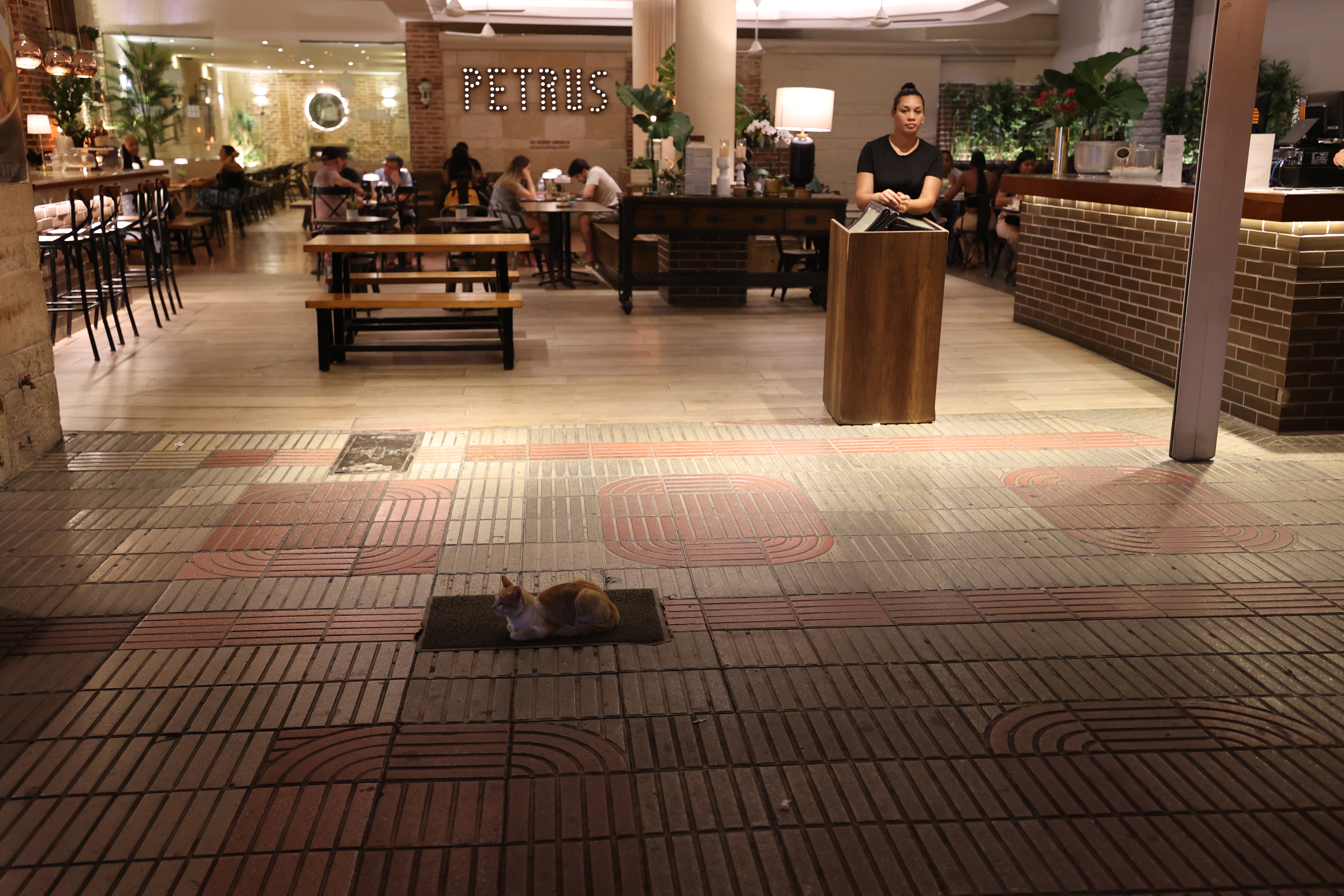
After returning to our hotel in Santo Domingo's historic Colonial District following a full day of academic engagements and coastal relaxation, several members of our group found themselves eager to experience the neighborhood's vibrant nightlife and local cuisine. Despite the late hour, the Colonial District remained animated with both tourists and locals enjoying the pleasant evening temperatures. Our culinary adventure led us to a popular Venezuelan-Dominican fusion spot called "Cacharepa", easily identifiable by its striking pink neon signage that cast a warm glow over the counter area. The establishment featured multiple television screens broadcasting various sporting events, creating an energetic atmosphere where patrons could enjoy both food and entertainment. The restaurant specialized in arepas, the beloved cornmeal patties that are a staple of Venezuelan cuisine but have found enthusiastic adoption throughout the Caribbean. The menu also offered tequeños (cheese sticks) and other regional favorites that provided perfect late-night sustenance. Some members of our group opted for cachapas, sweet corn pancakes folded over melted cheese, while others selected more substantial platters that incorporated Dominican elements such as mangú (mashed plantains).
Tuesday, March 21, 2025
Museums and Signings
Centro Cultural Taíno - Indigenous Heritage Exploration
March 21, 2025 (9:00 AM)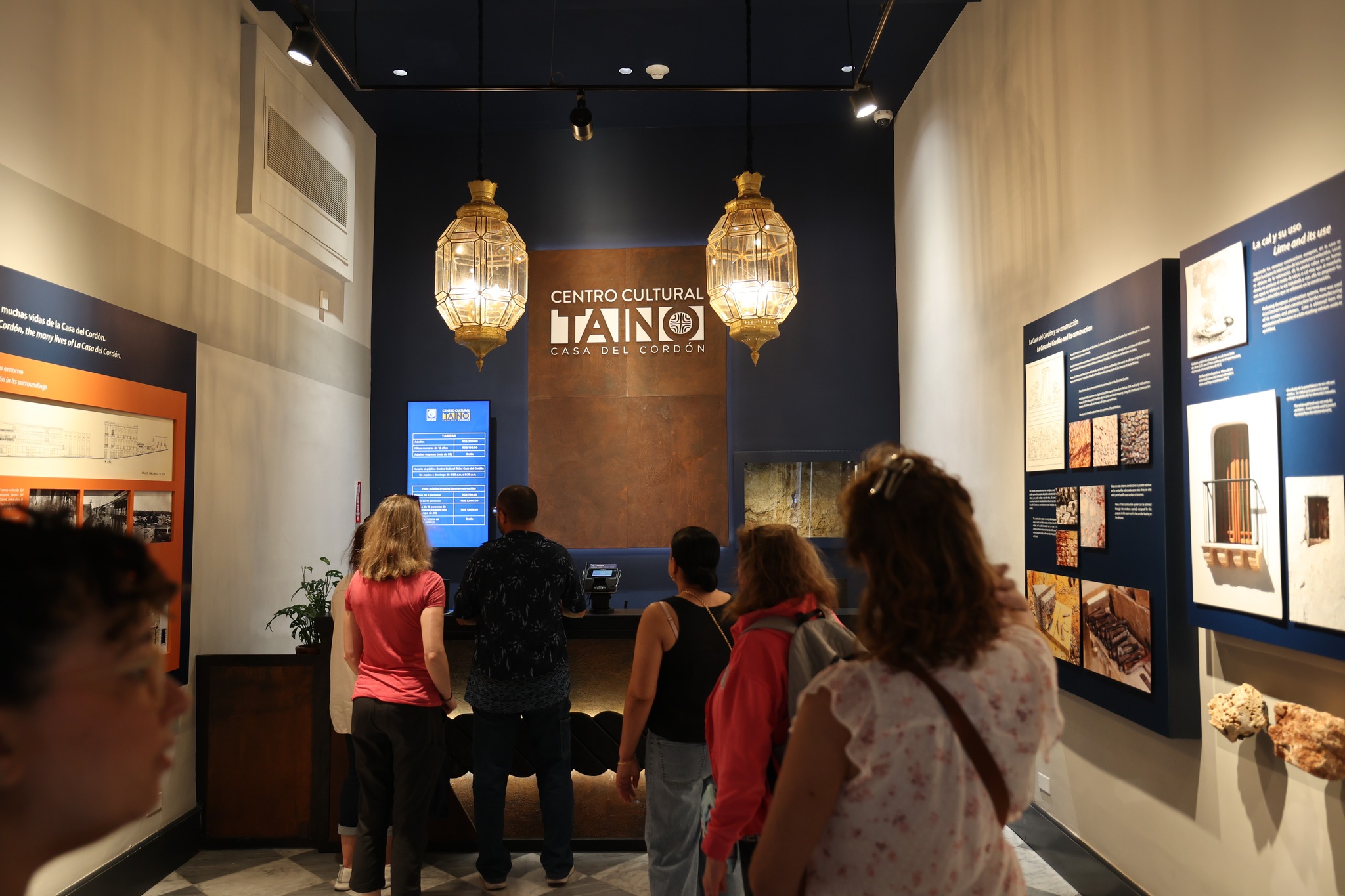
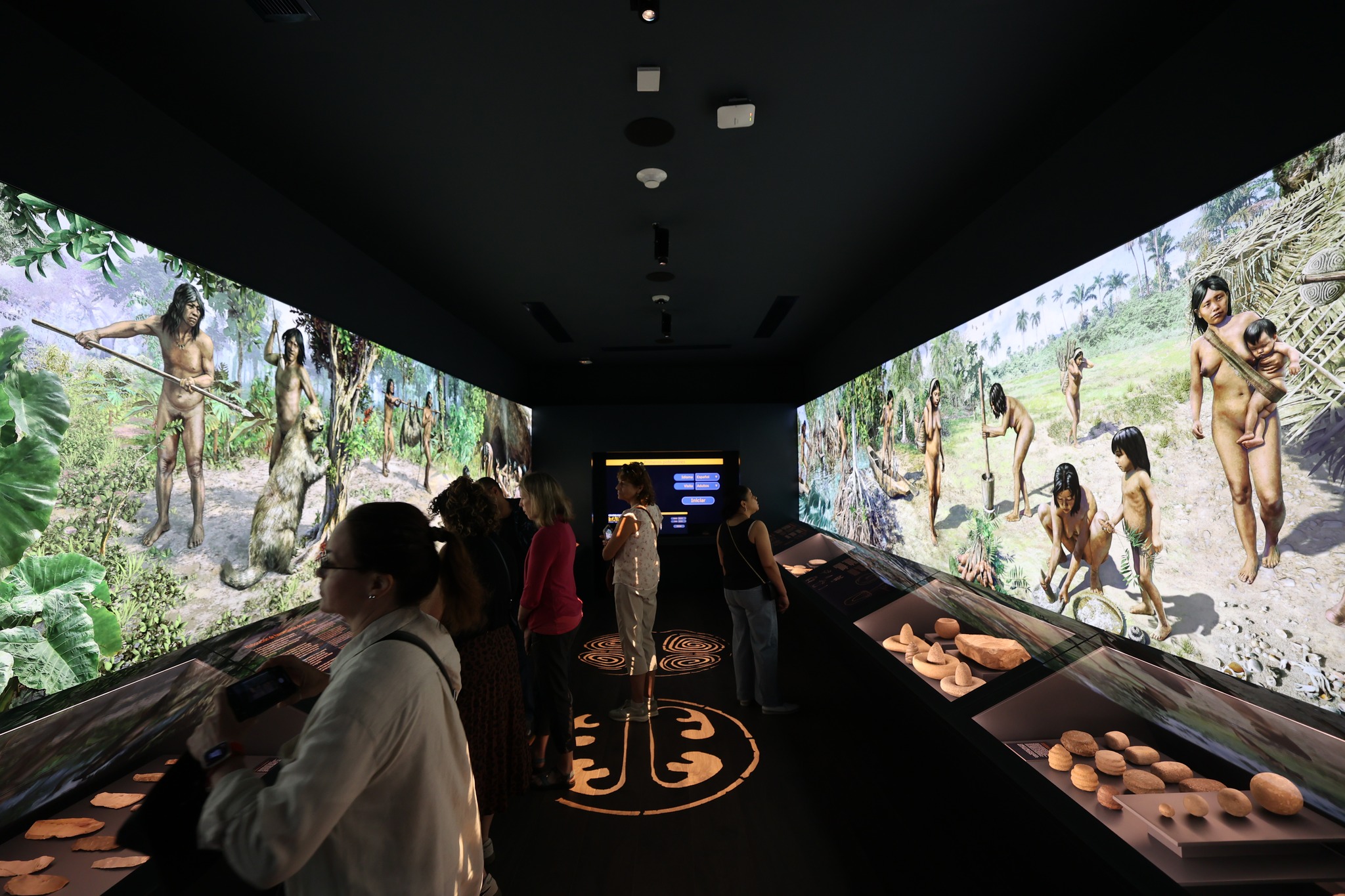
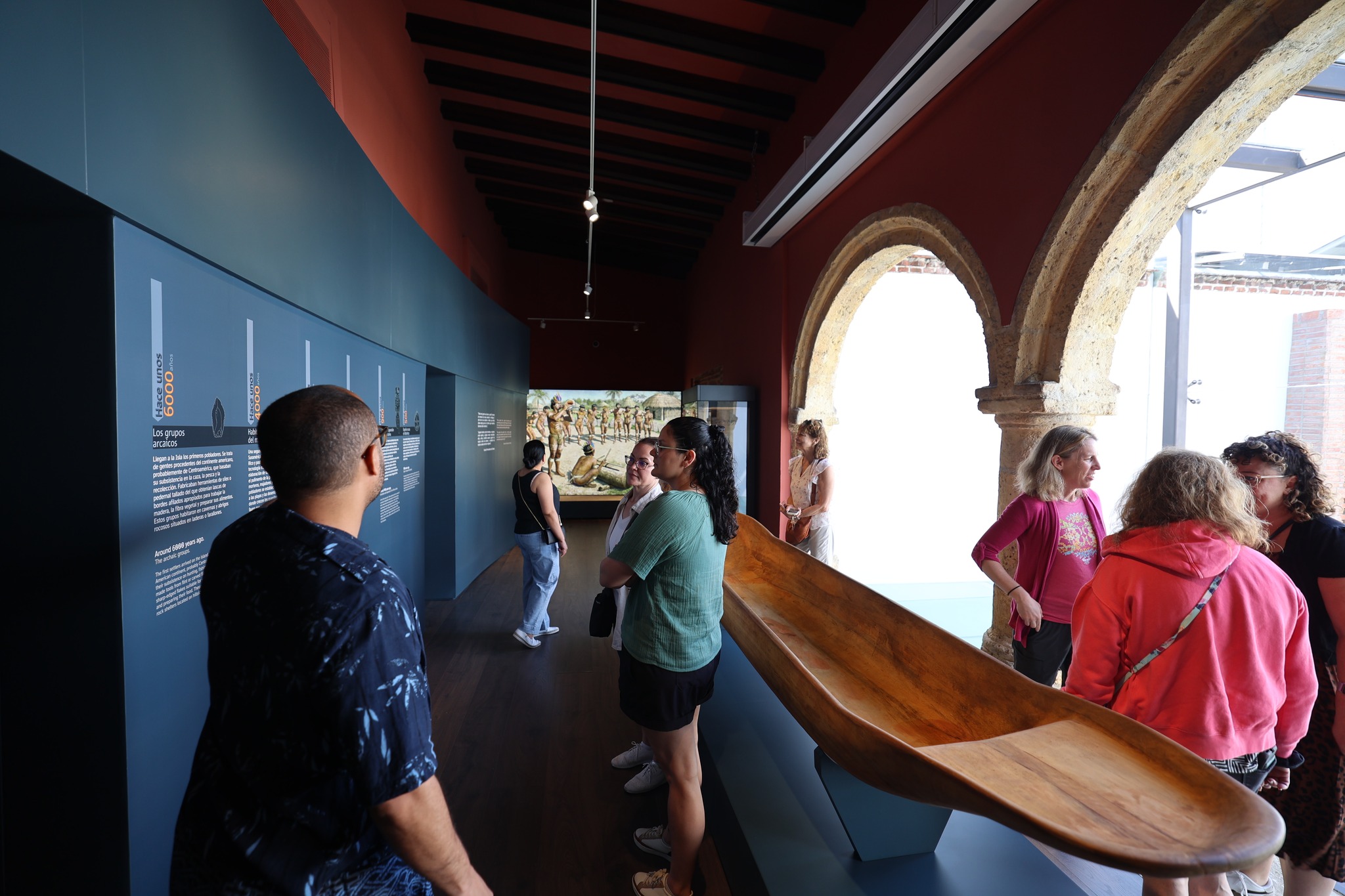
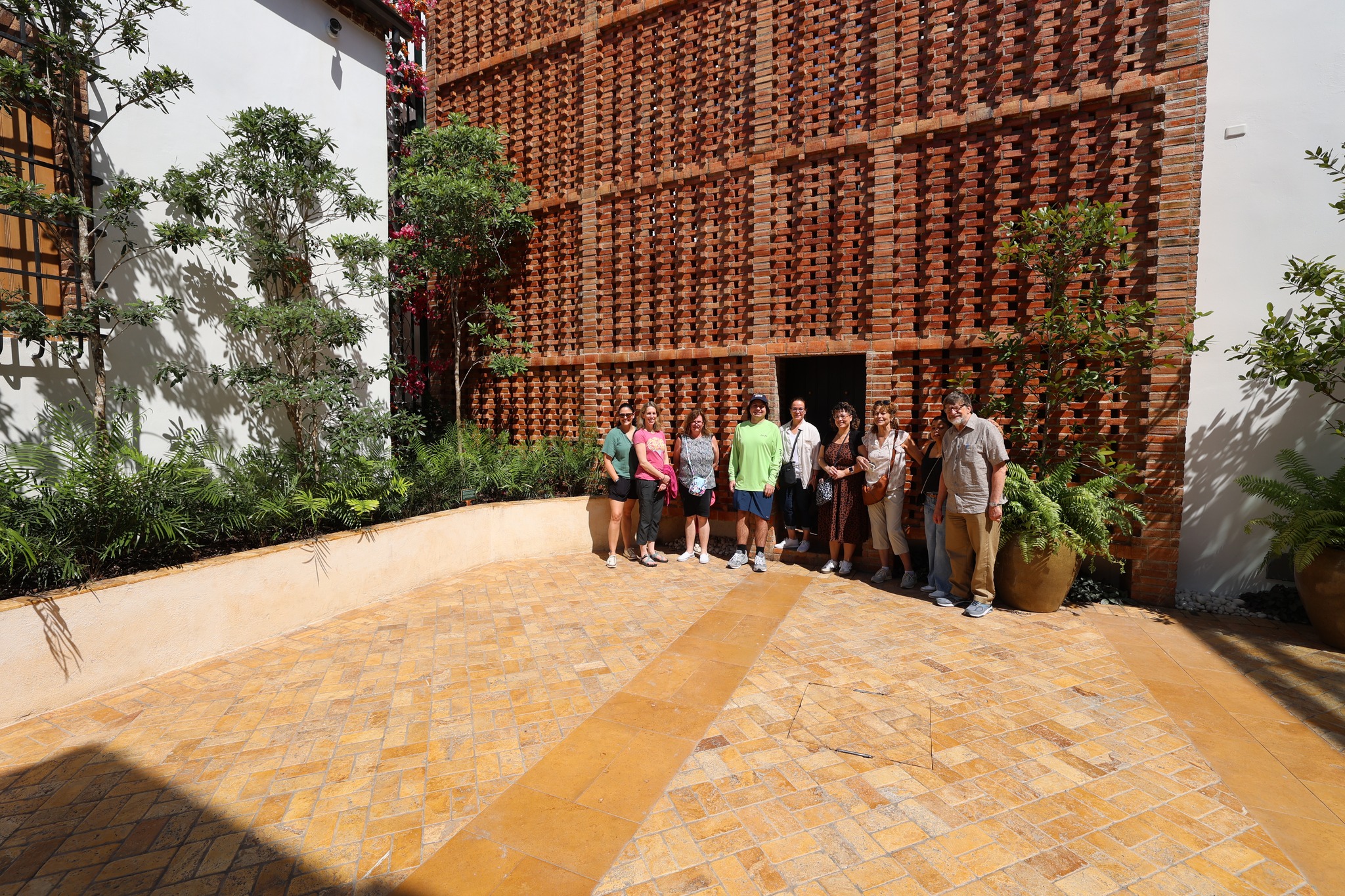
The sixth day of our Dominican Republic visit began with an enriching cultural experience at the Centro Cultural Taíno (Casa del Cordón), where a portion of our group, guided by Rafael, learned about the pre-Columbian history of Hispaniola. The museum, housed in a beautifully restored historic building, showcases the rich heritage of the Taíno people—the indigenous inhabitants who populated the Caribbean islands prior to European contact. Upon entering the museum, we were welcomed by an elegant reception area featuring distinctive Moorish-inspired hanging lanterns. The thoughtful architectural design seamlessly blends historical elements with modern exhibition techniques, creating an immersive educational environment. Our exploration began with exhibits detailing Taíno social organization, spiritual beliefs, and daily life, enhanced by carefully curated artifacts including ceramic vessels, stone tools, and ceremonial objects. The exhibit's centerpiece was a traditional wooden canoe (canoa), displayed alongside informational panels describing its construction methods and significance in Taíno maritime culture. The museum's innovative approach to historical presentation was particularly evident in its immersive multimedia gallery, where wall-to-wall digital projections transported visitors into a reconstructed Taíno village setting. These dynamic visuals depicted indigenous community members engaged in various activities (hunting, gathering, food preparation, and childcare) providing a vivid glimpse into pre-colonial Caribbean life. The floor's integrated symbolic patterns, inspired by Taíno petroglyphs, added an additional layer of cultural context to the experience. As we progressed through the museum, exhibits chronicled the devastating impact of European colonization on the indigenous population, presenting this difficult history with sensitivity while emphasizing the enduring legacy of Taíno culture in contemporary Dominican society, evident in language, agricultural practices, cuisine, and artistic traditions. Before concluding our visit, our group assembled for a photograph against the backdrop of the building's distinctive perforated brick latticework façade, an architectural feature that provides both aesthetic appeal and practical climate control, demonstrating how traditional building techniques remain relevant in modern Caribbean contexts.
NECC-ITLA Agreement Signing & Ministerial Meeting
March 21, 2025 (10:00 AM)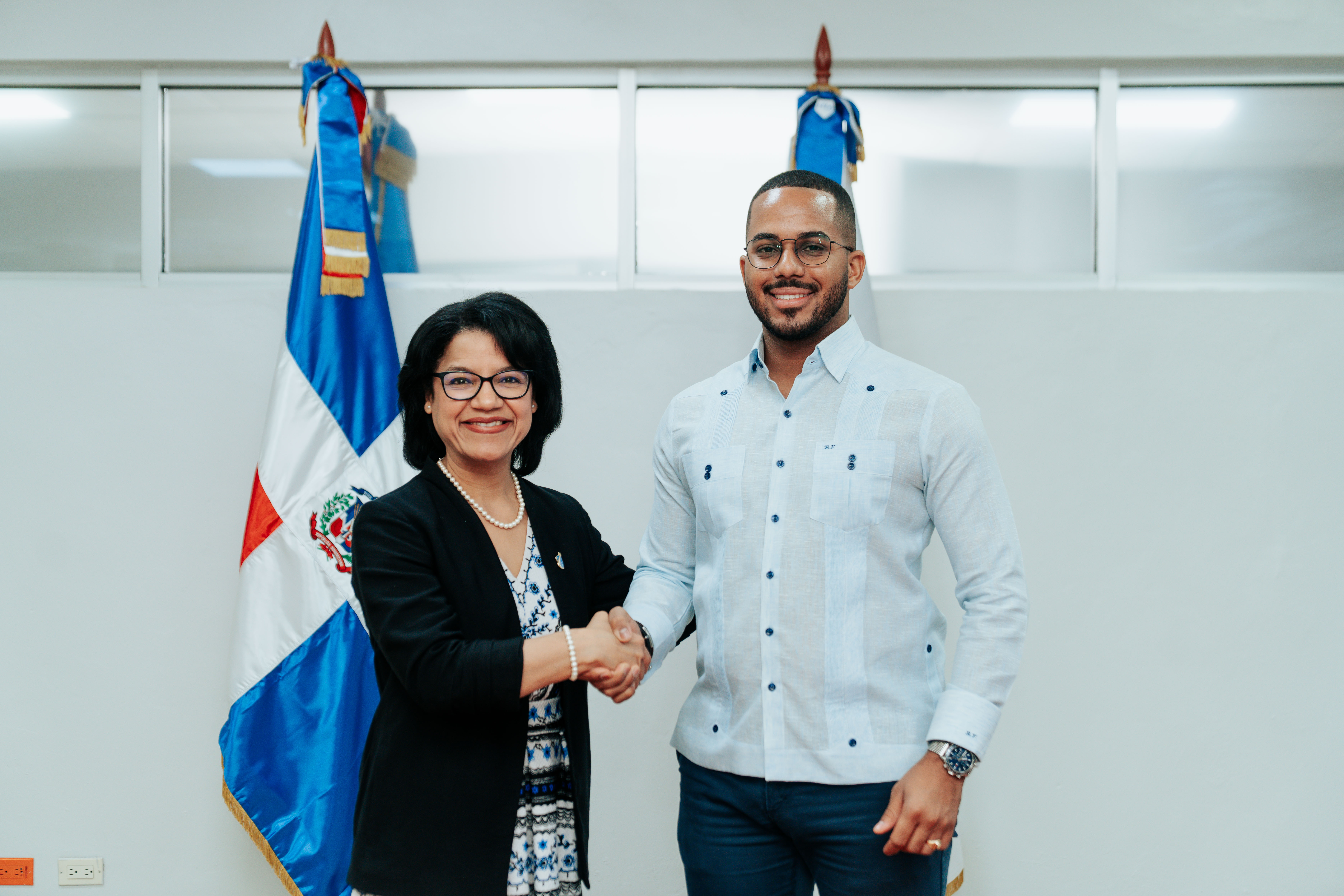
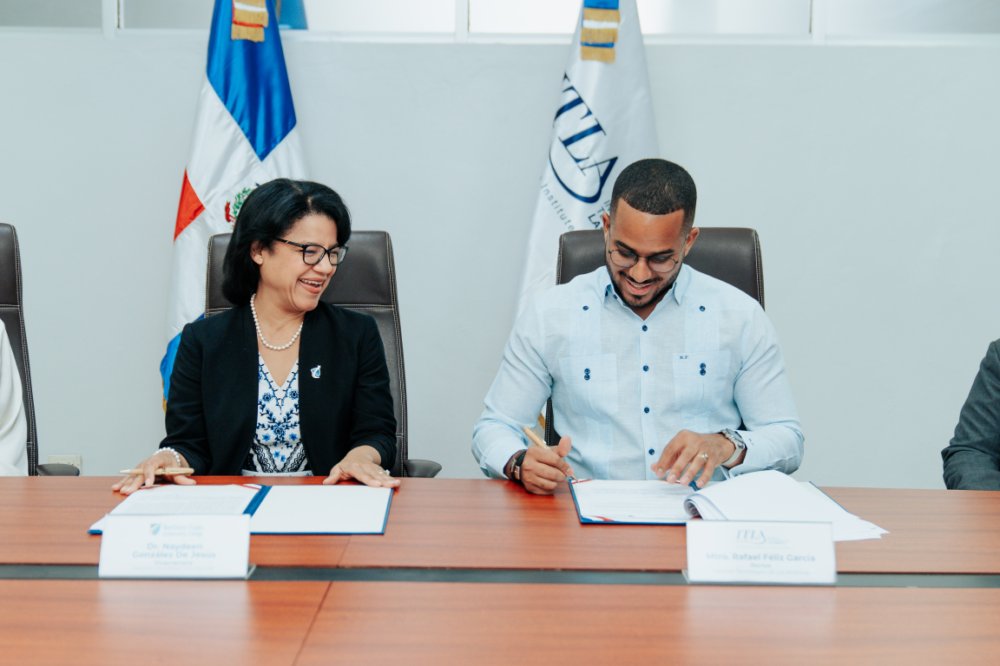
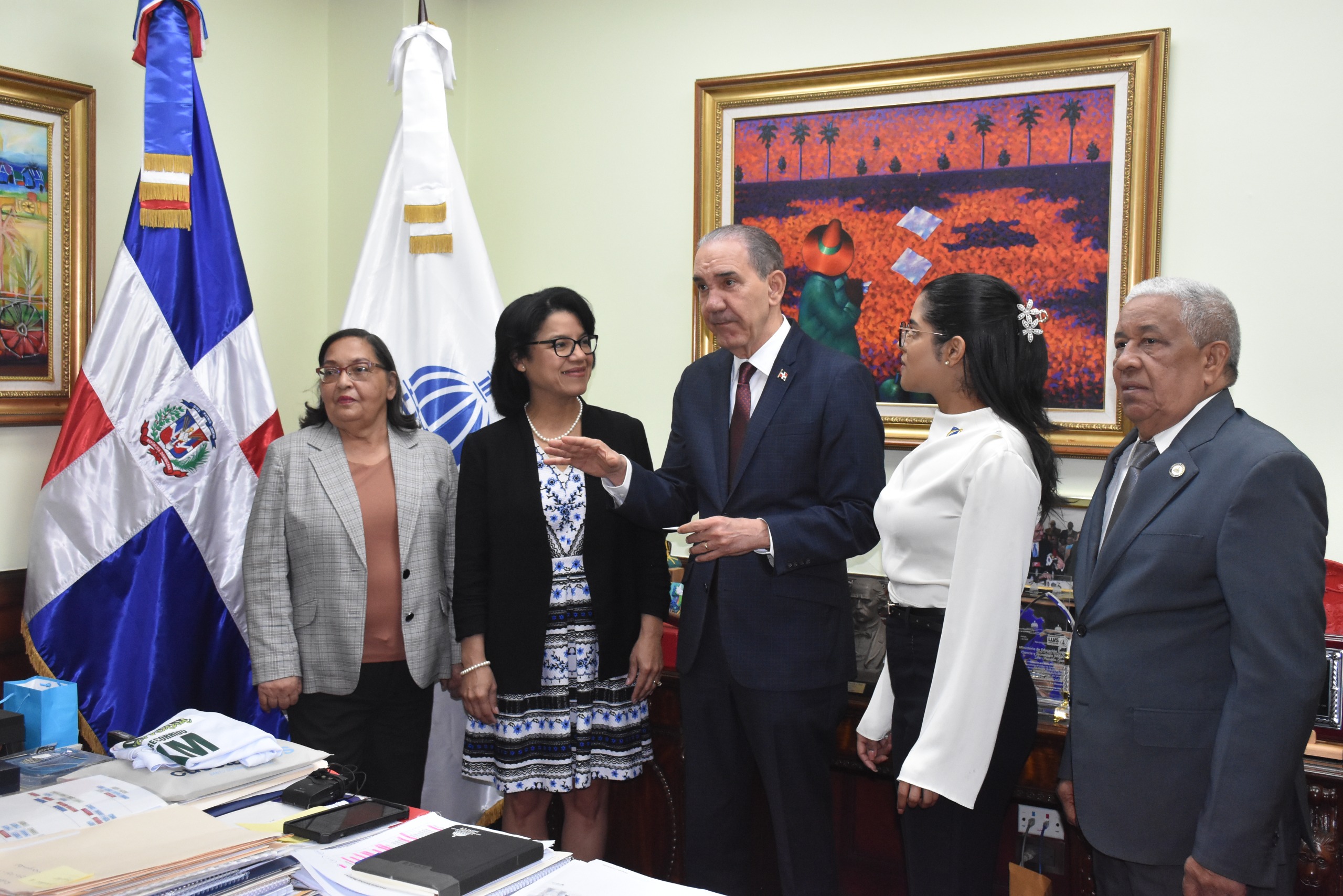
While one contingent of our delegation explored the Centro Cultural Taíno, a parallel and equally significant event was taking place across the city. Naydeen, accompanied by Clara and Giselle, participated in a formal ceremony to establish an official partnership between Northern Essex Community College (NECC) and the Instituto Tecnológico de Las Américas (ITLA). They were also granted the exceptional honor of a meeting with Dr. Franklin García Fermín, the Dominican Republic's Minister of Higher Education, Science and Technology. This formal diplomatic engagement represented a significant milestone in establishing institutional relationships between NECC and the Dominican higher education system, creating a framework for sustainable academic partnerships that transcend individual visits or programs. The agreement signing and ministerial meeting exemplified the importance of building formal international relationships to support educational initiatives, and demonstrated the Dominican government's commitment to fostering international academic partnerships that expand opportunities for their students in an increasingly globalized educational landscape.
Cathedral Museum - Historical and Ecclesiastical Exploration
March 21, 2025 (12:00 PM)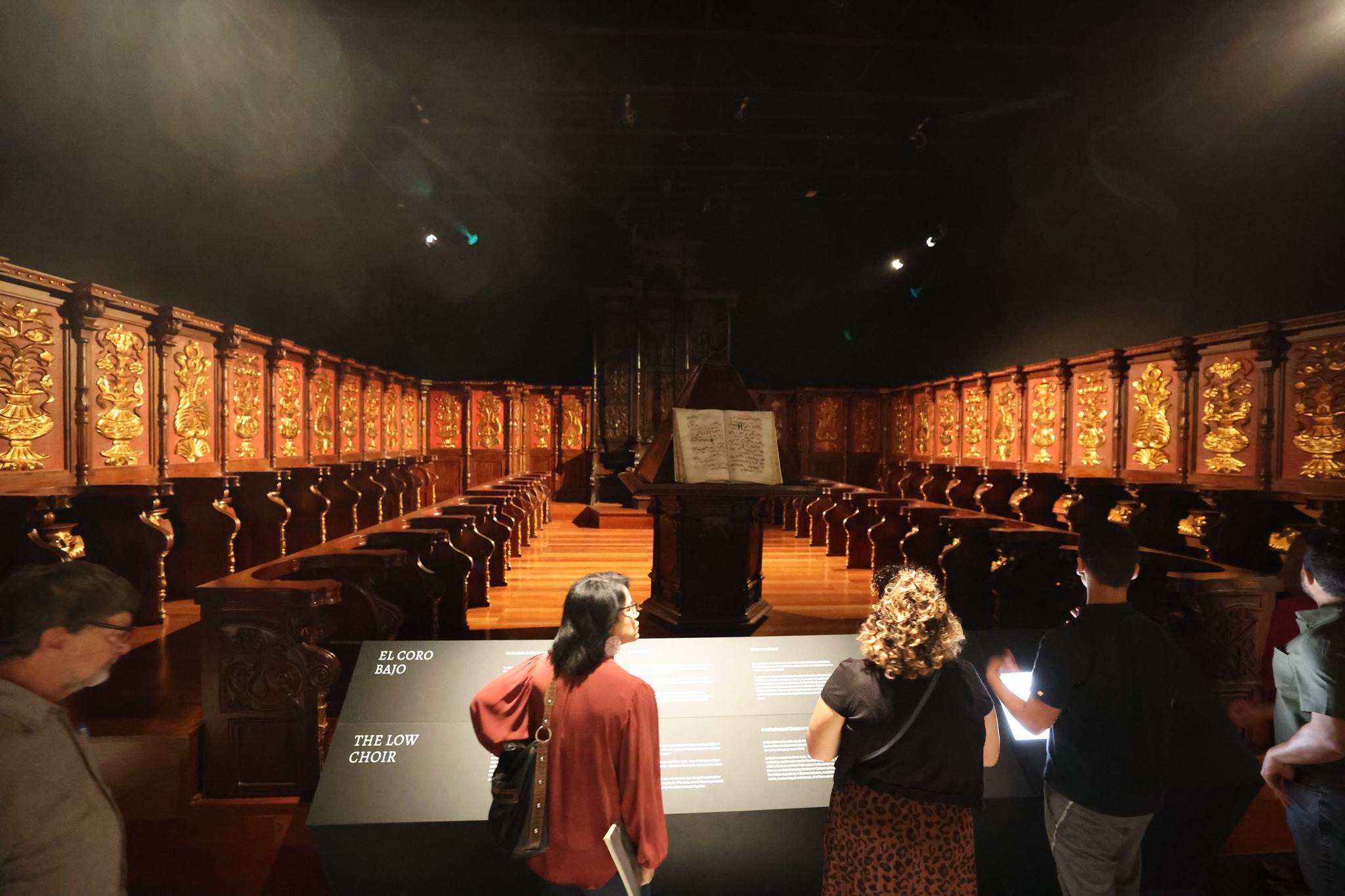
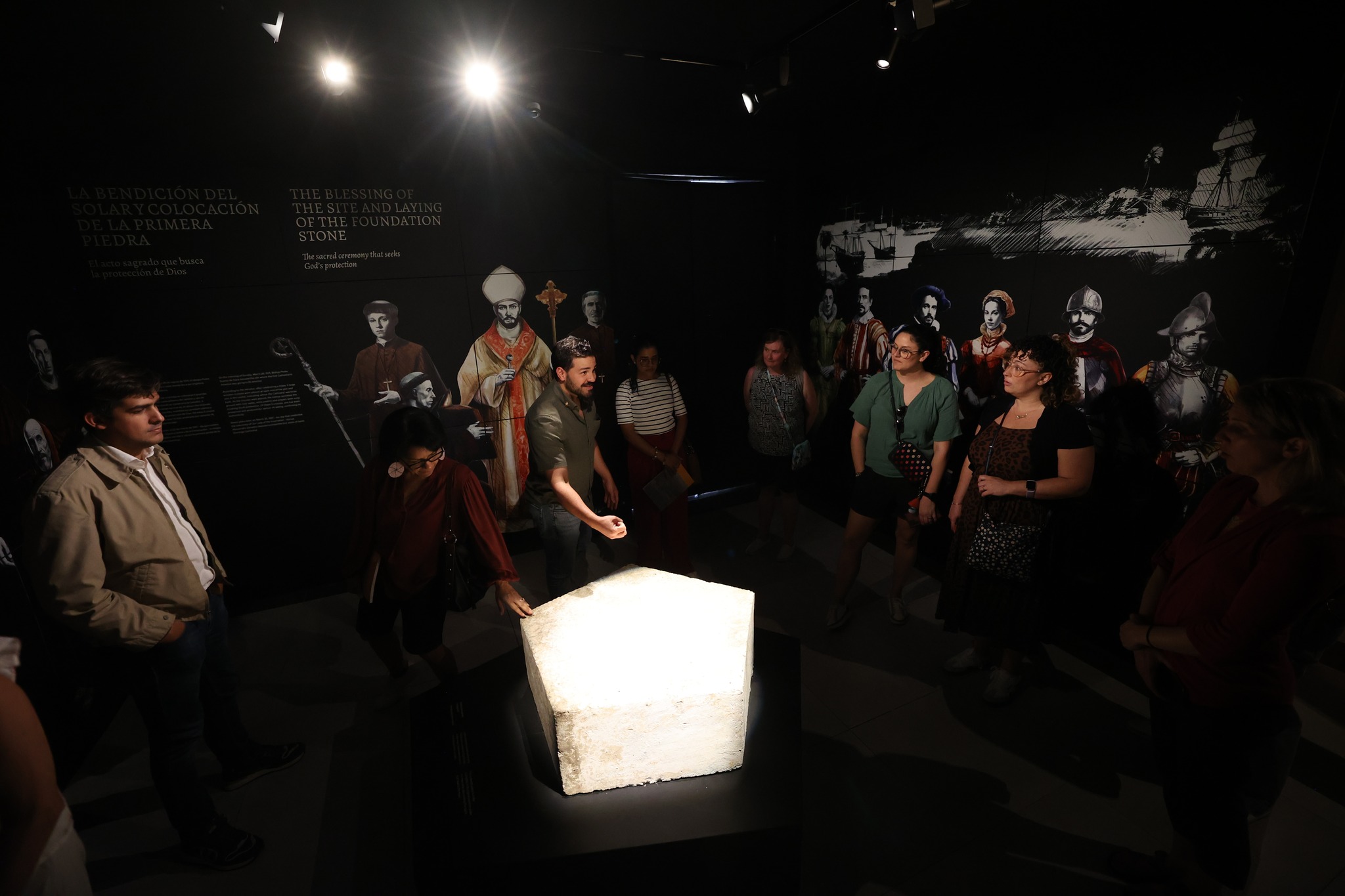
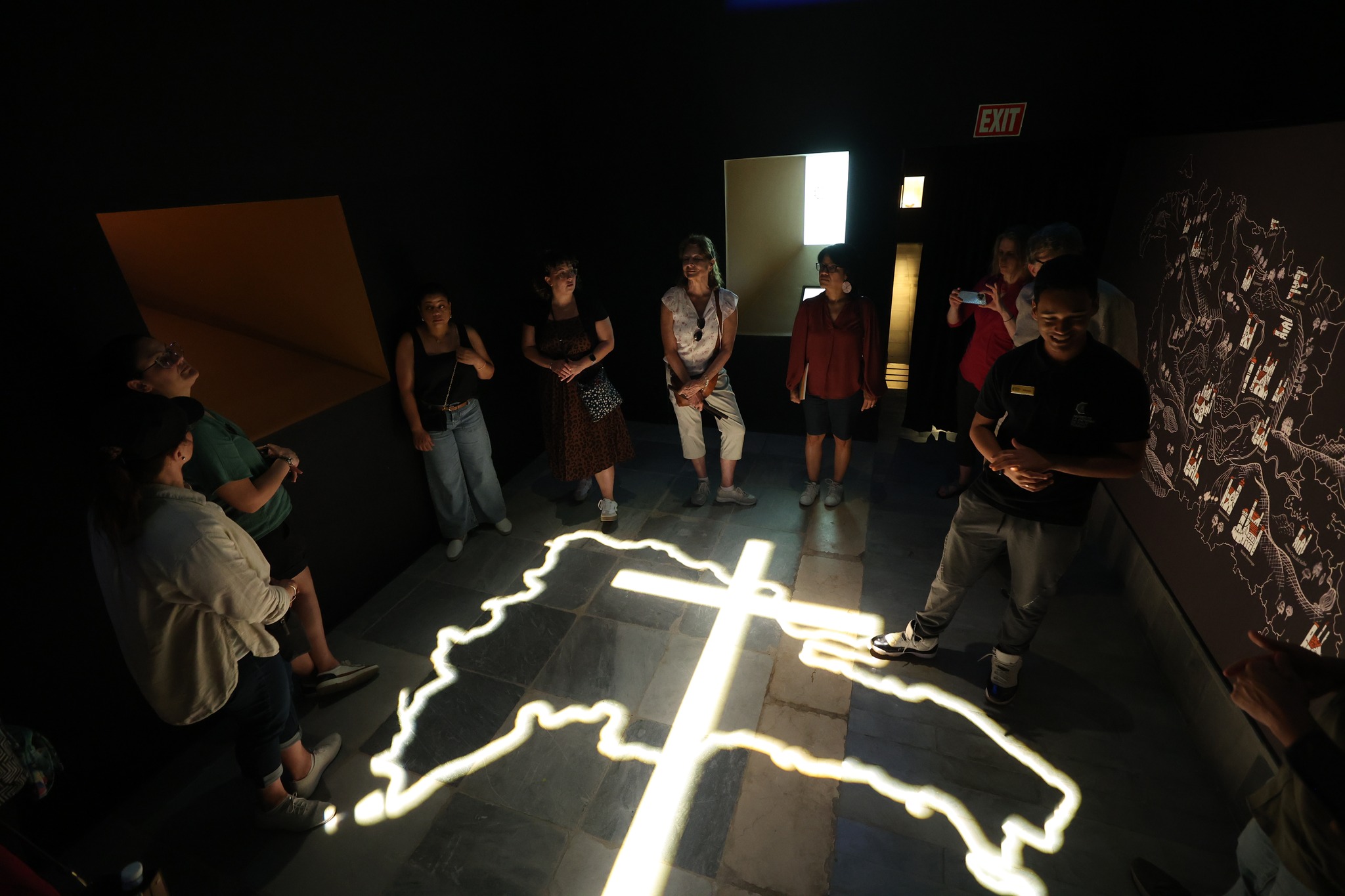
In the afternoon, our previously divided delegation reunited to explore the Cathedral Museum, housed within the historic Catedral Primada de América, formally known as Nuestra Señora de la Encarnación. As the first cathedral built in the Americas, this UNESCO World Heritage site represents an architectural and historical treasure with profound significance for both Dominican and broader colonial history. Our guided tour began in the sumptuously appointed choir chamber, where we observed the exquisitely carved wooden choir stalls adorned with gold-leaf panels that reflected the cathedral's historical importance. The central lectern, displaying an open liturgical manuscript, offered insight into the centuries-old religious practices that have taken place within these walls since the early 16th century. The exhibit labeled "El Coro Bajo" (The Low Choir) provided bilingual explanations of this sacred space's function in cathedral services. Moving deeper into the museum's immersive exhibits, we encountered a dramatically illuminated display featuring the foundation stone of the cathedral. Our knowledgeable guide explained the profound religious and historical significance of "La Bendición del Solar y Colocación de la Primera Piedra" (The Blessing of the Site and Laying of the Foundation Stone), detailing how this ceremonial act in 1514 marked the beginning of European ecclesiastical architecture in the Americas. The surrounding walls featured life-sized illustrations of historical figures involved in the cathedral's establishment, including clergy, conquistadors, and colonial officials, placing the structure within its complex historical context. Perhaps the most engaging element of our visit was a room featuring an innovative light projection that cast the outline of the Dominican Republic on the floor, intersected by a luminous cross—symbolizing the role of the Catholic Church in the nation's formation and identity. This modern interpretive element effectively connected the cathedral's historical significance to contemporary Dominican cultural identity. Throughout the tour, our guide addressed the ongoing historical controversy surrounding the purported remains of Christopher Columbus housed within the cathedral complex. We learned about the debate between Dominican Republic and Seville, Spain, regarding the authentic location of Columbus's remains, with both locations claiming to house the explorer's true burial site. The Dominican claim centers on a lead box discovered in 1877 with the inscription "Illustrious and distinguished male, don Cristóbal Colón," while Spanish authorities assert that the remains in Seville's cathedral were verified through historical documentation. Our guide presented both perspectives, emphasizing the cathedral's role as a repository of not just religious artifacts but contested historical narratives that continue to shape national identity.
Diplomatic Luncheon with Ministry of Foreign Affairs
March 21, 2025 (2:00 PM)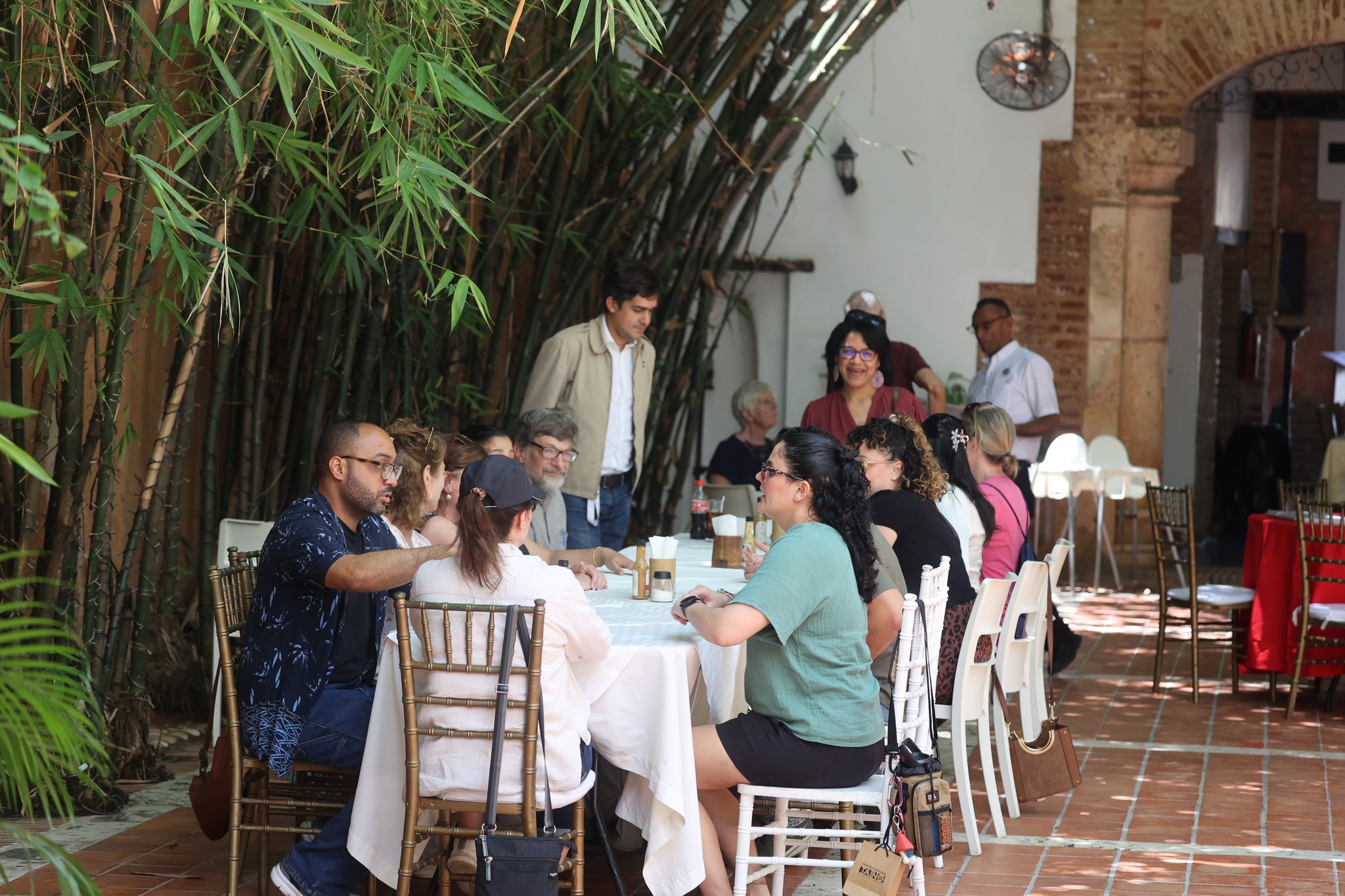
Following our exploration of the Cathedral Museum, our group convened for a diplomatic engagement over lunch with Oscar Polanco, a distinguished representative from the Dominican Republic's Ministry of Foreign Affairs. Mr. Polanco provided our group with valuable insights into the Dominican Republic's complex historical trajectory, from its colonial origins through its struggles for independence and sovereignty to its current position within the global community. His comprehensive overview contextualized many of the historical sites we had visited, connecting them to the nation's evolving identity and international relations. Of particular relevance to our institutional mission was Mr. Polanco's detailed discussion of the substantial Dominican diaspora community in Lawrence. He articulated how these demographic connections create natural pathways for educational partnerships, with NECC positioned to serve as an important educational resource for Dominican students and community members. The conversation explored how higher education linkages between Dominican institutions and NECC could yield mutual benefits: providing Dominican students with international educational opportunities while enhancing NECC's cultural diversity and global perspective. Mr. Polanco emphasized how such academic partnerships align with the Ministry's broader goals of strengthening cultural diplomacy and building economic opportunities through education and workforce development.
Fortaleza Ozama - Colonial Military Architecture Exploration
March 21, 2025 (3:30 PM)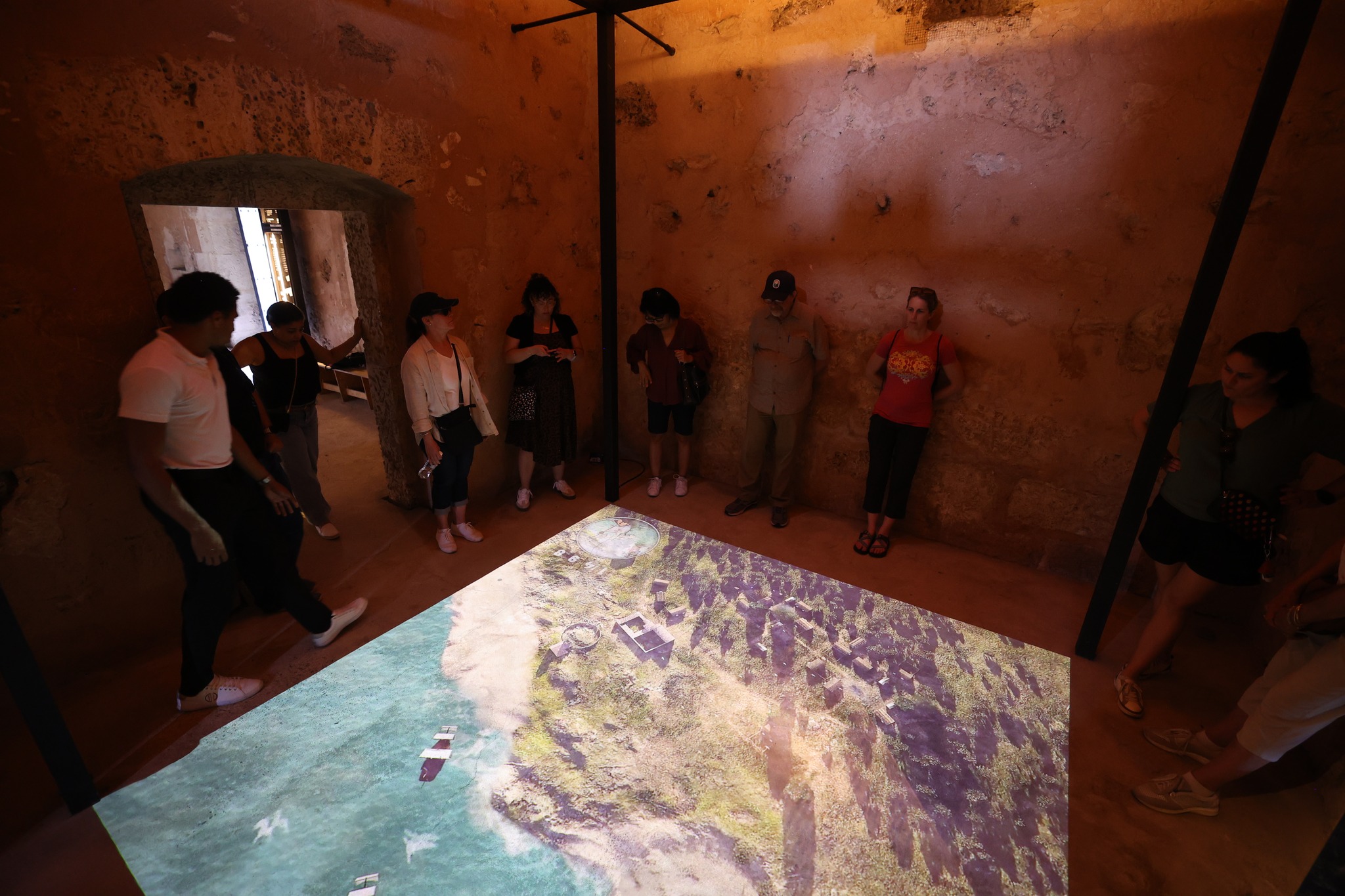
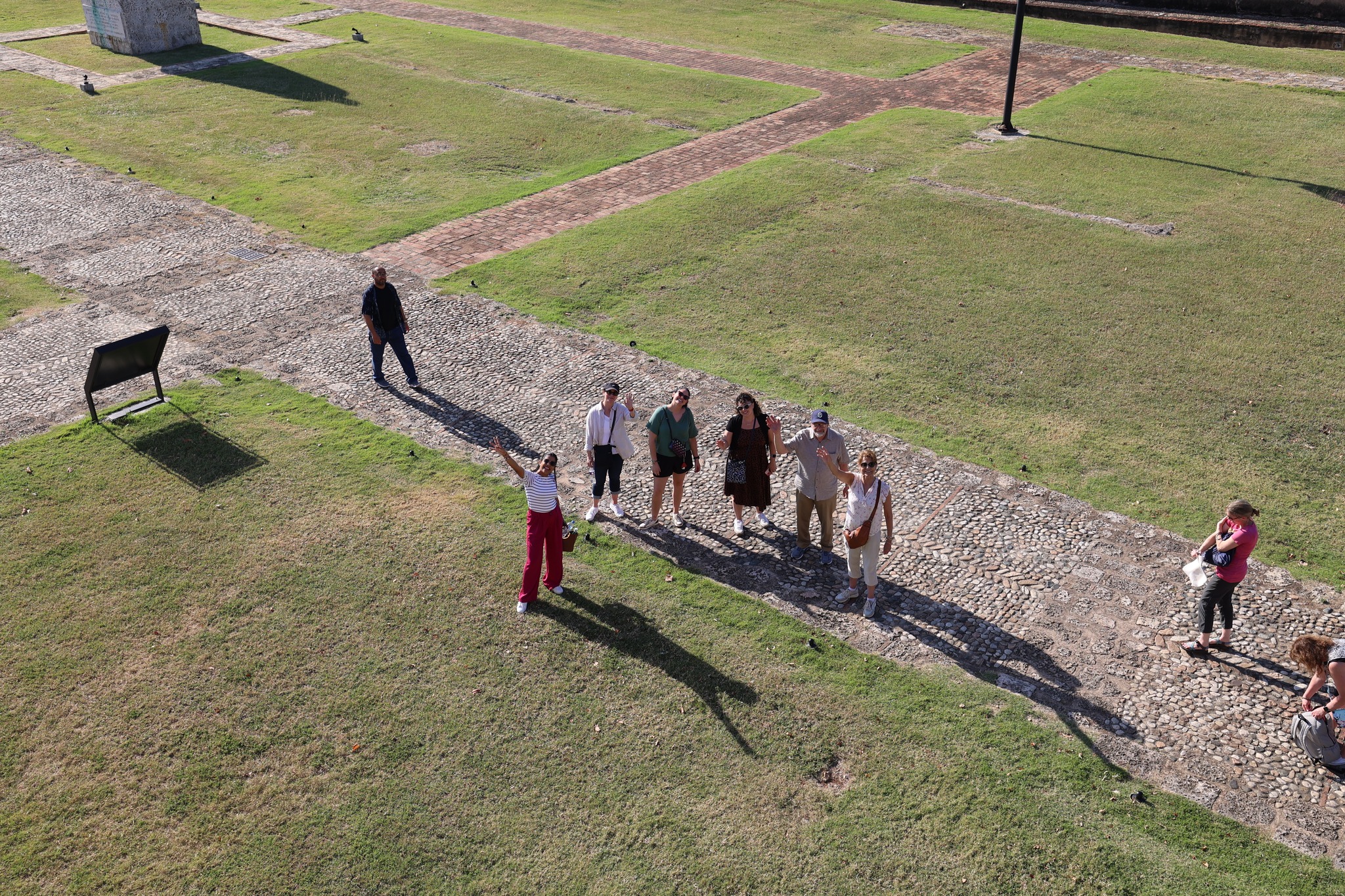
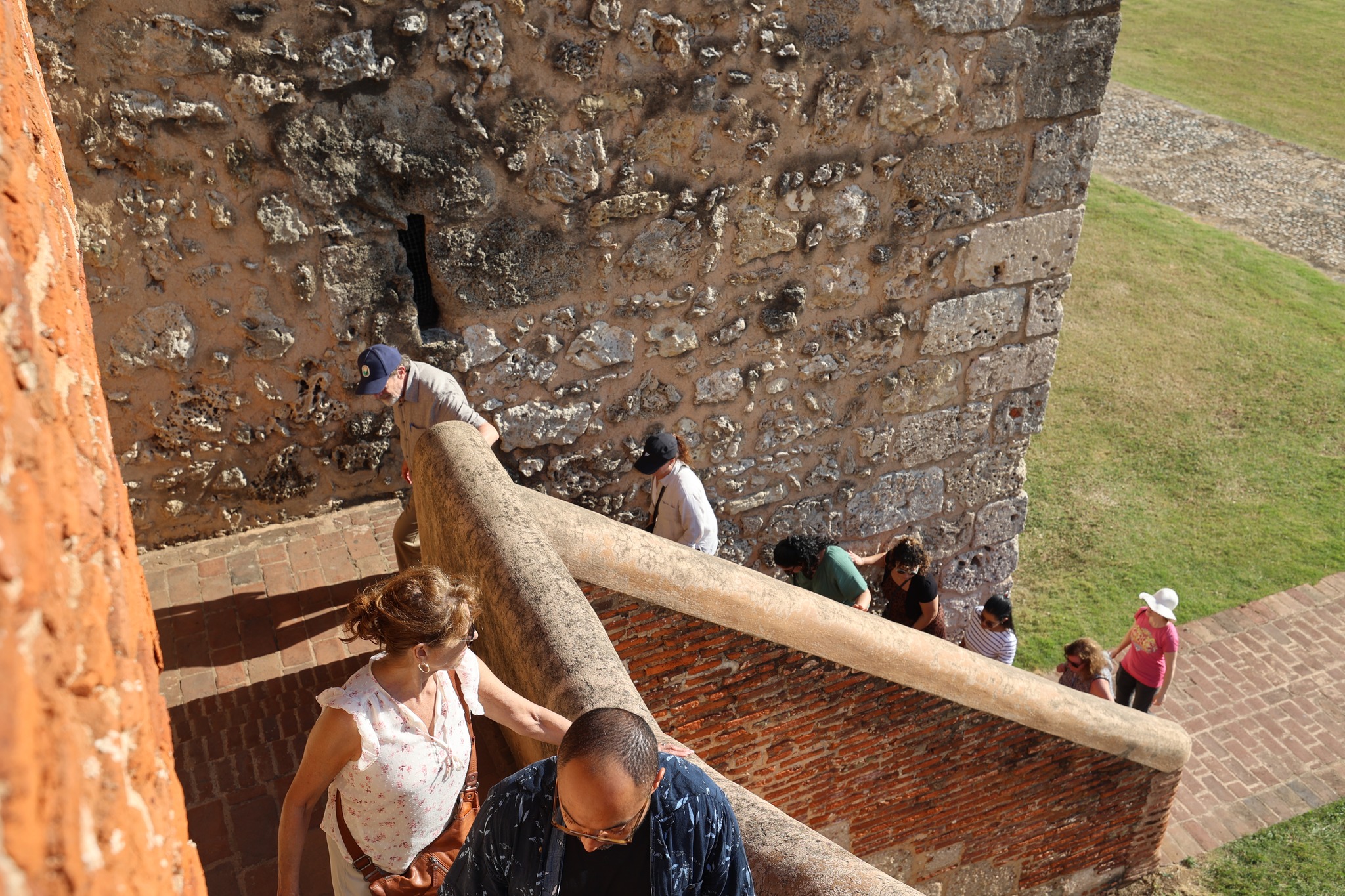
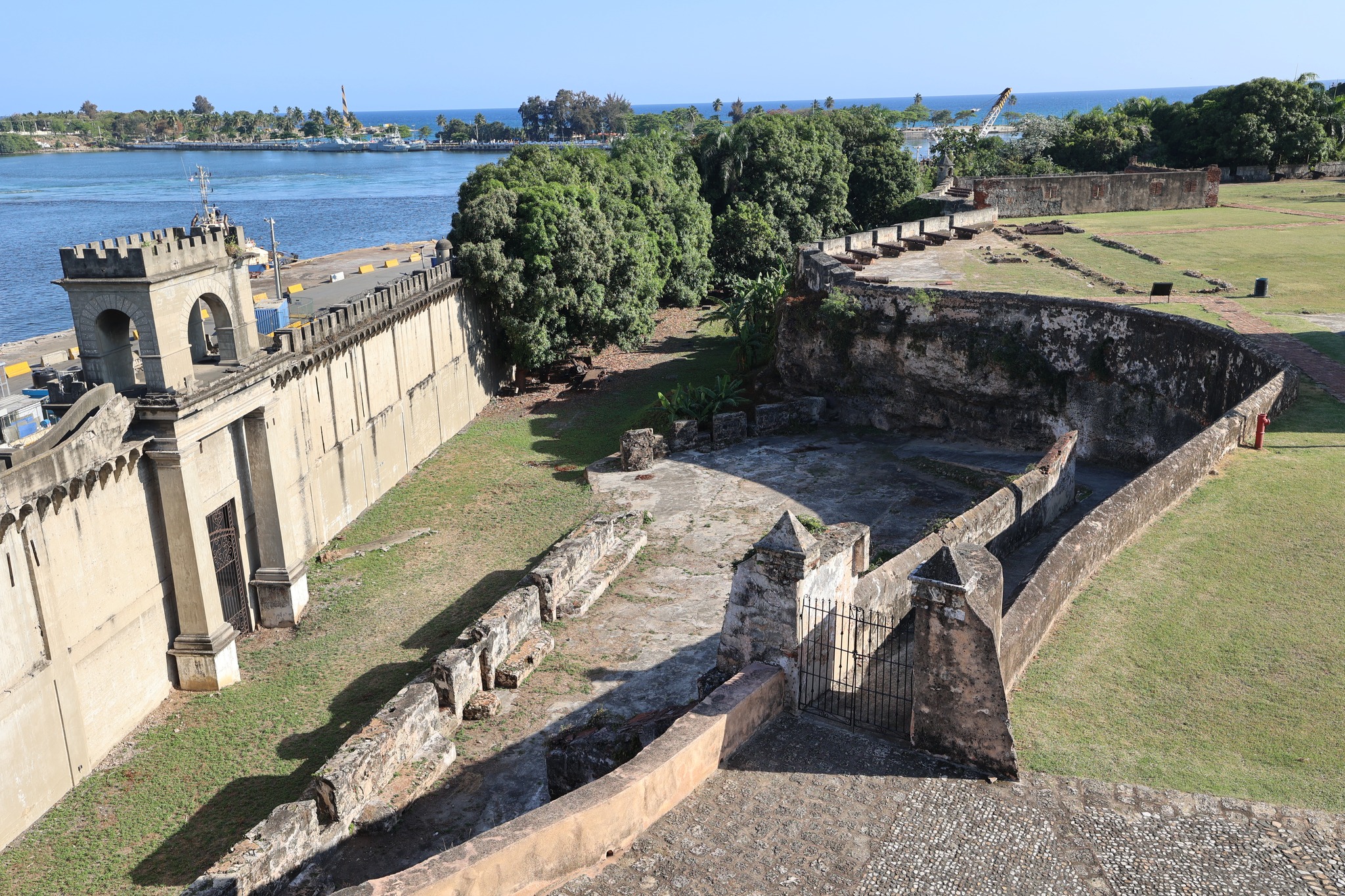
Following our luncheon, our group proceeded to one of Santo Domingo's most significant historical landmarks, Fortaleza Ozama, the oldest European-built military structure in the Americas. Constructed between 1502 and 1508, this imposing fortress takes its name from the Ozama River that flows alongside it, strategically positioned where the river meets the Caribbean Sea. Our exploration began in a dimly lit stone chamber featuring an innovative multimedia presentation, a floor projection displaying an aerial view of early Santo Domingo, illustrating how the colonial settlement developed around this defensive stronghold. This immersive historical context helped us visualize the fortress's central role in the establishment of European presence in the New World. Moving through the complex, we traversed the fortress's expansive grounds via stone pathways that crisscross the carefully preserved archaeological site. Our guide explained how the fortress served multiple functions throughout its long history, from military stronghold to administrative center, prison, and now cultural heritage site. The distinctive architectural elements reflected the military engineering principles of 16th-century Spain, with adaptations to suit the tropical climate and available building materials of Hispaniola. A particularly enlightening segment of our tour involved ascending the stone stairways along the fortress walls, which offered progressively more commanding views of both the complex itself and the surrounding landscape. From these elevated vantage points, we could appreciate the defensive considerations that influenced the fortress's design, with strategic sight lines enabling surveillance of potential naval approaches. The culmination of our visit was accessing the fortress's upper levels, which rewarded us with a spectacular panoramic view encompassing the fortress walls, the formerly defensive moat, the Ozama River, and the Caribbean Sea beyond. This perspective powerfully illustrated the strategic importance of this location for controlling maritime access to the island. The visual connection between the colonial military architecture and its natural surroundings underscored how geography shaped the development of Santo Domingo as Spain's first permanent settlement in the Americas. Throughout our tour, our guide emphasized how Fortaleza Ozama represented the beginning of European urban planning in the Americas, with the grid pattern of Santo Domingo's Colonial Zone radiating outward from this defensive anchor point.
KahKow Chocolate Experience - From Bean to Bar
March 21, 2025 (5:00 PM)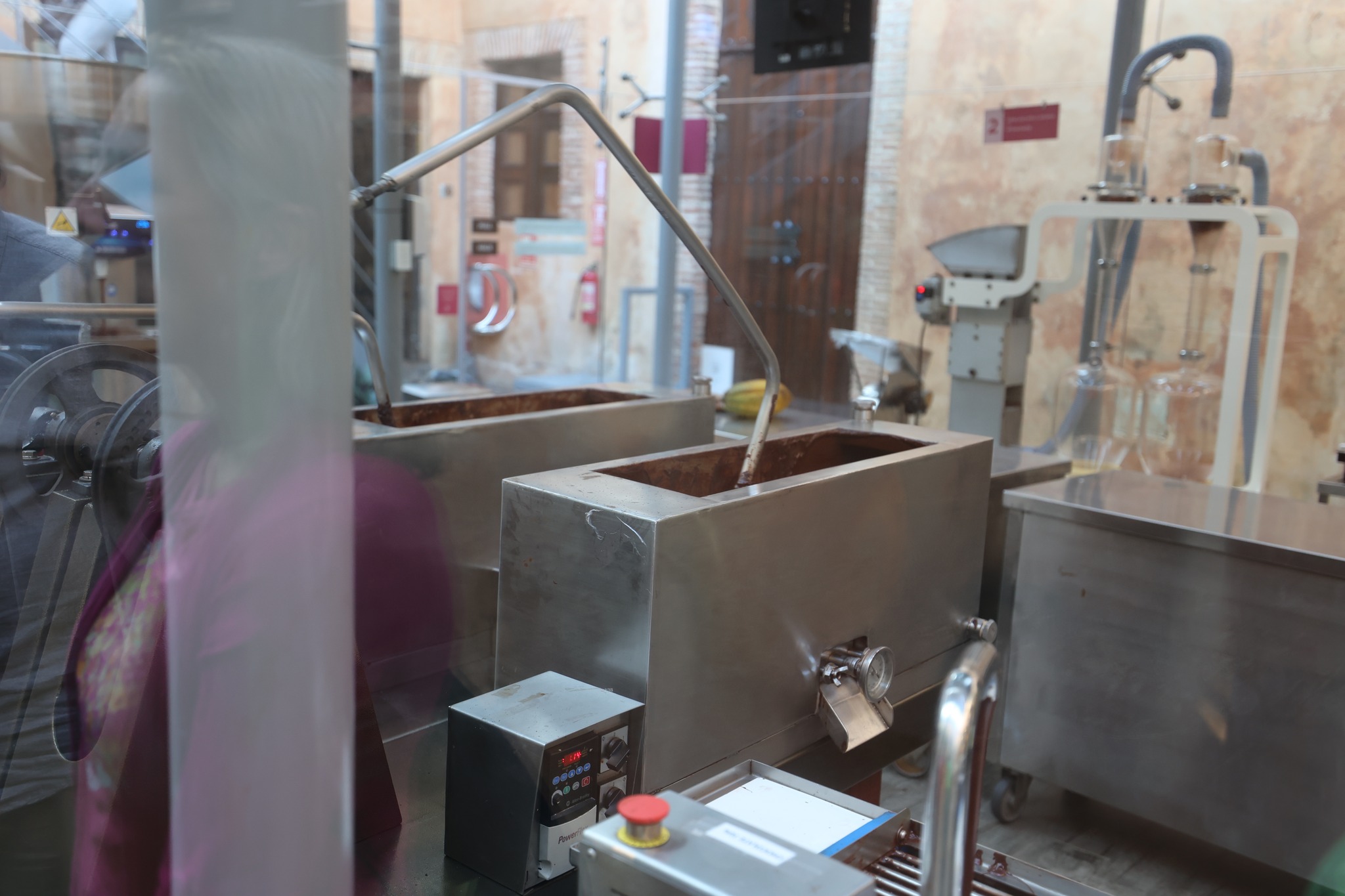
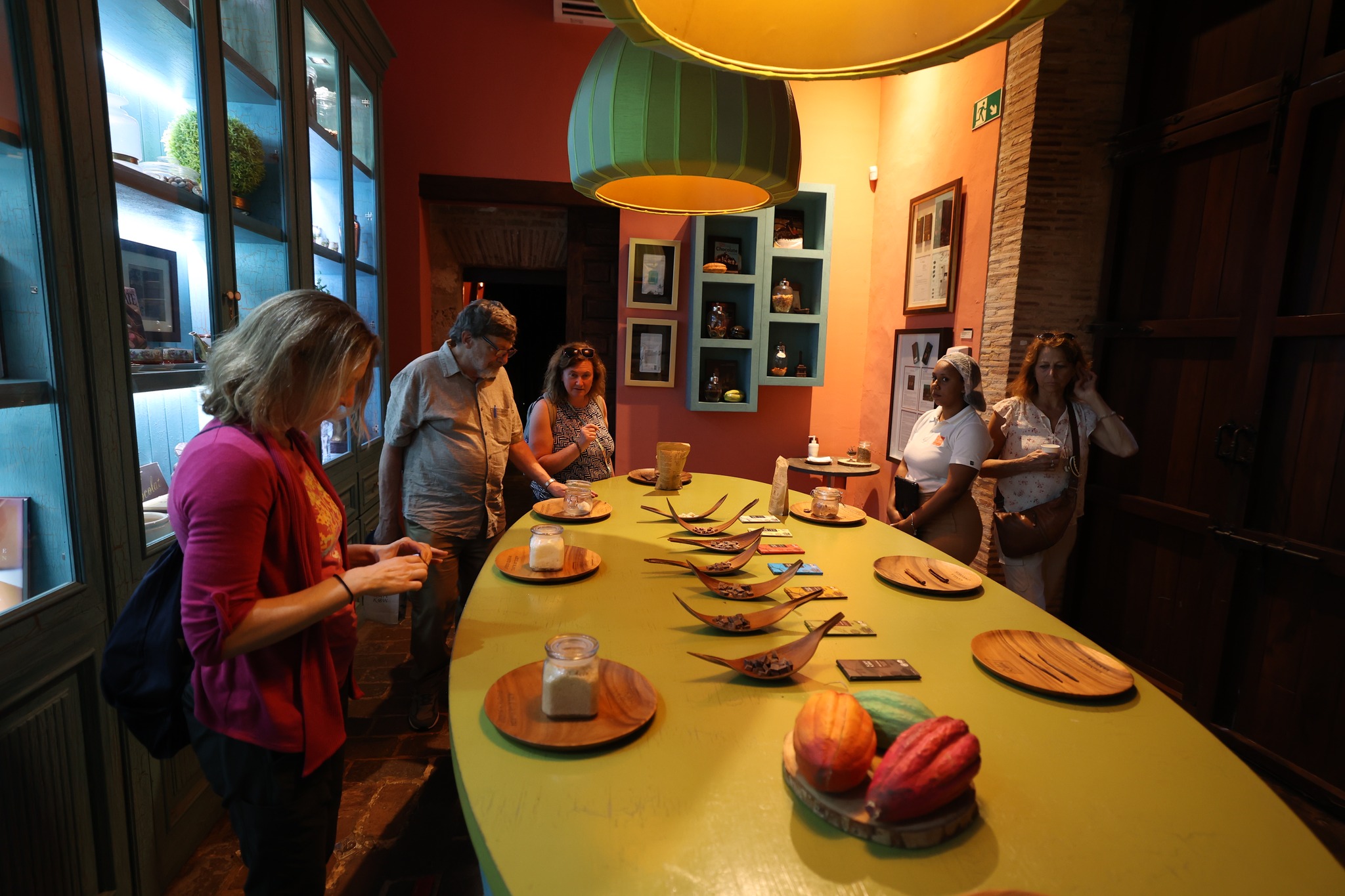
As the afternoon transitioned to early evening, a subset of our group seized the opportunity to explore another significant aspect of the Dominican Republic's agricultural heritage and economic production—chocolate making—through a specialized tour at KahKow, a boutique chocolate manufacturer located near Fortaleza Ozama in the Colonial Zone. This experience offered an engaging counterpoint to our historical explorations by focusing on contemporary Dominican agricultural production and artisanal food manufacturing. The tour began with an introduction to the industrial aspects of chocolate production, where we observed sophisticated processing equipment through viewing windows. The stainless steel machinery, including conching machines that develop chocolate's smooth texture and complex flavor profile, demonstrated the precision engineering required to transform raw agricultural products into refined confections. Our guide explained how these modern techniques preserve traditional quality while meeting contemporary production standards and regulatory requirements. The heart of the experience was an interactive tasting session conducted around a distinctive oval table with a vibrant yellow surface that contrasted with the facility's terracotta-colored walls. The table was thoughtfully arranged with wooden plates and sampling spoons, with fresh cacao pods displayed as visual reference points. This sensory education session led us through chocolate's transformation journey, allowing us to taste cacao at various processing stages—from raw beans to nibs, then to unsweetened chocolate mass, and finally to finished chocolate products with varying cocoa percentages. This systematic tasting progression illuminated how each production step influences flavor development, with our guide highlighting the distinctive terroir characteristics of Dominican cacao that contribute to its international reputation for quality. This educational experience concluded with an opportunity to purchase ethically produced chocolate products, allowing delegation members to select gifts that would serve as tangible representations of Dominican agricultural excellence when shared with colleagues and family members back home. The KahKow tour provided valuable insights into the integration of agricultural heritage, economic development, and culinary arts that characterizes the Dominican Republic's approach to sustainable development of its natural resources.
Tribu Restaurante - Celebratory Farewell Dinner
March 21, 2025 (8:30 PM)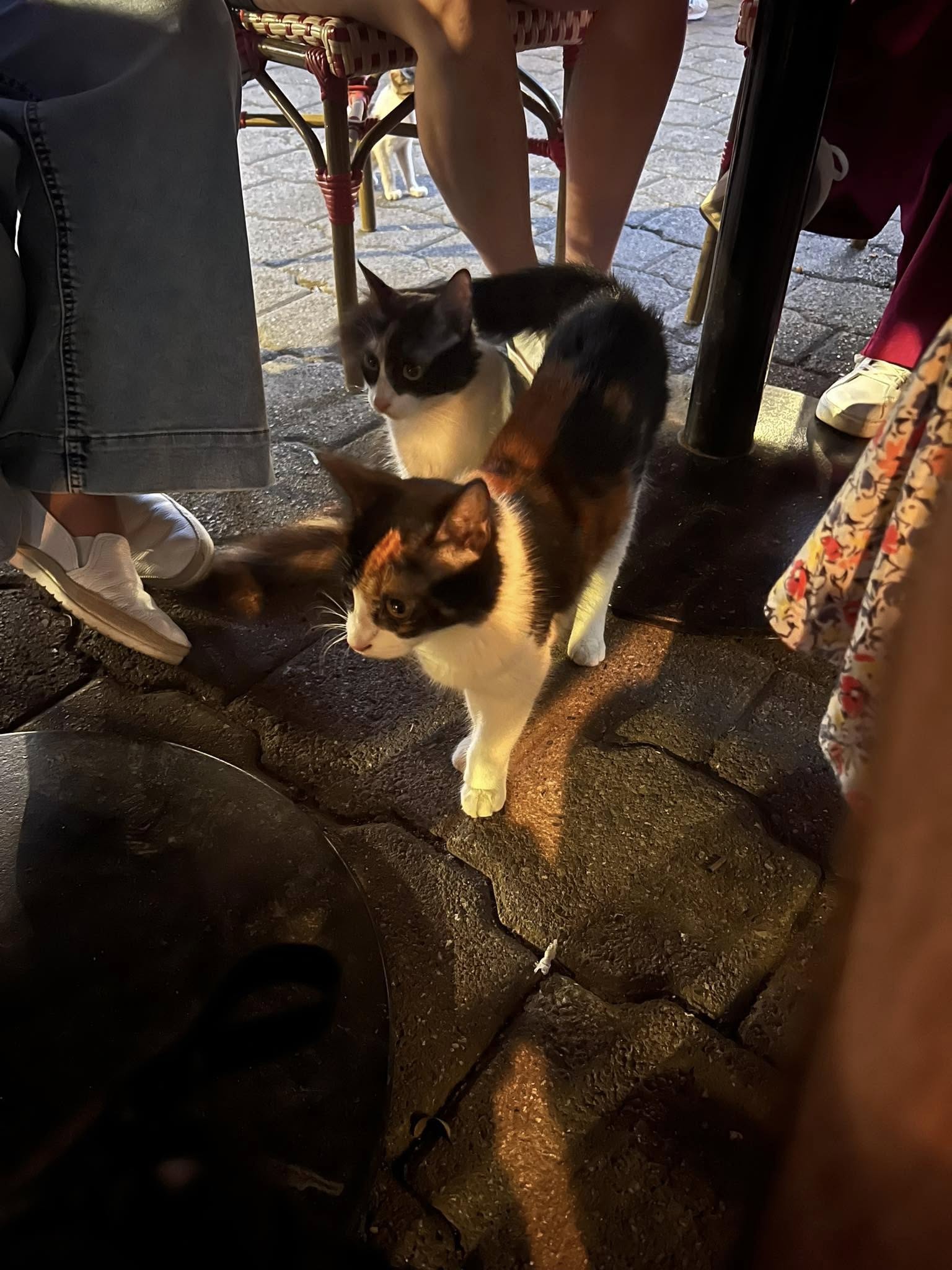
Our eventful day culminated in a festive farewell dinner at Tribu Restaurante, ideally situated adjacent to Parque Colón in the heart of the Colonial Zone. The restaurant's outdoor seating arrangement afforded our group the perfect setting to reflect on our experiences while immersed in the vibrant evening atmosphere of Santo Domingo's historic district. The cobblestone plaza, illuminated by vintage-style street lamps, provided a picturesque backdrop as local musicians performed nearby and pedestrians strolled through this central gathering space. The ambiance perfectly encapsulated the blend of historical significance and contemporary cultural vitality that we had encountered throughout our visit. Our dining experience embraced the warm evening air as we enjoyed a selection of Dominican cuisine and colorful tropical beverages arranged across tables adorned with vibrantly patterned placemats reflecting local artistic traditions. The meal took on an especially celebratory tone when the restaurant staff surprised our colleague Amanda with a sparkling birthday firecracker—a thoughtful acknowledgment of her upcoming birthday that would occur after our return to Massachusetts. This festive gesture prompted spontaneous singing and dancing among our delegation members, creating a joyful atmosphere that reflected the warm relationships developed throughout our journey. Adding an unexpected touch of charm to our dining experience, several local cats from the plaza's resident feline population made their presence known, wandering confidently between chair legs.
Tuesday, March 22, 2025
Departure Day
Buche Perico - Reflective Debrief Breakfast
March 22, 2025 (8:00 AM)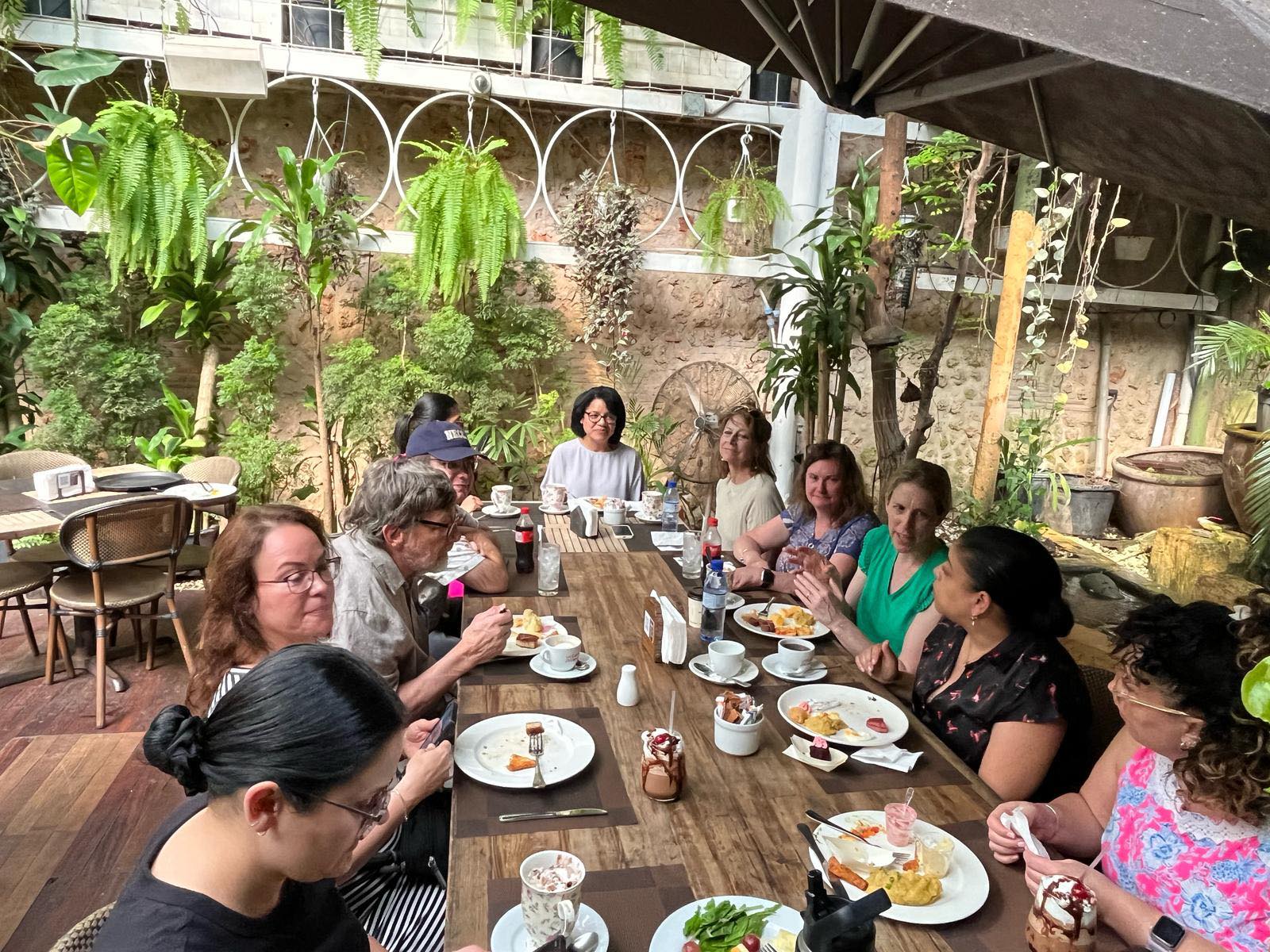
Our final day in Santo Domingo began with a purposeful gathering at Buche Perico, a charming café nestled within the Colonial Zone that provided the perfect setting for our delegation's reflective debrief session. We gathered to consolidate our experiences and articulate the key insights gained throughout our journey. The restaurant's verdant courtyard offered an ideal environment for thoughtful discussion—its stone walls draped with lush hanging ferns and tropical plants creating a natural sanctuary that felt removed from the urban bustle despite its central location. The rustic wooden communal table accommodated our entire group, facilitating both individual contributions and collective dialogue as we enjoyed a final Dominican breakfast together. The meal itself was a buffet of traditional Dominican breakfast offerings—mangú (mashed plantains), eggs prepared to preference, local cheeses, and freshly baked pastries—complemented by the country's renowned coffee, renowned for its rich flavor profile. Small desserts and fresh fruit provided sweet accents to our farewell meal, nurturing both body and mind as we engaged in meaningful reflection. The structured yet conversational format of our debrief encouraged each delegation member to share their most impactful experiences from the visit. Common themes emerged around the profound value of direct cultural immersion in building authentic international partnerships, the inspiration drawn from observing Dominican educational approaches, and the unexpected insights gained from informal interactions outside of scheduled academic engagements. Participants articulated specific lessons they intended to implement upon returning to NECC, ranging from curricular adaptations influenced by UCE's programs to student engagement strategies and potential collaborative research initiatives. The conversation naturally evolved to address practical next steps for maintaining momentum in our newly established partnerships, including communication protocols, timeline development for specific projects, and identification of institutional resources needed to support ongoing collaboration.
Parque Nacional Los Tres Ojos
March 22, 2025 (12:00 PM)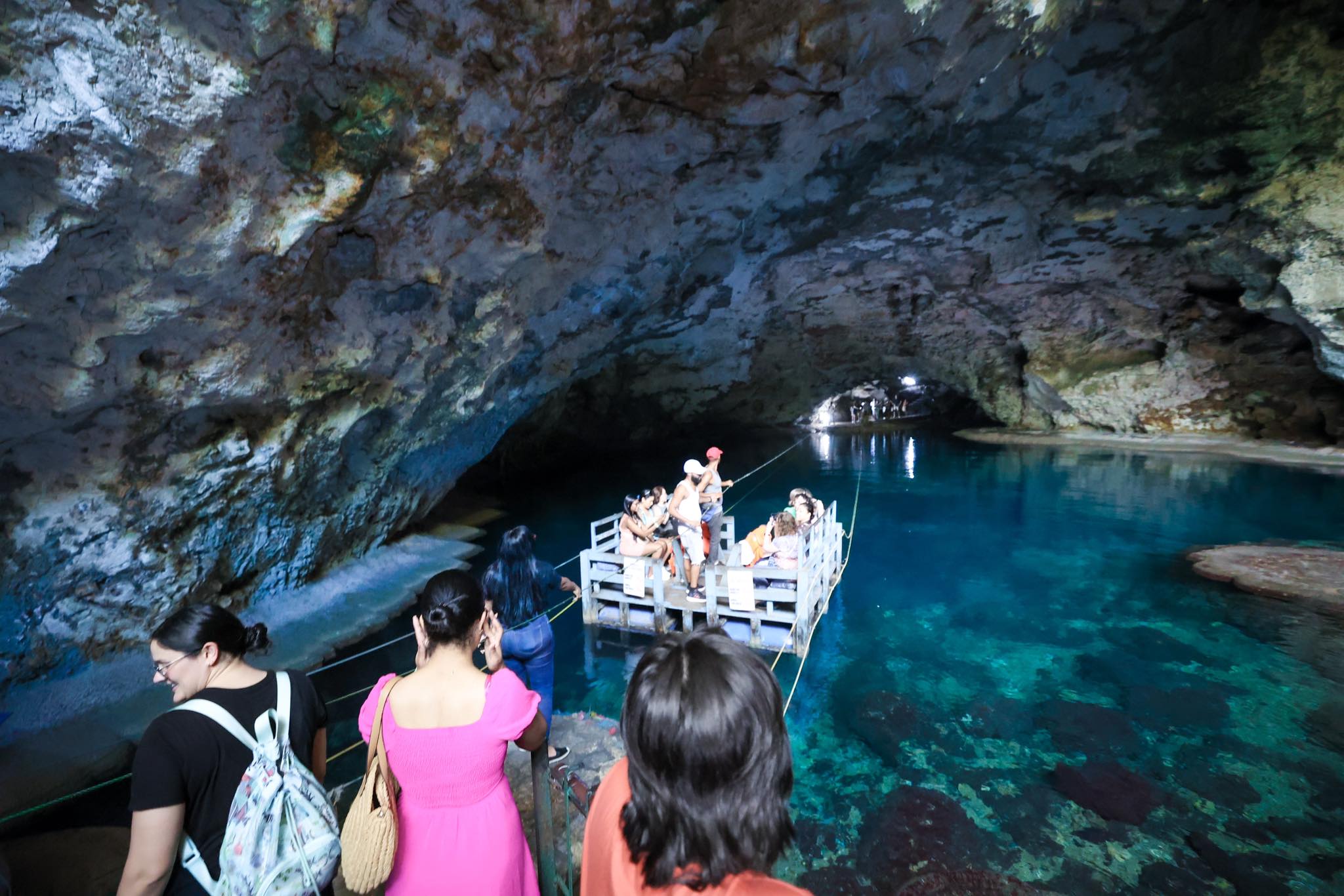
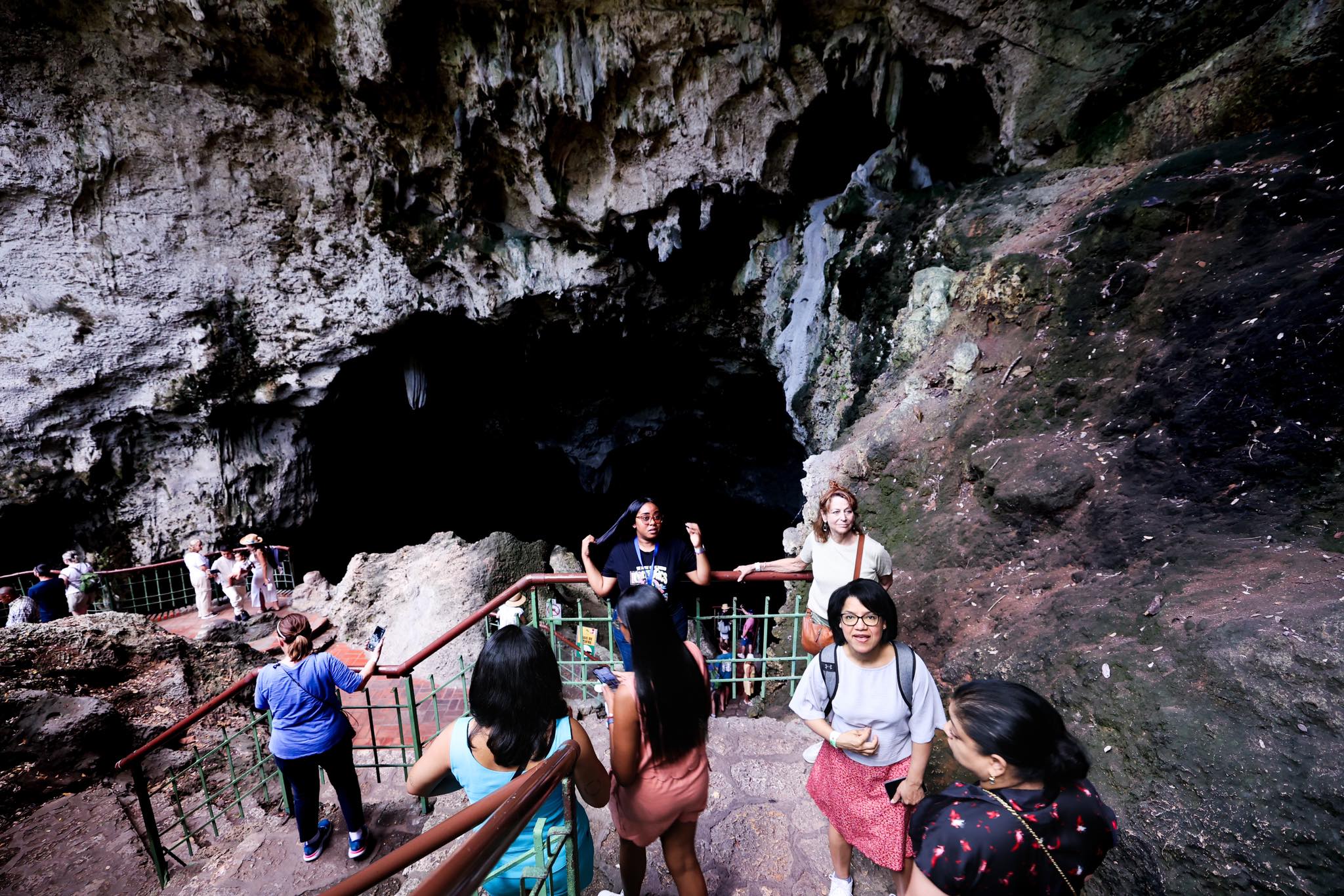
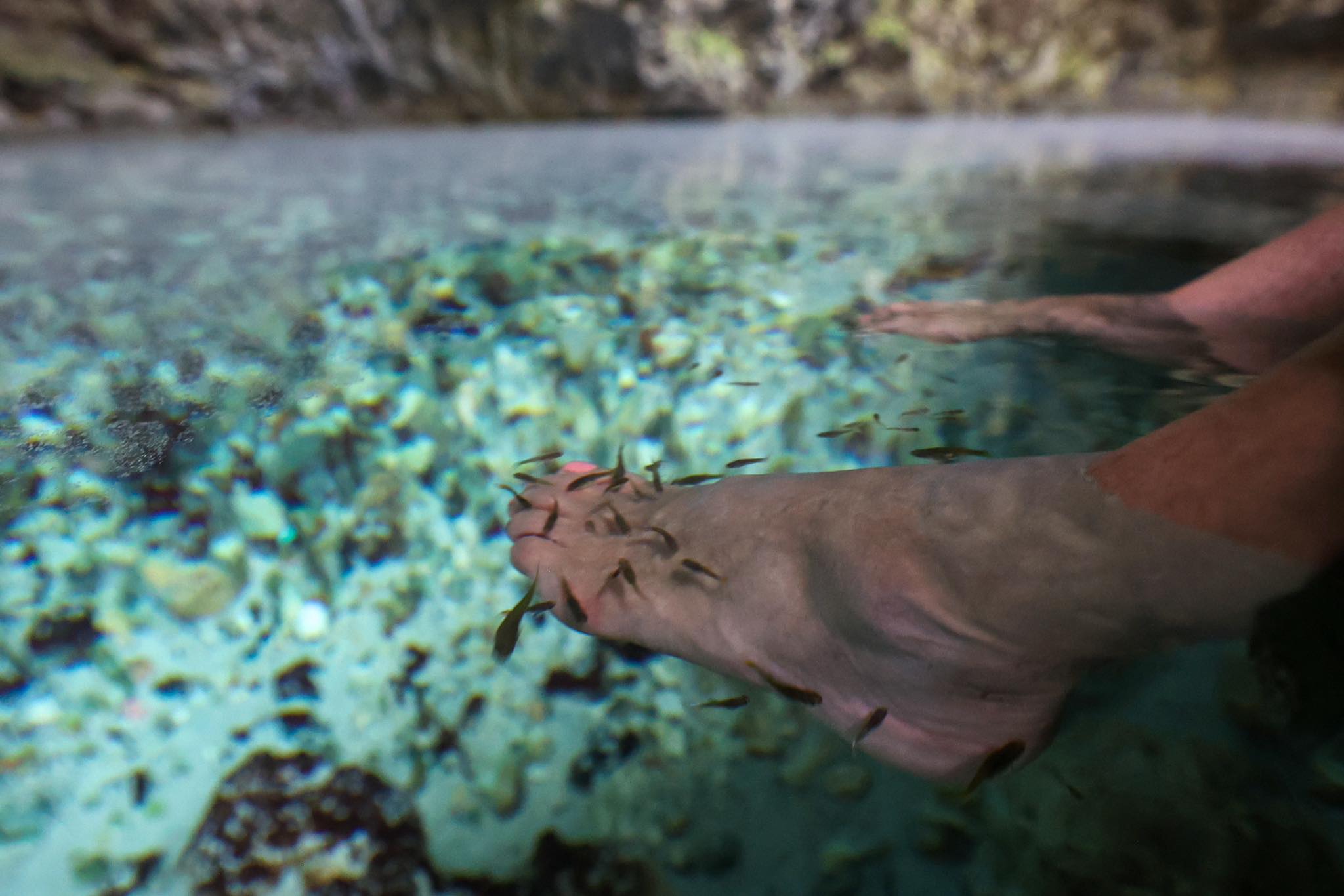
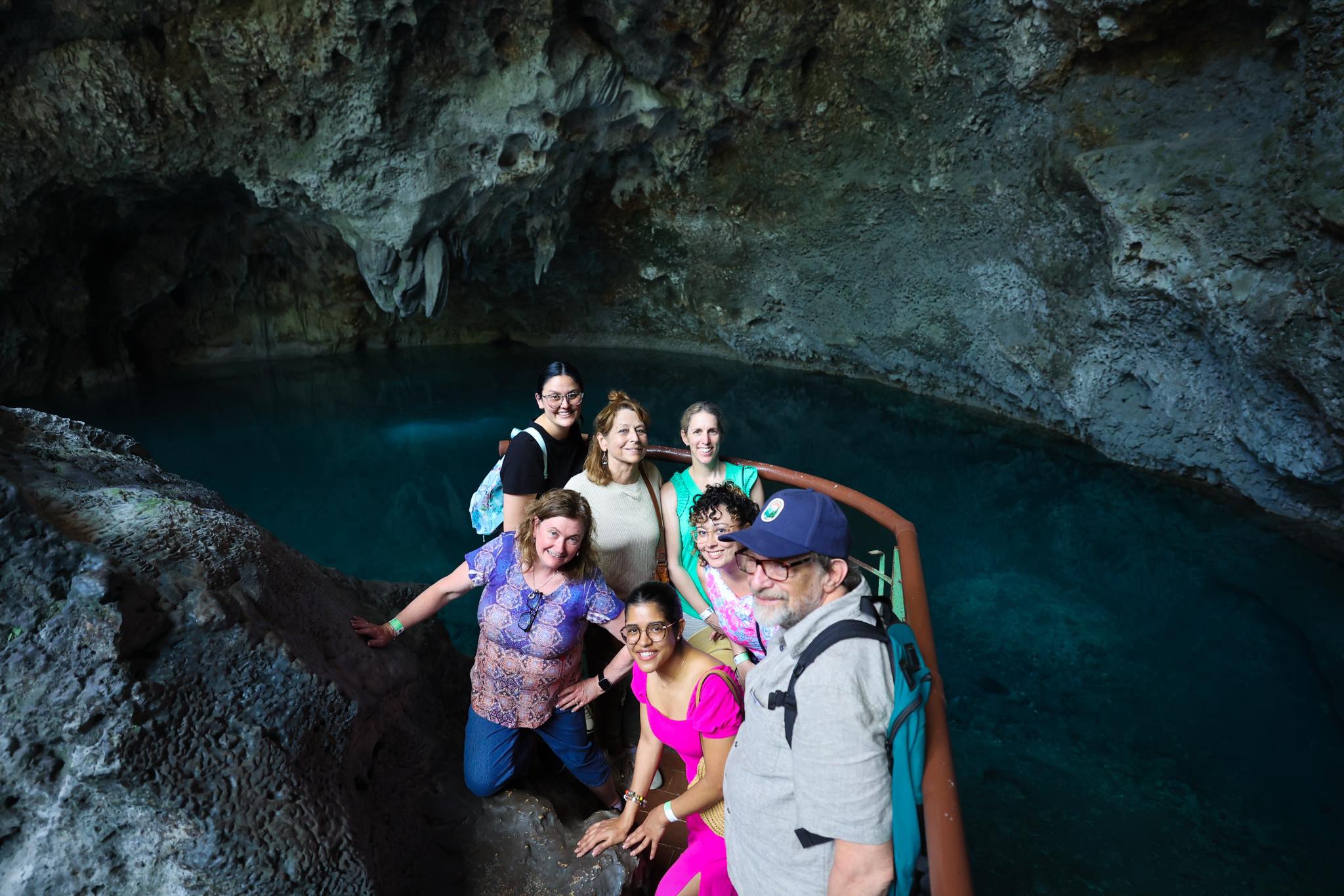
After our debrief breakfast, we maximized our remaining time with a visit to one of the country's most remarkable natural wonders—Parque Nacional Los Tres Ojos (Three Eyes National Park). Located just outside Santo Domingo proper, this geological marvel offered a fitting final exploration before our return journey to Massachusetts. Our adventure began with a descent of approximately 300 stone steps, navigating a path that wound downward into a limestone cave system formed millions of years ago when the ceiling of an extensive underground river system partially collapsed. This geological event created a series of open-air sinkholes containing three spectacular lakes (with a fourth accessible only by raft), the "eyes" that give the park its evocative name. The most striking feature of these subterranean lakes was their extraordinary color, a luminous turquoise-blue created by the unique mineral composition of the water and enhanced by the filtered natural light that penetrates the cave openings. The crystal clarity of the water revealed impressive depth, with some lakes measuring over 15 meters deep while maintaining perfect visibility to their limestone floors. A particularly memorable experience involved crossing one of the cave chambers via a hand-pulled raft—a simple wooden platform that glided across the still waters as our guide pulled us along a rope spanning the cavern. This traditional transportation method has been maintained as part of the site's cultural heritage, offering visitors an authentic experience that connects present-day tourism with historical modes of navigating these natural formations. The otherworldly atmosphere was enhanced by dramatic stalactites descending from cave ceilings and the haunting echoes that accompanied our group's delighted exclamations as we discovered new chambers and vantage points. Several members of our group took advantage of photo opportunities to capture final group images against the backdrop of these stunning natural pools, providing a visual conclusion to our documented journey. Adding an unexpected element of interactive nature experience, Lisa demonstrated particular adventurousness by placing her feet in the clear waters, where small native fish provided a natural "fish spa" experience, nibbling gently at her skin. Our guide explained that local tradition attributes medicinal properties to this interaction, with the fish said to remove dead skin while promoting circulation and healing—a unique form of natural therapy that has become increasingly popular in wellness treatments worldwide.
El Mesón de la Cava
March 22, 2025 (5:00 PM)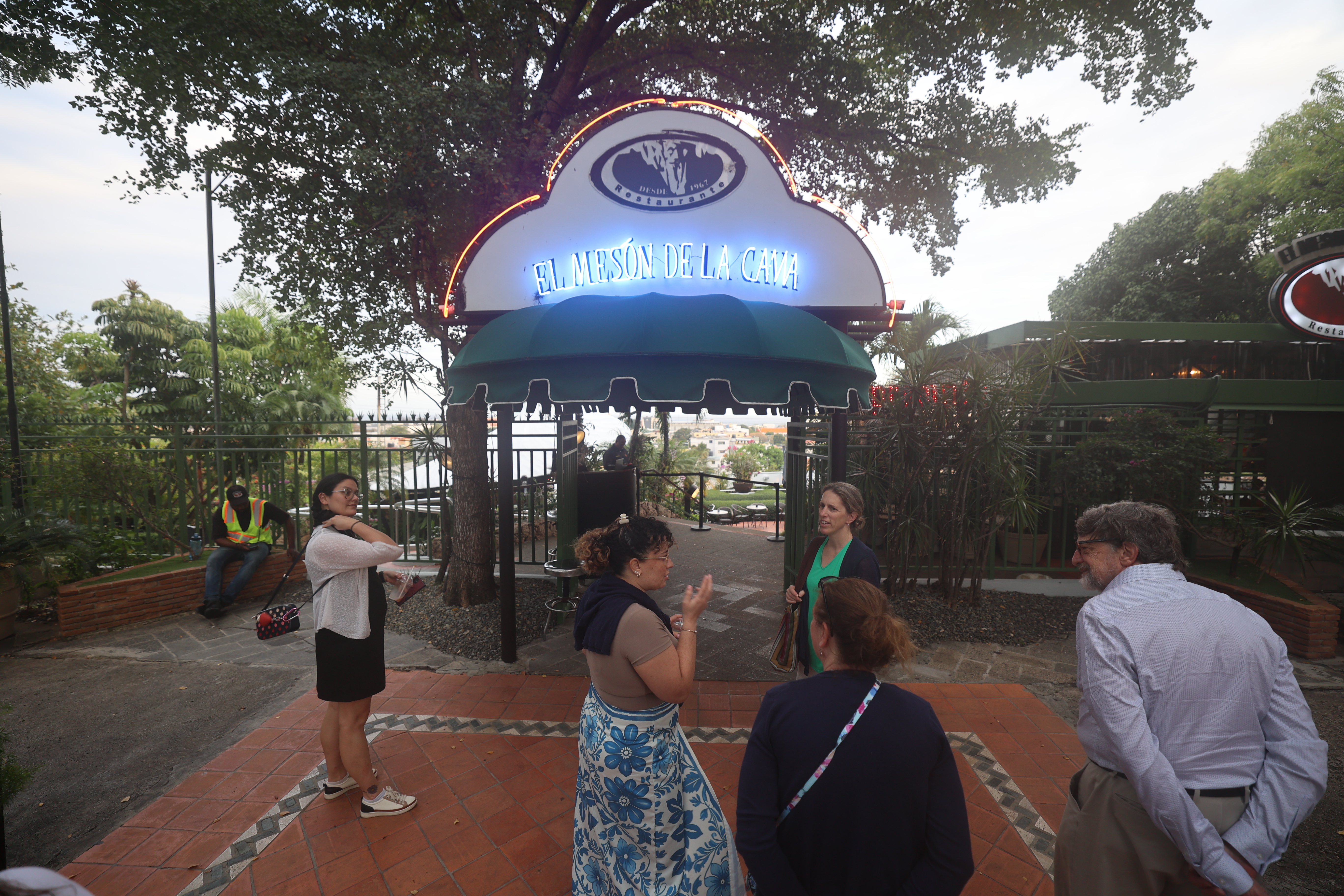
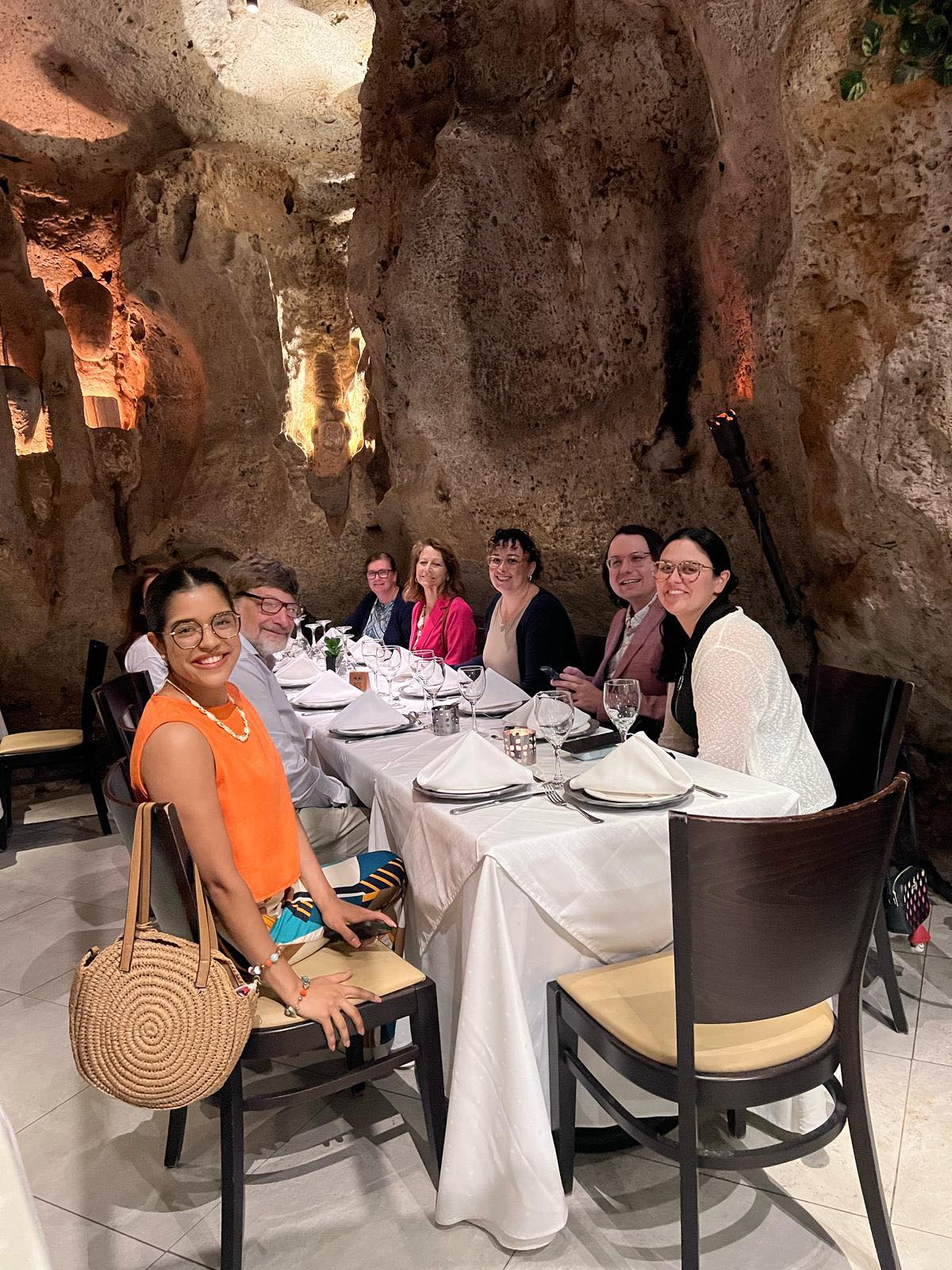
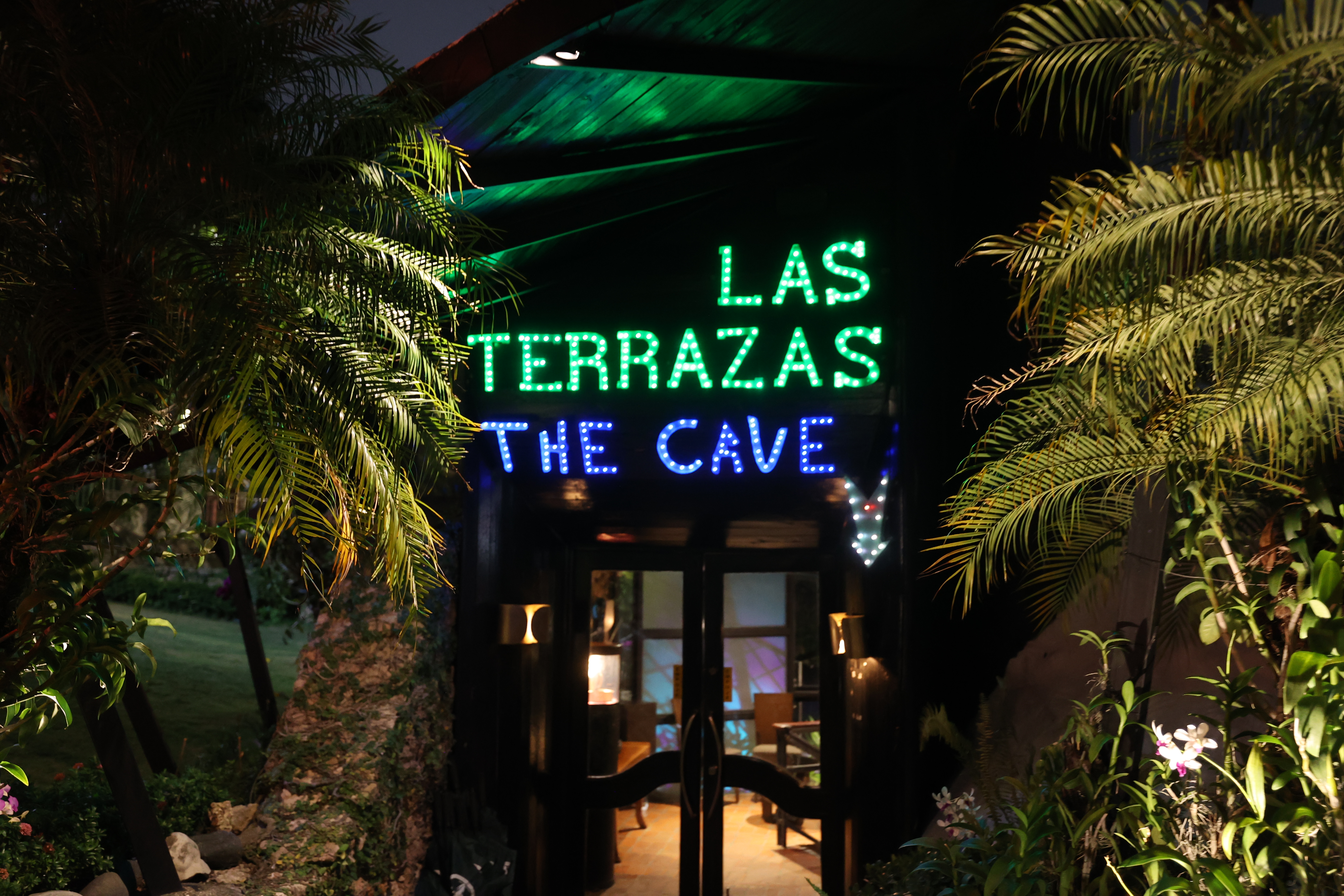
Our delegation made one final stop before heading to the airport, a dinner at the renowned El Mesón de la Cava. A distinctive restaurant situated within a natural limestone cave that dates back millions of years. This extraordinary dining venue provided a fitting bookend to our journey, echoing the subterranean beauty we had witnessed earlier in the day while offering an elevated culinary experience to conclude our Dominican sojourn. The restaurant's unique setting required descending into the earth via a carefully constructed staircase, leading us into a spacious cavern that has been thoughtfully converted into one of Santo Domingo's most distinctive dining establishments. The natural limestone formations of the cave walls, ceiling, and alcoves were dramatically illuminated to highlight their textural qualities while creating an intimate, otherworldly atmosphere. Despite the subterranean location, the space was impeccably appointed with elegant table settings, professional service staff, and modern amenities that ensured comfort without diminishing the cave's natural character. The menu showcased a sophisticated blend of traditional Dominican flavors and international culinary techniques, offering dishes that represented both the country's rich gastronomic heritage and its contemporary creative expression. Many selections featured locally sourced ingredients, from fresh Caribbean seafood to tropical fruits and vegetables grown in the fertile Dominican countryside. As we enjoyed our multi-course meal, the conversation naturally turned toward integrating our Dominican experiences into our professional and personal lives upon return. The immersive quality of this final dinner—literally encompassed by Dominican geology—seemed to inspire deeper reflections on how the physical, cultural, and intellectual environments we had encountered might continue to influence our perspectives long after departure. When the time came to leave for Las Américas International Airport, our group departed El Mesón de la Cava with a profound sense of completion.
Las Américas International Airport - Homeward Journey
March 23, 2025 (3:30 AM)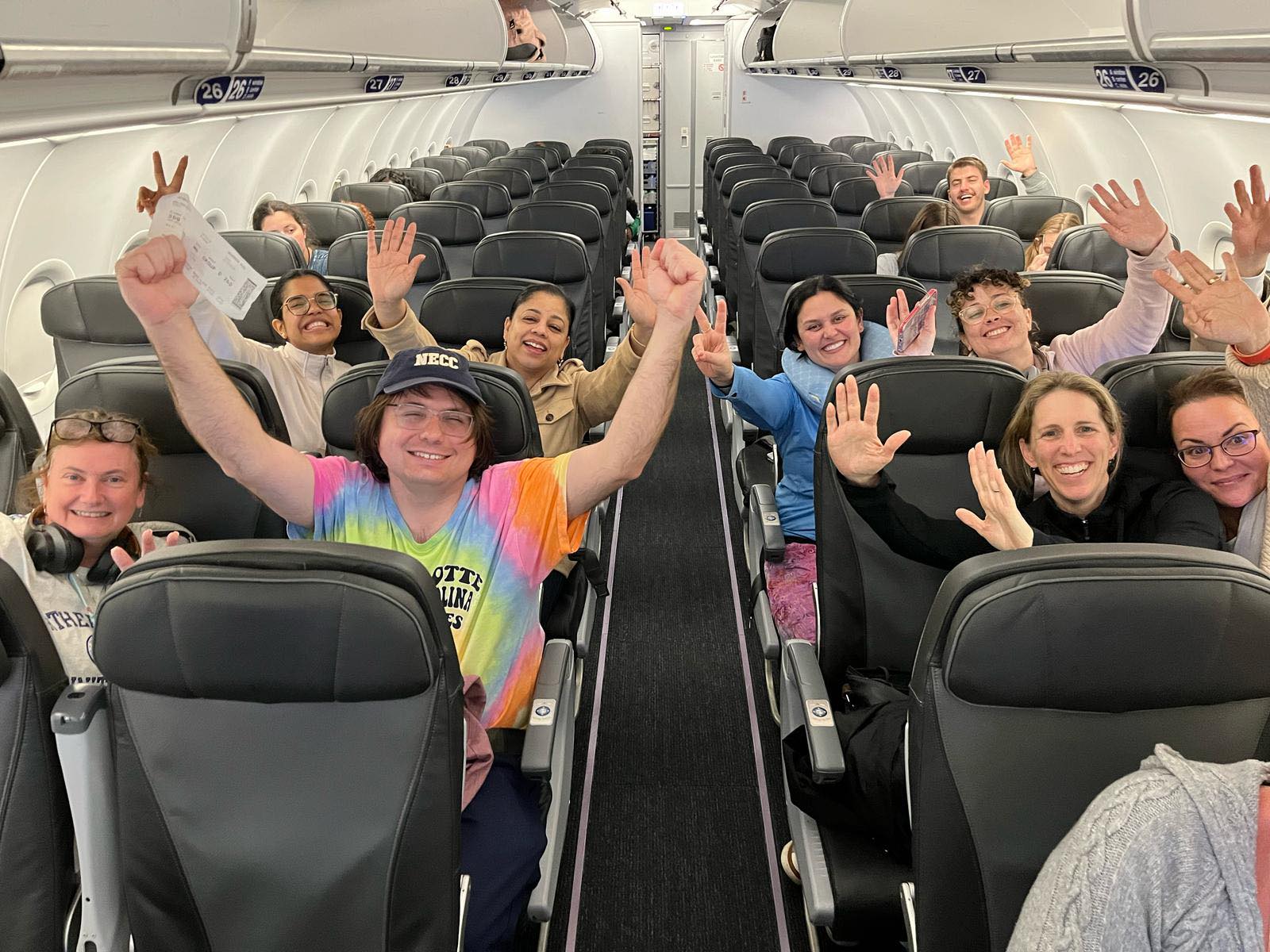
Our journey to the Dominican Republic concluded as we boarded our evening flight at Las Américas International Airport, the energetic spirit of our group captured in a spontaneous pre-flight photograph showing joyful faces and raised hands. An exuberant testament to the success of our mission. As our aircraft ascended over Santo Domingo, the city lights gradually receding beneath us, many delegation members used this time for personal reflection; reviewing photographs or engaging in quiet conversations about how to translate our experiences into actionable initiatives upon return. Others chose to rest, the productive exhaustion of our comprehensive itinerary finally catching up as the excitement of departure gave way to comfortable repose. Beyond its functional role as transportation, this return journey represented an important psychological threshold. The collective experience of traveling together, from our initial anticipatory outbound flight to this concluding homeward passage, had transformed a group of individual faculty, staff, and administrators into a cohesive team united by shared experiences, challenges, and aspirations. The cross-aisle conversations and exchanged glances during the flight reflected newly strengthened collegial bonds that would continue to serve our institutional objectives back in Massachusetts.

